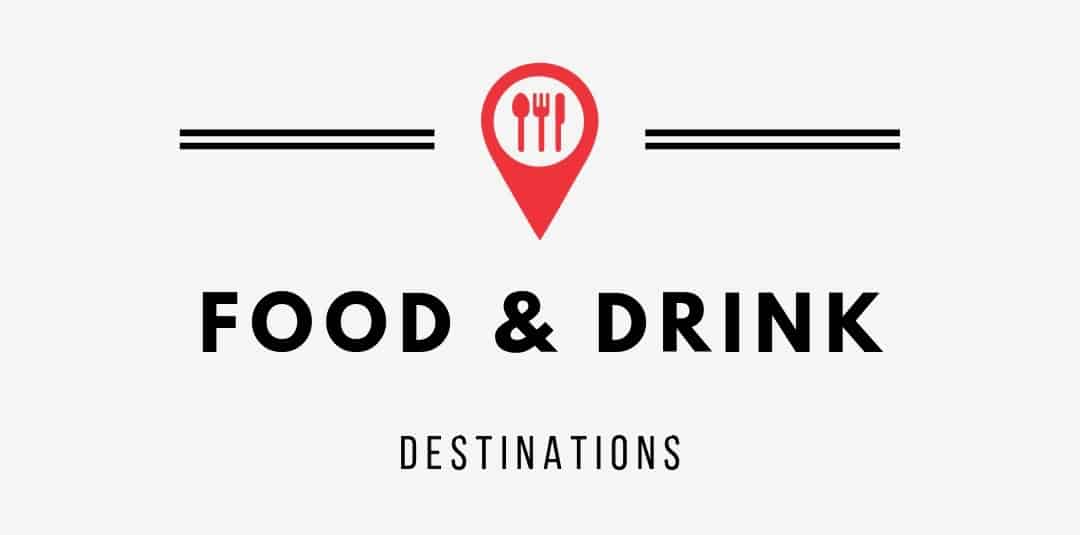
- Destinations
- Travel Guides
- For The Home
- Privacy Policy

Japan , Travel Guides
Food focused two week japan itinerary – 14 days of eating well.
We’ve taken several trips to Japan over the last decade, each time staying a bit longer and exploring a bit more than the last. I know many travelers don’t have the same flexibility in their schedules as we do. If you have the opportunity to spend two weeks in Japan, though, we want to ensure you eat well and drink well. Because Japan is one of the top culinary travel destinations in the world. In this post, I share our tips on how to plan a trip to Japan with a 14 day itinerary.
*This post contains compensated links. Find more info in my DISCLAIMER . As an Amazon Associate, I earn from qualifying purchases.
A 14 Day Trip To Japan For People Who Travel For Food
Most itineraries focus on the top Japan destinations, including Tokyo and Kyoto. There is always a focus on the “top things to see” and always includes plenty of visits to museums and temples. We include some of those activities in this guide.
But our real focus in this Japan travel blog is to focus on unique food experiences, those experiences that make Japan unique. This includes food tours , sake tastings, and plenty of recommendations on where and what to eat in Japan.
Another way this itinerary is different from others is that it goes beyond Tokyo and Kansai, which includes Kyoto and Osaka. Sure we include those cities as well. But our suggestions go a little bit beyond for a more authentic experience in Japan.
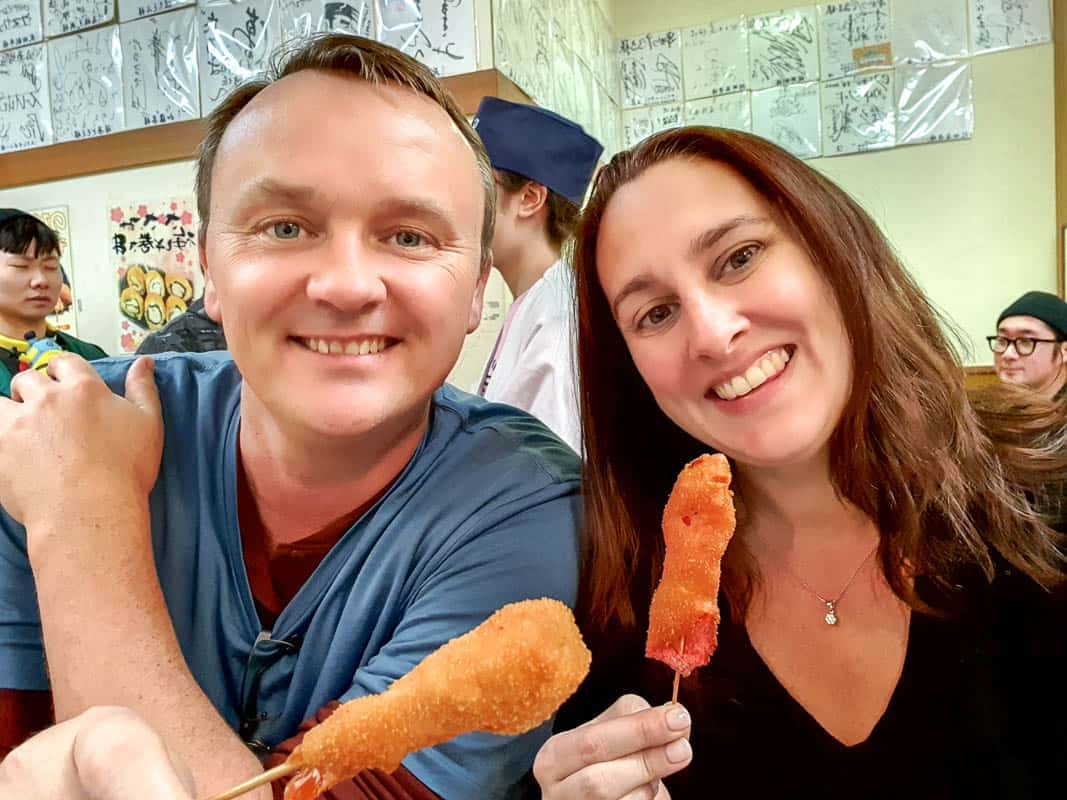
Only Have A Week In Japan? Check Out Our 7 Day Japan Itinerary
Help With Planning Your Japan Two Week Itinerary
Luggage : We used our Eagle Creek Load Warrior luggage for this trip. I always recommend packing light and if using the trains in Japan this is particularly important. Escalators and elevators are not readily available. And, most hotel rooms in Japan are pretty small. It can be hard to find space for large luggage! Even for a 2 week trip in Japan, it is possible to do laundry at least once or twice during your trip so it’s possible to pack light.
Rental cars : If you decide to rent a car in Japan, we recommend RentalCars.com . They compare prices at the top rental car companies to get you the best deal.
Rail Passes : Train travel is really efficient in Japan, particularly between our recommended cities. Check out the 14 Day Japan Rail Pass to help get you around. A rail pass must be purchased ahead of time before your arrival in Japan and is best purchased from Japan Rail Pass.
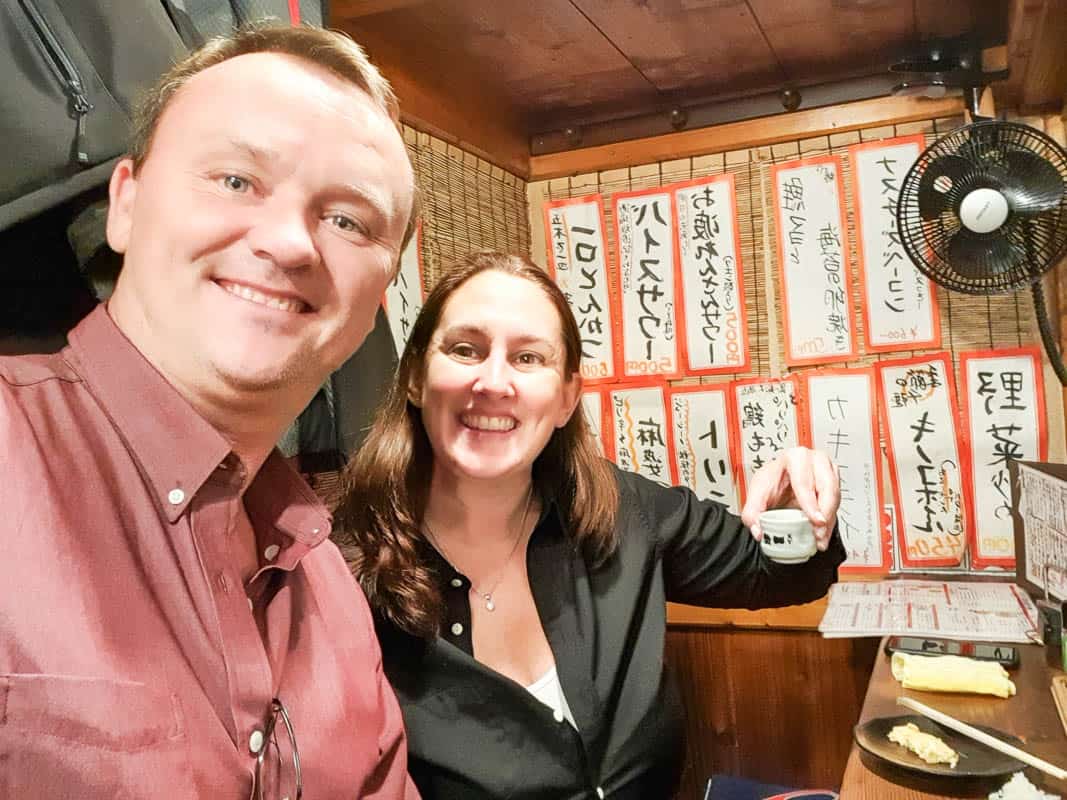
Eating at an izakaya in Kyoto
Best Japan Destinations For Food Travelers
Tokyo – Many travelers arrive or depart from Tokyo so it’s understandably on everyone’s itinerary. It’s a big city, with bright lights, and Japan to the extreme.
Osaka – The destination for food travelers in Japan. Known as Japan’s kitchen, Osaka is known for “kuidaore,” which essentially translates to eat until you drop or eat until you bankrupt yourself. This is why it’s one of our favorite cities.
Kyoto – The city of culture and temples, Kyoto is also one of the top sake producing regions in the country.
Wakayama – Just south of Osaka and Kyoto, Wakayama is often overlooked by travelers. It’s an easy addition to any Japan trip itinerary. It’s a destination with a focus on fresh fish and seafood, ramen, and Buddhist Monastery lodgings.
Kobe – The home of world-famous Kobe beef and easily visited as a day trip from Osaka or Kyoto.
Sapporo – The great white north of Japan and the city that is one of the snowiest in the world. It’s also home to its own unique cuisine unlike elsewhere in Japan.
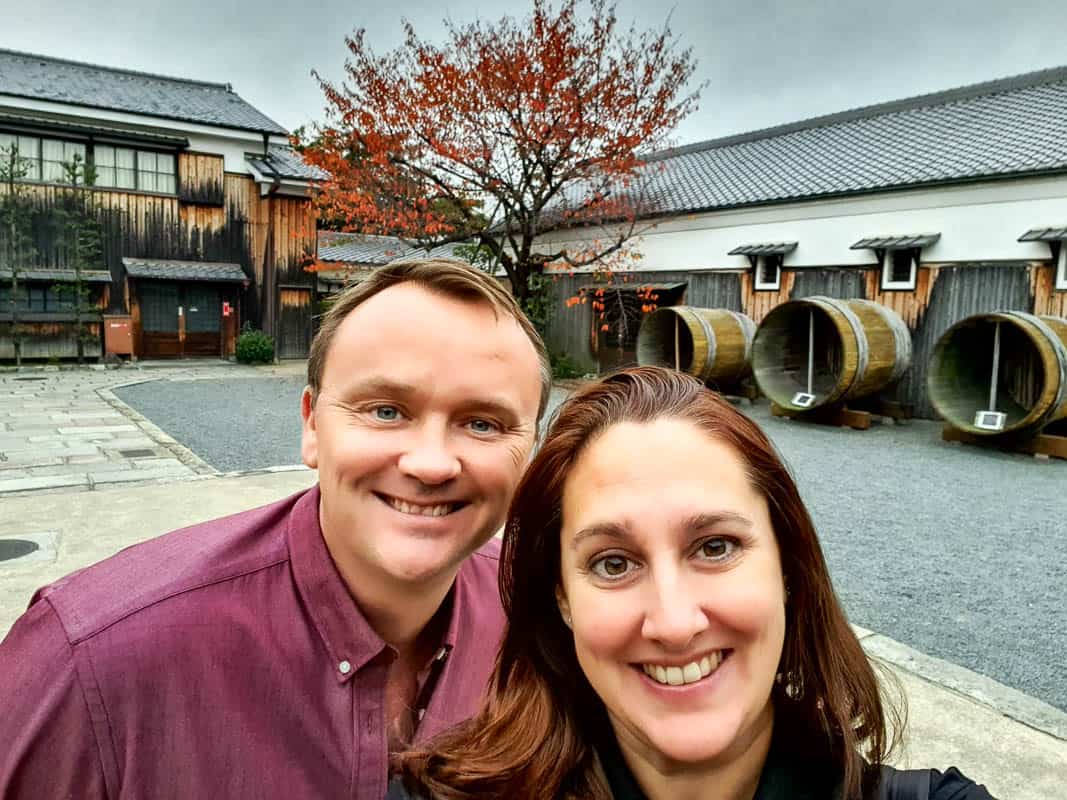
Visiting a sake brewery in Kyoto
Guided Tours Of Japan
We will provide tips on how to plan your own Japan 2 week itinerary, but I understand that Japan can be difficult to manage on your own. We have some recommendations for guided tours that included between 12 and 14 day itineraries.
Intrepid Travel offers a 12 day Real Food Adventure In Japan . It hits some of our favorite food cities in the Kansai region of Japan. That includes Osaka, Kyoto, and Kyosan in Wakayama. Along the way, travelers learn to make sushi , eat street food, and stay the night in a Buddhist monastery. These are all food experiences we’ve had in Japan and would totally recommend. We took an Intrepid Real Food Adventure in Morocco and learned a lot about the food culture. Learn more about Intrepid’s Japan tour .
As an alternative, G Adventures offers a small group tour for 14 days in Japan that departs from and returns to Tokyo. The Discover Japan Tour visits Tokyo, Kyoto, Hiroshima, and other interesting cities. There is more of a focus on culture and history than the Intrepid Tour but includes interesting food experiences. This includes visiting a sake brewery and dining in kaiseki cuisine in Kyoto. Learn more about the G Adventures Discover Japan Tour .

Eating ramen in Sapporo in Winter
Tips For Traveling to Japan For The First Time
Planning a trip to Japan for the first time can be entirely intimidating. That’s why booking a group tour can help. But, there are ways to plan an independent journey as well. We have a few key tips for first-timers to help make things easier.
Picture Menus Are Your Friend
When it comes to selecting restaurants in most touristy cities, we always recommend avoiding places with picture menus. This advice goes out the door in Japan. Many restaurants have picture menus, for both travelers and locals. The picture menus are your friend.
Almost every place we ate in Japan included picture menus with English descriptions. A few did not. Where they didn’t we relied on Google Translate to take pictures of the menu or to do an instant translation. But, this only works when you are online.
Japan Travel Guide Pro Tip
We use KeepGo for international data. It’s an international sim card that works in over 120 countries without setting up service in each country you visit. It doesn’t make a difference what kind of mobile service you have at home. You just register the sim before leaving home. It works on arrival in Japan. We had 4G access in Japan with KeepGo .
Japan Is A Cash-Based Society
Cash is still king in Japan. We were able to charge some meals, but most of the time we paid cash. This is particularly true in smaller places. We used ATMs to withdraw cash as we went. ATMs are not as easily found as in other cities. Look for them in the convenience stores like 7-11, Lawson, or Family Mart.
Don’t Try To Fit Too Much Into Your Itinerary
Imagine someone trying to see all of the US in a two week trip, impossible, right? Japan may be a smaller country, but there is so much to see and do. Even within a single city, there are loads of great activities, neighborhoods to explore, and food to eat. Don’t rush it and don’t try to cram everything into a short amount of time.
Our recommendations in this post make a great first time in Japan itinerary. In two weeks you can experience a lot of Japan, but I wouldn’t recommend visiting more than 4 cities. The movement in between, even with high speed trains, can be exhausting.
Also, consider basing yourself in a city like Osaka and taking day trips to Kyoto, Koyasan, Nara, and Kobe, to see a lot without the constant checking-in and checking-out of hotels and packing and repacking. You can access each of these cities in less than an hour from Osaka.

Visiting Temples In Wakayama
Food And Drink Experiences In Japan
There are loads of interesting and unique things to do in Japan. Some of these experiences relate to food and drink and others focus on culture and history. This is a great place to start your own Japan trip planner for how to spend 2 weeks in Japan.
- Visit a Robot Restaurant in Tokyo for one of the most unique dining experiences in the world
- Exploring traditional local markets including Kuromon in Osaka and Nishiki Market in Kyoto
- Tracking down the top street food in Dotonbori , Osaka’s food street
- Book a food tour in Osaka or a Kyoto cooking class to learn more about Japanese food culture on a half-day or full-day tour
- Eat some of the best Japanese sushi of your life, by visiting a conveyor belt sushi restaurant or a traditional sushi-ya
- Track down the best bowl of ramen in one of the official or unofficial ramen streets.
- Go Japanese craft beer bar hopping and learn about Japanese craft beer trends
- Enjoy a kaiseki meal at a traditional Japanese ryokan
- Spend the night at a Buddhist monastery and learn about shojin ryori, Buddhist vegetarian cuisine
- Eat some of the best beef in the world – Kobe beef
- Tour a Japanese sake brewery and learn how to order sake
- Spend the evening at an izakaya, a Japanese tavern, toasting over local beer and whiskey highballs
- Dine on Japanese giant crab and local seafood in the great white north of Japan
- Tour the famous Sapporo Brewery and dine on Genghis Khan

Eating sushi at a market in Osaka
How To Spend 14 Days In Japan When You Love Food
If planning your own self-guided tour of Japan, here are our recommended destinations. With a full two weeks in Japan, you can see a lot. There are two primary options here. We recommend about a half dozen cities to visit. It’s possible to visit each of them, spending approximately two nights in each.
Or, I would recommend staying in only about three cities and doing day trips. For example, you can stay in Tokyo, Osaka, and Sapporo and manage to have all of the experiences mentioned in this post over two weeks.
For each city, I recommend some of the top attractions or experiences, with a focus on food and drink. I also provide recommendations on what and where to eat and some recommended hotels. There are also links to some of our other posts for more information on some of these activities and travel tips.

Day 1-3 Tokyo
Most people start or end their trip to Japan in Tokyo. We prefer the smaller cities for more unique experiences and recommend spending more time there. At least give yourself enough time in Tokyo to beat the jet lag .
Top Attractions In Tokyo
Definitely check out the Shibuya district, one of the most iconic neighborhoods in Tokyo. If you’ve seen photos of Tokyo with loads of people crossing at a major intersection with neon lights and skyscrapers in the background – that’s Shibuya. It’s supposedly the busiest pedestrian crosswalk in the world. Stop for a katsu curry at Katsuya or hit one of the ramen or soba shops.
At night, head to the Shinjuku district, perhaps for a little karaoke and nightlife. Shinjuku is where the neon lights explode at night. There’s theater, food, bars, and plenty of people watching.
There are also two well-known bar and restaurant alleys in Shinjuku that are must-visits: Golden Gai and Memory Lane. It’s almost like stepping back in time considering much of Tokyo is covered in high-rises. Within this area is also Harajuku. This is where young people like to show off their fashion and old people like me are left to wonder why.
For a bit of culture, visit the Imperia l Palace or at least wander the gardens. Or, check out the art museums and galleries in the Roppongi neighborhood. This is also where the Tokyo Tower can provide you with a birds-eye view of the city.
Tours And Tickets For Tokyo
There are a few tours and attractions that we recommend booking ahead of time. Grab tickets for the Tokyo Robot Restaurant , one of the most popular and unique attractions in Tokyo. To make the most of your time in Tokyo, book a food tour. This Japanese Food And Drink Tour includes a tour of the world-famous Tsukiji Fish Market.
Where To Eat In Tokyo
In Golden Gai and Memory Lane sniff out late-night ramen and plenty of yakitori bars. In addition to Golden Gai and Memory Lane, there are a few other areas where you are guaranteed to eat well in Tokyo. Be sure to add a visit to Ginza for Michelin Star dining, including some of the most famous sushi restaurants in the world. Look for monjayaki in the Tsukishima district for Tokyo’s answer to okonomiyaki.
Where To Stay In Tokyo
We stayed at the Sheraton Miyako during our visit to Tokyo, but there are other options as well depending on your budget.
Park Hyatt Tokyo : One of the most luxurious hotels in the city and known for its role in the movie Lost in Translation. Check for rates here .
Pullman Tokyo Tamachi : A contemporary option in the center of Tokyo with a sun terrace. Check for rates here .
Nine Hours Shinjuku : On more of a budget, or looking for a uniquely Japanese experience, this capsule hotel is the perfect option. It’s also in the nightlife center of the city. Check for rates here .

Day 4-5 Osaka
I’m amazed to see how many sample Japan two week itineraries skip Osaka altogether. Sure, it doesn’t have the same concentration of temples and palaces as Tokyo or Kyoto, but you can only see so many temples on a trip before you get “templed out.”
Osaka is one of the best cities to visit if you love food and drink! From Tokyo, use the JR Rail Pass to hop the Shinkansen high-speed train to Osaka, Japan’s kitchen.
Top Attractions In Osaka
All of the top main attractions in Osaka are located within the city center and are accessible by train. Take a walk through the gardens of Osaka Castle or catch the view from a boat tour of the Dotonbori Canal. Explore Kuromon Market for street eats and hit Dotonbori, Osaka’s famous food street at night. At night, just wander through one of the many shopping and eating districts, including Namba, and Shinsaibashi.
Tours And Tickets For Osaka
If you want to make the most of your time in Osaka and want to experience all the main sights, pick up the Osaka Amazing Pass. It offers free admission to loads of different sites including Osaka Castle, plus offers unlimited train and bus rides as well.
Osaka is also the perfect place to take a food tour or cooking class. See our recommendations for the Best Food Tours In Osaka .
Or book tickets for Gotta. Gotta is pure Japanese-style entertainment. It’s a Japanese musical review show, which tells the story of the Dotonbori area through food and legend. Buy tickets ahead of time here . They offer three shows a day, with the last show being at 3:00 pm. The show is only 40 minutes, so it’s not a big time commitment. It’s just something quirky and unique to do in Dotonbori.
Where And What To Eat In Osaka
Between traditional Japanese dishes and Osakan specialties, there is no shortage of foods to eat in Osaka. From street food to craft beer, the city has it all. One of our favorite things to do in Osaka is to visit Daruma for kushikatsu, which is fried stuff on a stick.
Start any day eating in Dotonbori, near the canal. Then head north down the Shinsaibashi shopping street. At the top, in the Chuo Ward and near the Honmachi subway station, there are loads of great, non-touristy restaurants. On another night, head south from Dotonbori into the Namba area for plenty of standing bars and yakitori spots.
Check out these posts for more details and where and what to eat and drink in Osaka.
Osaka Food Guide – What To Eat In Osaka Japan
Dotonbori Food Guide – 15+ Must-Eat Dishes In Dotonbori Osaka
Osaka Craft Beer Guide – Drinking The Best Craft Beer In Osaka
Where To Stay In Osaka
When we visit Osaka we tend to stay a while and normally rent an Airbnb apartment. We’ve also stayed at the Sheraton Miyako . Here are some other recommended hotels in Osaka. If short on time, we recommend staying near Namba or in an adjacent neighborhood so that you are centrally located to all of the best foods.
Swissotel Nankai Osaka : Luxury, 5-star hotel, with views over the city. It’s located above the Namba station making it super convenient. Check current rates here .
Hotel Nikko Osaka : The Hotel Nikko is located in the Shinsaibashi shopping area and near the pedestrian shopping arcade that leads to Dotonbori. We’ve stayed near this neighborhood before and there are some great bars and restaurants nearby. Check current rates here .
Hotel Ichiei : For a more ryokan style experience, Hotel Ichiei is also near Namba Station and offers tatami style rooms. Check current rates here .
How Many Days In Osaka – Pro Tip
This is a question we often get. For any of our recommended Japan destinations, it’s up to you how much time you spend in each city. People often overlook Osaka, though, in favor of Kyoto. Kyoto is famous for its temples. Osaka is famous for its food and nightlife. We recommend spending more time in Osaka than in Kyoto if you love eating. Or, base yourself in Osaka for five or seven nights and visit Kyoto, Kobe, and even Nara from there. See the sites but enjoy the Osaka nightlife .
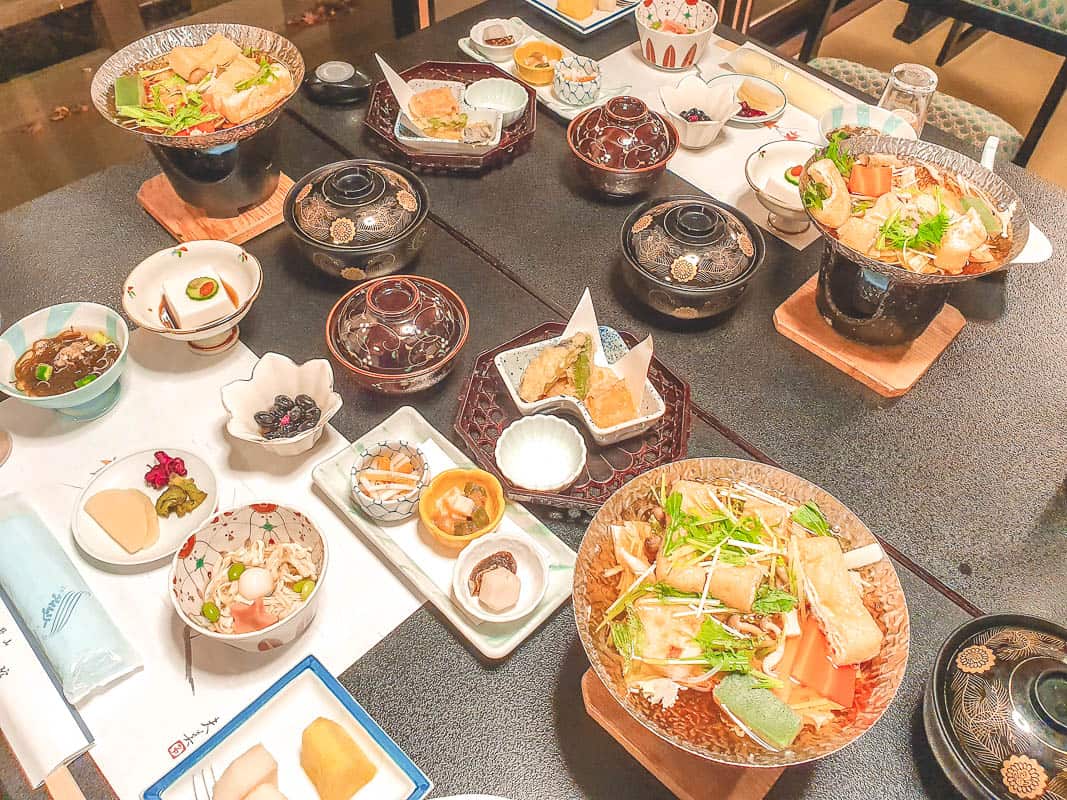
Day 6 Koyasan, Wakayama
If you can fit an overnight into your 14 day itinerary that will offer a totally unique experience, this is it. The Kii Peninsula in Kansai includes Kyoto, Osaka, and Wakayama.
Across the Peninsula are a series of Sacred Sites and Pilgrimage Routes, much like the Camino de Santiago in Spain. UNESCO recognized the region as a World Heritage Site. This makes Wakayama a perfect spot to spend the day hiking or exploring temples.
Wakayama is also a great destination for food travelers too. Koyosan is the center of Buddhism in Japan and is located within Wakayama. There are over 100 temples in Koyasan, about half of which provide temple lodging. One of the most interesting food experiences includes staying at a temple lodge in order to try their famous Buddhist Vegetarian Cuisine, known as Shojin Ryori.
Planning A Trip To Koyasan
You can train from either Osaka or Kyoto to Koyasan using the Japan Rail Pass. Once there, spend the afternoon exploring some of the famous temples. Also, take a walk through Okunoin, a famous Buddhis Cemetery. There are over 200,000 gravestones. It’s a beautiful and peaceful place to explore. (Please don’t take photos within the cemetery). There are a handful of restaurants that are known for vegetarian cuisine, which was even enough to fill Eric’s belly.
Spending The Night In Koyasan
Spending a night in the Mount Koya area is almost like an all-inclusive stay. Book at one of the temple lodgings. These are mostly simple places to stay for the night, normally with tatami-style rooms with futons on the ground. A shojin ryori vegetarian dinner is included. They do serve beer and sake, but we used it as a night to detox.
After dinner, head back to the temples to see them lit up at night. It’s quite peaceful. Then, it is time for bathing. Some of the temple lodges have private, western-style bathrooms. Others offer traditional Japanese bathing, which is sex separated, public, and nude. That alone is an experience.
It’s an early-to-bed experience. There is the option of observing a dawn ritual where the monks offer a service to practicing Buddhists. We stayed in a traditional lodge where we were the only foreigners. The entire proceeding was in a combination of Japanese and Sanskrit. As much as we didn’t understand a word, observing was fascinating.
Where To Stay In Koyasan
We recommend Jokiin , which offers all of the above experiences. They have a traditional Japanese public bath, but also offer some rooms with a private bath. All rooms are tatami-style, with futons on the floor. Book here .

Day 7-8 Kobe
Kobe City is located in the west end of central Japan. It’s a port town and hosts the 6th largest population in Japan. What most people know about Kobe is its namesake beef. It is also one of the top sake producers in the country as well. This makes it an interesting city to add to your two week itinerary.
Top Attractions In Kobe
Did you know that the Nada-Gogo, or the Five Regions of Nada, produces one-quarter of the sake in Japan. The Nada region includes Kobe, which makes Kobe the perfect place to learn about sake. They started producing sake in Nada over seven centuries ago. Try visiting the Kobe Shu-Shin-Kan Brewery, which is on the train line between Osaka and Kobe.
What To Eat In Kobe
Kobe beef is unique to Japan. The beef comes from a particular breed of cattle called Tajima-gyu. The cattle must be born and raised in the Hyogo Prefecture to be considered Kobe beef.
Eating Kobe beef in Japan is a bit of a ritual. Normally you sit at a counter and order the beef by weight and variety. The chef will often show it to you, sort of for approval, but really so that you can look and confirm the quality. The beef is cooked on a flat top grill, to rare or medium rare temperature. Organize your Kobe experience ahead of time, whether you stay in Kobe or visit as a day trip. Learn more here .
Where To Stay In Kobe
Check out the ANA Crown Plaza Kobe , which is part of the IHG hotel group. It’s close to the train station making it easy to explore the city and the surrounding area. Check rates here .

Eating Kitsune Udon In Kyoto
Day 8-10 Kyoto
One of the most popular cities for travelers to Japan, Kyoto is one of the best places to learn about Japanese culture. Kyoto means “capital city” because it once was the capital of Japan before it was moved to Tokyo. We tend to prefer the culinary scene in Osaka more, but there is still loads of good food in Kyoto.
Top Attractions In Kyoto
There are 17 UNESCO World Heritage Sites in Kyoto alone. There are hundreds of Shinto Shrines, loads of Buddhist temples, and Japanese gardens. Check out the Imperial Palace , which is free for travelers to wander through and take in all of the splendor of an ancient way of life in Japan.
Gion is one of the most popular neighborhoods to visit. It’s known for its Geiko, or geisha, culture. It’s one of the most well-preserved parts of the city with ancient houses and adorable alleyways. It is also one of the most touristy parts of the city, so be prepared.
Fushimi Inari-taisha S hrine is another popular destination and is just a short ride from Kyoto Station by train. After visiting the temples continue a little further south to the Fushimi Sake District, the sake producing area of Kyoto. There is a brewery tour and plenty of shops selling sake and offering tastings. It makes a great afternoon out of the center of Kyoto.
Tours And Tickets For Kyoto
Looking for the perfect Japanese Instagrammable moment? Book a Kimono rental for a day and then head to the temples or the narrow alleys of Gion for photos. Book a rental here .
If you love sake and want to learn more about it, check out this Sake Brewery Tour and Tasting .
Or, book an evening Food Tour in Gion and Pontchoco . See all of our recommended Kyoto Food Tours here.
What To Eat And Drink In Kyoto
Kyoto is known for its kaiseki and Buddhist vegetarian cuisine. There is also a great ramen scene. For food travelers, there’s Nishiki Market and the surrounding neighborhoods and alleyways near Shoji Jori, the main shopping street.
At night, head to Pontocho Alley, which runs along the river, west of Gion, for some of the best restaurants in the city. For someone on a budget, check out Kyoto Ramen Alley, which is actually on the 10th floor of the Kyoto train station.
Check out these related posts :
Kyoto Food Guide – What To Eat In Kyoto
How To Find The Best Ramen In Kyoto
Where To Stay In Kyoto
Like Osaka, Kyoto is also pretty easy to travel around. We stayed at the Westin Miyako Kyoto , which is lovely, with views over the mountains and the city. We’ve also stayed at a very simple guest house near the Imperial Palace. Here are some other recommended hotels in Kyoto.
Luxury Hotel Sowaka : Located at the southern edge of Gion, this is the epitome of Japanese luxury, with well-appointed rooms in a ryokan style. Check the best rates here .
Park Hyatt Kyoto : For luxury accommodations of a more western standard, Park Hyatt Kyoto is one of the top hotels in the city. Check the best rates here .
Mimaru Kyoto Horikawarokkaku : A four-star hotel in the center of some of the best eating in Kyoto and close to the Nishiki Market. Check the best rates here .
Help With Transit
If Kyoto is your last destination, then it is possible to fly out of Kansai Airport. Kansai is actually closer to Osaka, but still easy to access by train from Kyoto. Or, you can book a limousine bus from Kyoto here .
Also, consider picking up a transit pass for Kyoto. This pass can be purchased for one or two days and can be used in both Kyoto and Osaka. Learn more here .

Day Trips From Osaka (Or Kyoto)
We are not huge fans of checking in and out of hotels every couple of days. It gets exhausting. It also gets in the way of our eating. One way to be more efficient when planning a Japan travel itinerary for 14 days is to pick either Osaka or Kyoto as a home base and to see several sites and cities.
For food travelers, we definitely recommend Osaka as a home base. You can take a day trip to Kyoto to visit Gion, Fushimi Inari-taisha Shrine, and other spots all in one day. The fast train takes 14 minutes between the cities. The cheaper rapid train takes 24 minutes. Both are included in the Japan Rail Pass.
You can be back to Osaka in order to take advantage of the nightlife there. Accommodations in Osaka also tend to be less expensive.
Other Side Trips
Regardless of which city you base yourself in, you can spend four, five, or even six nights over a two week stay in Japan in either city and see a lot. Here are a few of the cities you can explore as a day trip from Osaka or Kyoto. If you don’t want to spend two nights in Kobe, it is also possible to do as a day trip from either Osaka or Kyoto.
Nara is located just between Osaka and Kyoto. There are a good number of ancient temples, but it is most known for the deer that roam the city. It’s also home to Tōdai-j, a Buddhist temple complex with one of the largest Buddha statues in Japan.
Another side trip is to Himeji Castle and then to Miyajima. Miyajima, or Itsukushima, is a famous temple located on an island in Hiroshima Bay. There is the famous Great Torii Gate, which is an orange gate surrounded by water.

Eating ramen in Sapporo in Hokkaido
Day 11-14 Sapporo
We just made our first trip to Sapporo and it was in the winter. Yes, it snowed. Even though we don’t like the cold, we loved our time in Sapporo and would definitely recommend adding to a 14 day Japan itinerary. Yes, you need to take a domestic flight there, but you can also book international flights from Sapporo to head home.
If heading to Sapporo in winter , be prepared for cold and snow. But that also means fun snow sports and skiing. The summers are warm, but not as hot as down south. The most important thing, the Hokkaido region is entirely unique within Japan and worth a visit.
Top Attractions In Sapporo
Many of the top things to do in Sapporo are located within the city center. This includes all of the best places to eat. It’s possible to walk to many of them. If heading a little further afield, the train is easily accessible. Just at the edge of the city is a town filled with onsen , the traditional Japanese hot springs. Learn more here .
Tours And Tickets For Sapporo
There are a couple of interesting activities for food travelers to Sapporo. First, check out the Sapporo Beer Factory and the Beer Garden. After a tour of the factory, enjoy a meal of the famous Genghis Khan in the garden. Learn more here . If looking to try Hokkaido’s world-famous crab, book a crab eating experience in Sapporo.
What To Eat And Drink In Sapporo
The main reason why we think Sapporo is worth a flight up north is that the food is so different and so great! Hokkaido is known for crab and other seafood. There are also a handful of dishes that are unique to the region. This includes ramen made with corn and butter, Genghis Khan, which is a lamb BBQ, and soup curry. Read more about all the great food in Sapporo here:
Sapporo Food Guide – What To Eat In Sapporo Japan
Finding The Best Ramen In Sapporo – Ramen Yokocho And More
Where To Stay In Sapporo
I recommend staying in the Susukino neighborhood of Sapporo. We stayed at the Mercure Sapporo in Susukino and couldn’t have been happier with our decision. The Mercure Sapporo is a 15-story contemporary high-rise hotel with French influences and is part of the Accor family of hotels.
The Mercure Sapporo is close to all of the best places to eat in Sapporo. It’s right in the heart of Susukino and only a few blocks away from ramen alley and Nijo Market. This was perfect for us, and really anyone who visits Sapporo. You can eat all of the best foods in Sapporo without traveling more than a few blocks from the hotel.

Hokkaido in winter
When Is The Best Time To Visit Japan
Japan is a year-round destination. Being a long country, there are a variety of climates. In the north, in Hokkaido, you have some of the top ski destinations in the winter. In the south, in Okinawa, there is a more tropical climate where it is warm in the winter.
This 14 day Japan itinerary focuses on Tokyo and the Kansai region, in the center of the country. But it also includes Hokkaido in the north. In the center of the country, expect warm summers and cold winters.
Top tourist sites in the summer can be crowded and hotels are more expensive. Winter is relatively mild, even when it snows. Tourist sites are less crowded and hotels are less expensive. The shoulder seasons of spring and fall are probably the best times to visit Japan, with one major exception. Cherry blossom season is in the spring, normally in April, and can be beautiful, but is considered the high season.
Winter In Japan
We’ve been to Japan twice when it was snowing and we don’t like the cold. But, it can be peaceful and beautiful visiting Japan in winter.
They do get some snow in the center of the country, but we’ve visited in Japan in both autumn and winter and found it warmer than expected for several days. The temperatures can change dramatically where it is warm one day and cold the next.
Hokkaido, in the north, has cooler summers but the snowiest winters in the world. If you love the cold and snow, definitely consider Hokkaido. If traveling to Japan in the winter, and you don’t like the snow, perhaps stay longer in the center of the country.
To better understand what it’s like to travel in Japan in the winter, check out these posts:
Top Things To Do In Sapporo In Winter
Getting To Japan
Many airlines fly directly to Japan. There are two airports in Tokyo. Narita is the largest but is farther from the city. Haneda is smaller, and closer to the city, but offers fewer international flights. Kansai Airport serves both Osaka and Kyoto. All of these airports are accessible by bus and train. Sapporo also has an international airport with plenty of flights.
There are two primary Japanese airlines that service these airports: ANA (All Nippon) and Japan Airlines (JAL). We’ve flown them both and they are reputable airlines. Other international airlines also service Japan.
Because train travel is so easy in Japan, it might help and it might save time, to fly into Tokyo and out of Kansai in Osaka or Sapporo in Hokkaido. This will help maximize your time on the ground, particularly if you are only limited to a two week trip.
Choosing An Airport In Japan Pro Tip
Sapporo only has one airport. Tokyo has two airports (NRT and HAN). The area around Osaka and Kyoto is also served by two airports (KIX and ITM). Just be sure to pay attention to which one you are booking. In each case, one is farther out from the city than the other. It’s most important when you are transferring back to the airport so you choose the right one. Trust us. We chose the wrong one in Osaka! Luckily we still made our flight in time.

How to Get Around in Japan
We’ve never rented a car in Japan. We’ve never found a reason to, particularly with this itinerary. There is so much to do, see, and eat within the cities or during day trips from the big cities.
Really, the best way to get around in Japan is by rail. Japan Rail offers a few different rail passes for either 7, 14, or 21 consecutive days. The rail pass is valid on all Japan Rail trains, including the high-speed trains (Shinkansen) between Tokyo, Kyoto, and Osaka.
The most important thing about the Japan Rail Pass is that you much be a resident of a country other than Japan. And you must purchase the rail pass before arriving in the country. They will actually mail you a rail pass so be sure to purchase it early.
If heading to Sapporo, it’s best to fly. Both ANA and JAL fly between Kansai near Osaka and Sapporo. It’s not all that expensive if you book ahead.
Learn more about Japanese food in our post about the Best Japanese Snacks To Try .
FAQs – PLANNING A JAPAN 14 DAY ITINERARY
This is a question we get about almost every destination. If you are American it is hard NOT to tip because it is so customary and even expected at restaurants and bars. Tipping is not customary in Japan. It can even actually be considered inconsiderate to leave a tip. It’s just better not to. In this case, it’s best to abide by the local culture and norms.
This is a hard question to answer because we understand a lot of people, particularly Americans, don’t have a lot of vacation time. Being able to spend a full two weeks in Japan gives you an opportunity to really experience the country. If you only have a week, see this post on how to make the most of your time.
It is no secret that Japan is an expensive country, but there are ways to spend money. It’s certainly possible to find accommodations is most cities for less than $100 a night. Meals can be expensive, but it is also possible to eat many meals for about $10-15 a person, even sushi! It is possible for two people to travel to Japan for between $100-150 a person and travel quite well.
Despite being a relatively small country, Japan is a highly diverse country. This makes it a year-round destination. In Winter, there’s skiing around Sapporo. Okinawa and the southern islands are great for a summer beach getaway. The Spring and Fall offer nature lovers stunning natural beauty.
Amber Hoffman
Amber Hoffman, food and travel writer behind With Husband In Tow, is a recovering attorney and professional eater, with a passion for finding new food and drink destinations. She lives with her husband, Eric, in Girona, Catalonia, Spain. Together over the last 20 years, they have traveled to over 70 countries. Amber is the author of the Food Traveler’s Guide to Emilia Romagna. She regularly lectures on social media marketing to travel professionals throughout Europe.
Leave a Reply Cancel reply
Your email address will not be published. Required fields are marked *
Save my name, email, and website in this browser for the next time I comment.
Popular Recipes
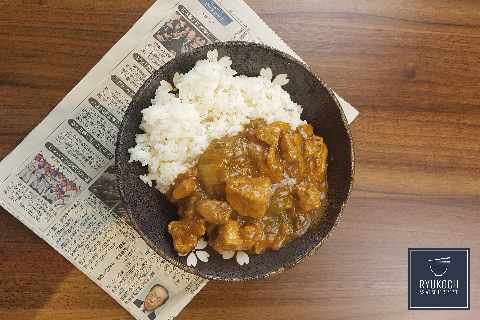
Kare Raisu Japanese Curry
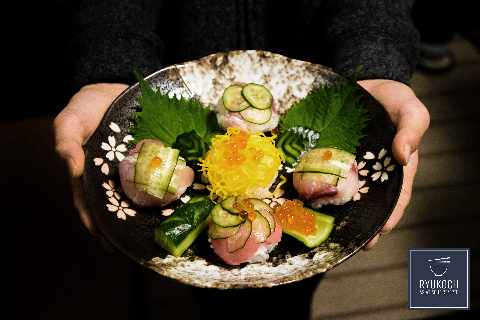
Temari Sushi Round Sushi Ball
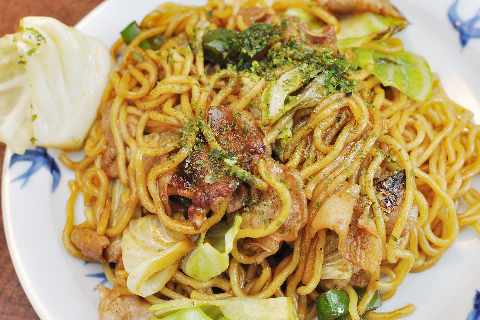
Yakisoba Stir fried noodle
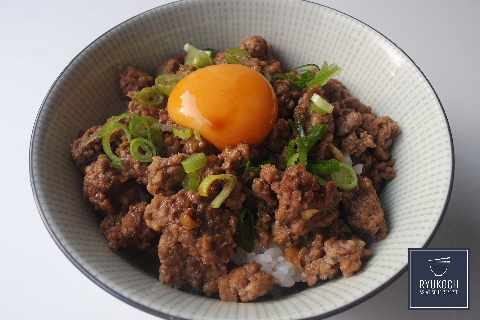
Soboro Don Japanese Rice Bowl Dish
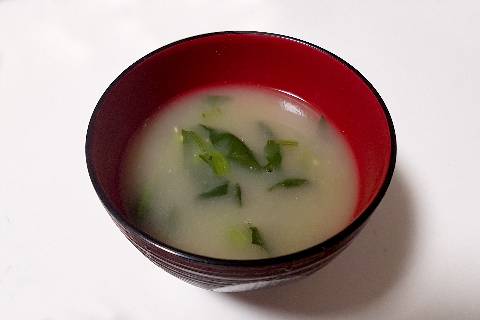
Miso Shiru japanese miso soup
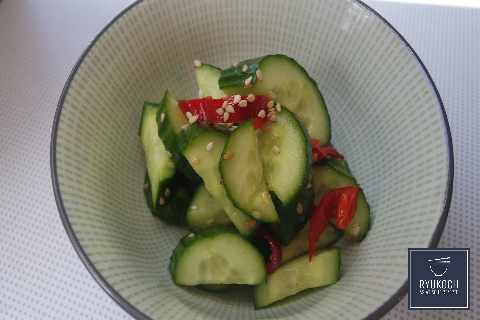
Asaduke Cucumber Salad Fresh and Tasty
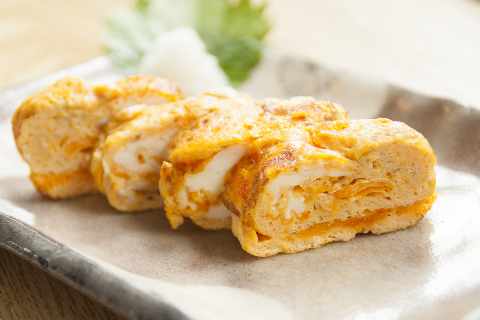
Tamagoyaki japanese Egg Roll
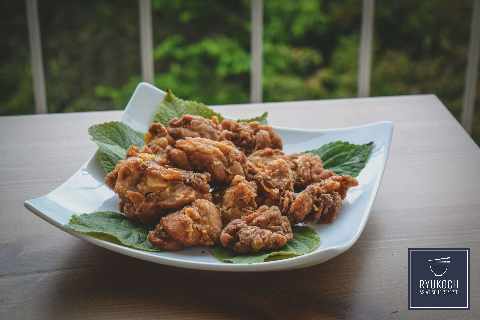
Karaage Japanese fried chicken
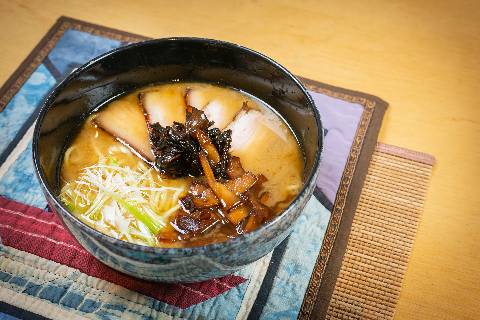
Ramen Japanese Noodle Soup
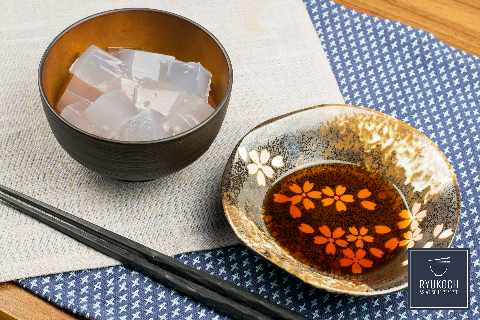
Tokoroten Cubes Japanese Low Calorie Dish
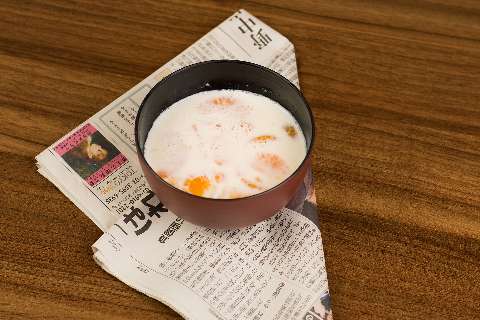
Kanten with milk and clementines Japanese Dessert
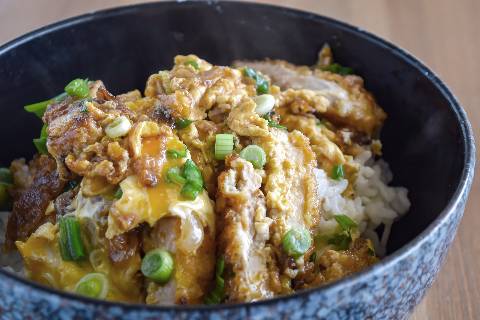
katsudon Japanese Steak Rice Bowl
New blogposts.
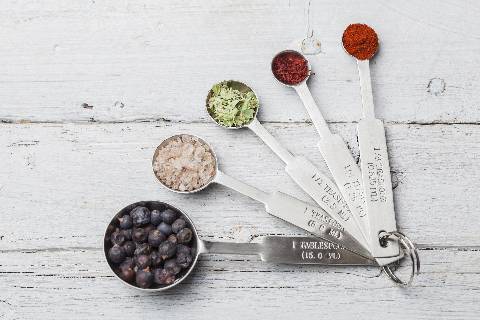
Kitchen Measurements In US and Europe System
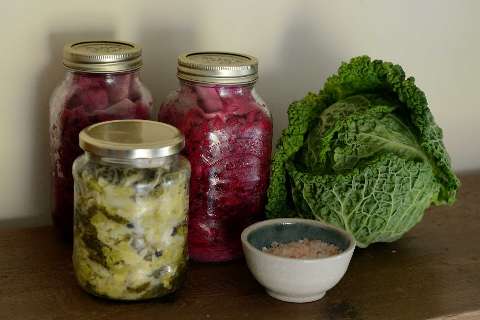
How To Ferment Your Vegetables Everything You Need To Know
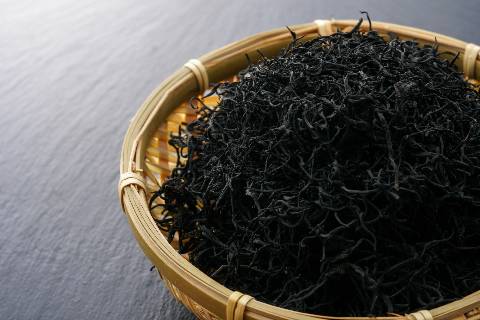
Hijiki Alga Salad
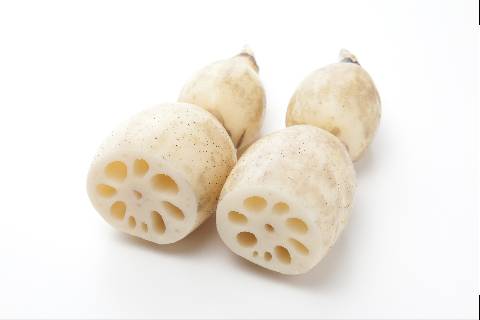
Renkon Lotus Root
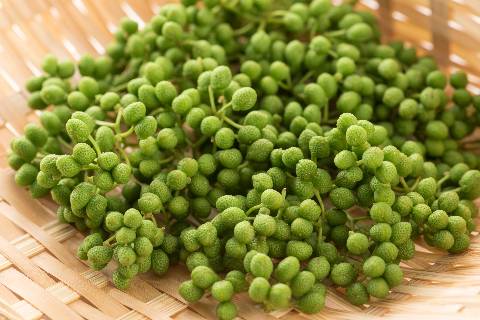
Sanshou Japanese Pepper
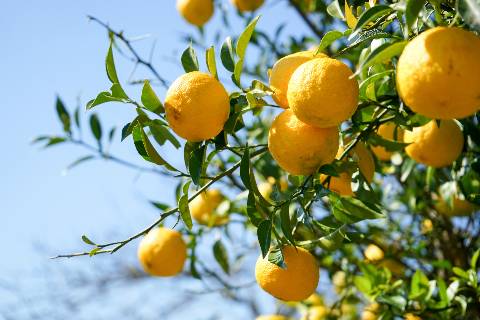
Yuzu Citrus Fruit
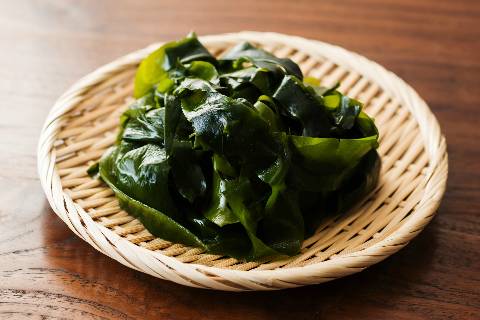
Wakame Edible Alga
Table of contents:, ryukoch japanese food and japan travel blog: your ultimate guide to japanese culinary and travel tips.
Welcome to my RyuKoch Japanese food and Japan travel blog ! Here it's all about the fascinating world of Japanese culinary and travel tips for unforgettable experiences in Japan. Get inspired by traditional and trendy Japanese recipes as well as valuable tips for your next stay in the land of the rising sun.
Japanese cuisine: recipes, spices and kitchen helpers
Japanese cuisine is known for its diversity, its healthy ingredients and the special harmony of the four flavors. In my blog you will learn everything you need to know to prepare delicious Japanese dishes yourself. I'll show you helpful tips and tricks for cooking, introduce you to the basics of Japanese cuisine and present you my favorite recipes.
But that's not all: dive into the world of Japanese spices that make up the distinctive flavor of this fascinating cuisine. Get to know the Japanese kitchen helpers that make it easier for you to prepare authentic dishes. Discover the diverse flavors and let yourself be enchanted by the Japanese art of cooking.
Travel in Japan: tips and recommendations for unforgettable experiences
Japan is a country full of history, culture and breathtaking landscapes. For many tourists it is a dream destination that offers unforgettable experiences. But traveling to a foreign country can also be challenging, especially if you don't know your way around. Therefore, it is my concern to give you helpful tips and recommendations für your Japan trip to the hand.
In my travel blog you will find information about the best sights, cultural highlights and scenic beauty of Japan. No matter if you are interested in temples, shrines, gates, modern architecture or the vibrant city life – here you will find what you are looking for. In addition, I will give you valuable advice on accommodation, transportation and other aspects that are important for a successful stay in Japan.
Let my RyuKoch Japanese Food and Japan Travel Blog inspire you and plan your next trip to the fascinating land of the rising sun. Discover the secrets of Japanese cuisine and dive into the world of Japanese culture and tradition. Have fun exploring and enjoying!
Miau, do i have your attention? I feel hungry, because Ryu is not feeding me. Please give me some delicious rating onigiris, if you like this page. ~Akina
Leave a Comment
Yummy recipes.
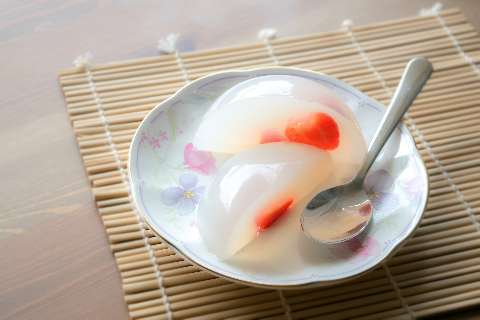
Kanten with strawberries Cute japanese Dessert
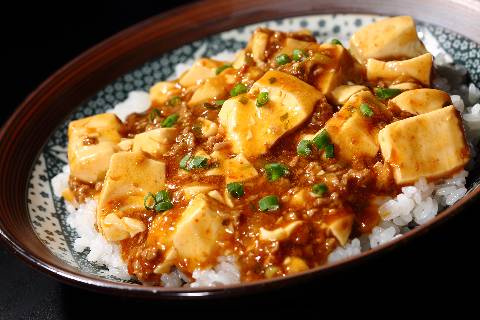
Mapo Tofu Japanese Version
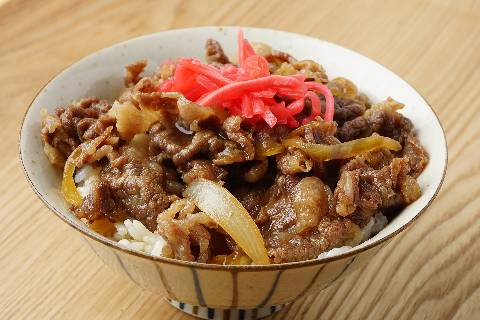
Gyudon Japanese beef doner
Interesting blog posts.
40 Must Try Foods in Japan
Conveniently listed in alphabetical order, here are the top 40 foods in Japan you need to try on your next trip to Japan!
- Japanese Curry
- Kaiseki Ryori
- Okonomiyaki
- Shabu Shabu
- Shojin Ryori
To kickstart your tastebuds with Japanese cuisine, the humble bento box is a great place to begin if you enjoy trying different delicious morsels of food. Bento boxes are lunch boxes in Japan that are generally divided up into different compartments, each with different bits and pieces to eat. Perfect for on-the-go scenarios, generally a bento will include some protein and rice, plus a range of side dishes like pickles and salads. You can easily purchase them at convenience stores, larger train stations, or department store food courts.
Try making your own bento in one of byFood's Bento Cooking Classes !
Donburi is the overarching word in Japanese for “rice bowl.” You can order a range of donburi rice bowls with different toppings, depending on your preference. “Katsu donburi” or simply “katsudon” is one of my favorite donburi bowls in Japan, featuring rice covered with a slab of panko-crumbed and deep-fried pork cutlet surrounded by a soft, soy sauce-flavored omelet with sauteed onions. Oyakodon is a popular variant simmered with chicken and eggs, meaning "mother and child". It’s a delicious and easy lunch when you’re out for a day being a tourist.
Fugu is the Japanese word for pufferfish ! If you’re game enough to step up to the plate, Japan is one of the best places in the world to enjoy this deadly but delicious fish. Many specialty restaurants in Japan have qualified chefs who can prepare the fugu in various ways such as deep-fried or freshly sliced and served as sashimi.
Originally introduced to Japan from China, gyoza is the word for dumplings in Japanese. Typically filled with a mix of meat or veggies and the right seasonings, these bite-sized dumplings are crunchy on the outside and juicy on the inside. Cooked to perfection on a sizzling hot plate, gyoza goes perfectly with a cold glass of Japanese beer or a steaming bowl of ramen.
Learn how to make gyoza yourself in a Gyoza Cooking Class !
Translating to mean “beef bowl,” gyudon is a rice bowl topped with juicy strips of thinly sliced beef and onions simmered in a sweet soy sauce flavor. With scallions, pink pickled ginger and an oozy onsen-style soft-boiled egg on top, it’s a hearty, homey and affordable meal in Japan you can find sold at many Japanese fast food chain stores. Just order from a vending machine and sit down alongside salarymen having a quick bite to eat after a long day at the office.
Join this Japanese Beef Bowl Experience to create your perfect gyudon.
6. Japanese Curry
The concept of curry was introduced to Japan in the Meiji era. Since then, Japanese curry has evolved into its own special dish with a local twist. With a gently spiced flavor and gravy-like texture, Japanese curry consists of a fluffy bed of rice doused in a generous serving of deep brown Japanese curry roux. Sometimes served with potatoes, carrots, and meat in the curry, it pairs well with a side of pickled ginger to cut through the rich curry flavor.
You can buy instant Japanese curry roux and easily make it yourself at home, too.
7. Kaiseki Ryori
Kaiseki Ryori or kaiseki cuisine is an opulent banquet-style meal in Japan. If you’ve got some cash to splash, it’s a wonderful experience featuring a series of individual Japanese dishes served up throughout the meal. Served with beauty and an essence of tranquility, each dish focuses on a different cooking technique such as frying, simmering, raw and more. Often set in a tatami room or a luxury restaurant venue, menus are carefully designed by the chef and the ingredients of a kaiseki meal are usually influenced by seasonal and local ingredients.
8. Kaisendon
With “kaisen” meaning “seafood” and “don” referring to “bowl”, a kaisendon is a rice bowl in Japan that’s topped with fresh, raw seafood. Best enjoyed at bustling seafood markets, these rice bowls can have a mix of seafood sashimi slices placed delicately on top of the bowl, or you can order ones that focus more on one ingredient such as salmon or fatty tuna.
Karaage is Japan’s fried chicken! With a moreish seasoned batter to encase the succulent chicken, it crisps up perfectly in a deep fryer while keeping the chicken inside moist and juicy. A delicious snack at any time of day or night to munch on (best with a frothy Japanese beer), karaage is an accessible and tantalizing food for everyone!
Matcha is Japanese green tea, typically founded in tea houses and whisked up to be served during a Japanese tea ceremony. While being a cultural drink, you’ll also find many matcha-flavored sweets throughout Japan such as mochi, ice creams, cookies, and more! No longer bitter when balanced with sugar, it can be divisive or delicious, depending on the tendency of your tastebuds.
The best way to enjoy match is by attending a Japanese Tea Ceremony .
11. Miso Soup
Made using fermented soybeans, warm miso soup is a common accompaniment to most meals in Japan. Somewhere between a clear and cloudy broth, miso soup will sometimes also have pieces of tofu, scallions or other additions floating around in it. Some ramen dishes will feature a miso-heavy soup broth as well, and red miso is particularly famous in the city of Nagoya with their rich slathering of miso on all sorts of dishes.
With both sweet and savory types you can try, mochi is the blanket word for “Japanese pounded rice cakes.” There are many types of such sweets including plump, sweet red bean-filled daifuku mochi pieces, triangular yatsuhashi style mochi from Kyoto, or kinako mochi sprinkled with pale brown powdered soybean dust.
Unsweetened mochi can be eaten with soy sauce and nori seaweed, or softened in miso soup. It’s a versatile but essential Japanese food you should try if you like its stretchy and chewy texture.
Make your own squishy treats in a Mochi Making Class .
13. Monjayaki
Monjayaki is the more liquidy cousin to okonomiyaki, the traditional savory cabbage pancakes that hail from the Osaka-Kansai region. With a similar but runnier batter, monjayaki is a mix of cabbage, meat and other finely cut ingredients sizzled on a teppanyaki hotplate. These savory pancakes have a different, finer texture to regular okonomiyaki slabs.
“Nabe” is a simmering Japanese hotpot . It’s a fun group activity where a communal hotpot stands in the middle of the table, bubbling with a rich broth brimming with your favorite ingredients. The broth becomes richer over time as more ingredients get added, and you can continue to top up the simmering ingredients as you go. Soy sauce, miso and other milky style broth flavors make nabe different every time.
Not for the faint of heart, natto is a healthy and nutritious Japanese food that can be divisive for its sticky, stretchy texture. Almost nutty in essence, natto is actually made from soybeans fermented with a special bacteria which gives its signature stringy characteristic. Natto is commonly eaten for breakfast in Japan with rice and sometimes a raw egg. Its taste and smell is certainly acquired, but certainly something unique and full of protein to start your day in Japan.
Simmered in a light soy sauce broth, oden is a seasonal Japanese dish that consists of a range of fish cakes and meatballs. Eaten as a light, umami-rich broth with your favorite type of fish cakes, it’s warming yet bright. You will often find oden available at festivals or convenience stores in a sort of Japanese bain marie, with all the different items warming in their soup. You can choose what you like, pour yourself some soup, and pay per piece.
17. Okonomiyaki
One of the most important dishes from Osaka, okonomiyaki are Japanese savory pancakes. Incredibly moreish and fun to sizzle on a hotplate at a cook-it-yourself restaurant, okonomiyaki is generally made from a batter of eggs, cabbage, bamboo shoots, tempura pieces, scallions, pickled ginger, and your choice of protein.
Mixed with flour and grilled in large circles, you can cut them like pizza slices once they’re flipped and cooked through. Best topped with mayonnaise, okonomiyaki sauce, more scallions and katsuobushi bonito flakes, okonomiyaki are a must-eat in Japan.
Okonomiyaki is an easy recipe perfect for beginners to Japanese cooking. Learn how to make one yourself in an Okinomiyaki Cooking Class .
18. Omurice
Omurice is a warming meal that appeals to all ages. Meaning “omelet rice,” omurice is a bed of tomato-sauce-based fried rice wrapped in a soft, eggy omelet. Add more tomato sauce or a drizzle of demi-glace over the top and voila! It’s ready to be enjoyed by the whole family, and normally eaten with a spoon.
19. Onigiri
A perfect snack for travelers on-the-go, onigiri are rice balls wrapped in nori seaweed. Easily bought individually apiece from a specialty onigiri shopfront or at a 7-Eleven convenience store, you can unwrap one neatly parcelled piece and enjoy the rice filled with all kinds of fillings like salmon, konbu seaweed, tuna mayo, teriyaki chicken and more.
Originally hailing from China, ramen is now a signature and favored dish in Japan for its versatility and ample ingredients, ramen is ideal to feed a hungry salaryman or weary traveler. The broader term for noodle soup, "ramen" usually consists of a broth, noodles and carefully designed toppings. The main topping ingredients can change as well as the broth to complement each other, often depending on the restaurant’s specialty.
Typical flavors include soy sauce, miso, or tonkotsu (pork bone broth), and a sliver of rich chashu barbeque pork never goes astray. Whether its in a tiny 5 seater restaurant or a cup noodle, ramen is a must-eat in Japan anywhere you go!
The best way to try a variety of ramen is on a Ramen Tour !
21. Sashimi
Japan is known for serving up some of the best raw fish in the world, so you have to try sashimi if you’re a keen seafood eater! Sashimi is the word for raw fish, covering many types from salmon and tuna to mackerel and kingfish. Freshly sliced, sashimi in Japan is always prepared to a high standard and just melts in the mouth. Perfect when enjoyed as juicy slices on their own or enhanced with a lick of soy sauce or a dab of wasabi.
22. Shabu Shabu
Named after the onomatopoeic phrase in Japanese for the swooshing sound of liquids splashing, “shabu shabu” is a special type of Japanese hotpot. It’s a fun group activity, where a hotpot stands in the middle of the table over a burner filled with a delicious broth. Using chopsticks to dip their ingredients, diners add different thinly sliced meats and vegetables to the broth and cook as they go. The soup gets richer as more ingredients are added, and best of all, you can pick and choose to eat what you like!
23. Shojin Ryori
Fully vegan, “shojin ryori” is Buddhist cuisine eaten by Buddhist monks in Japan. Best enjoyed as part of a humbling temple experience, Shojin Ryori is often served as a set banquet with many small dishes to try. Including different pickles, vegetables and other plant-based ingredients, shojin ryori is textural, spiritual and seasonal.
Soba is a type of Japanese noodles made from buckwheat. With a dense texture and a gray-ish color, soba noodles are delicious either when they're served up in a rich, warm broth at winter time or cold and dipped in soy sauce in summer. They’re especially satisfying when made freshly and quickly cooked. Note that soba are also full of antioxidants and health benefits.
Try making these healthy noodles from scratch in a Soba Cooking Class .
25. Sukiyaki
Boiled in a signature broth that's rich and sweetened, sukiyaki is a special type of hotpot with thin strips of meat and vegetables. Even better when made with high-quality wagyu beef, the strips are simmered in the broth till lightly cooked, then dipped in beaten raw egg before being eaten! The coating of tamago (egg) gives a rich texture.
Available in many delicious formats, sushi is one of Japan’s signature foods! From rolled maki sushi to hand-pressed nigiri sushi, these are just some types of sushi you'll find made from freshly sliced fish and seafood, served beautifully in bite-sized pieces with rice. Whether they're skilfully sliced before your eyes by a personal chef during a sushi omakase dining experience , or picked up plate by plate at a 100 yen sushi train, you have to try sushi in Japan, especially if you love fish and seafood.
For those who don’t eat seafood, there are lots of vegetarian or non-seafood meat sushi options like egg, cucumber, avocado, or beef options.
27. Takoyaki
Famous street food from the Osaka and Kansai region, takoyaki is a must-eat in Japan for anyone with an adventurous palette! They’re individual balls made from a rich batter that's sizzled over special rounded griddles. Each is filled with tempura pieces, scallions, pickled ginger and pieces of tako, which is the Japanese word for octopus! Oily, morish, and molten on the inside, takoyaki balls are best enjoyed with a generous squirt of mayonnaise and a rich brown sauce made from soy sauce and worcestershire. Not to forget the wiggling katsuobushi dried bonito flakes sprinkled over the top, dancing in the heat!
28. Teishoku
A “teishoku” is a classic set meal in Japan, usually including a main protein and several side dishes served together on one tray. It’s based on the traditional meal of “ichiju-sansai” meaning “one soup, three sides,” which includes rice, miso soup, and three sides (such as various pickles). Nowaways, teishoku is a convenient meal set served at restaurants and cafeterias around Japan.
29. Tempura
A treat for the whole family, tempura is Japan’s answer to all things deep-fried. Tempura batter in Japan is famous for being somehow so light yet perfectly crispy, and can encase all of your favorite ingredients from meat to seafood to veggies. Iconic tempura pieces include pumpkin and prawns, best enjoyed both at upscale restaurants and casual lunch joints as part of set menus or single tempura rice bowls.
Try a variety of tempura in a premium dining experience .
You’ll find tofu everywhere in Japan. Characteristically textural and made from fermented soybeans, tofu is made into all shapes and forms. Firm or silken tofu are common in many dishes, and used in both savory and sweet dishes from tofu doughnuts to little pieces swirling in your miso soup. Other tofu focused dishes include fried tofu made into pockets to form inari sushi, or deep-fried pieces simmered in a soy sauce broth with scallions, which is called agedashidofu.
31. Tonkatsu
Breaded with light panko crumbs and fried till golden perfection, tonkatsu is the word for deep-fried pork cutlet. You can enjoy slices of freshly fried tonkatsu dipped in rich tonkatsu sauce accompanied by a pile of finely slice cabbage and pink pickled ginger, or have it simmered with sumptuous chicken pieces in a delicious eggy broth over rice in an “katsudodon” rice bowl.
32. Tsukemen
Tsukemen are plain noodles that you dip into a separate dipping sauce, and all sorts of Japanese noodles can be used in this dish. Often enjoyed cold, tsukemen makes for a filling meal in summer. Dipped in a special side broth with scallions and ginger or wasabi, it can be fresh or spicy, depending on the soup.
33. Tsukemono
Tsukemono is the Japanese word for condiments, referring to pickles and other additions to a meal that are served on the side. Common tsukemono you might receive with a Japanese meal includes pickled cabbage, kimchi, or daikon radish. Sometimes with bright colors and crunchy textures, tsukemono always make for a nice accompaniment to any meal by adding a freshness and cleansing element.
Typically thick and slippery, udon noodles are iconic in Japan. They’re versatile too, enjoyed in a light soy sauce broth with fried tofu slices in kitsune udon, or replacing rice in Japanese curry to create Curry Udon. Udon noodles are popular and accessible, served in many fast food chains or sometimes as a filling side dish to a main meal. Different regions throughout Japan specialize in different thicknesses of udon, as well.
Udon is a fun noodle to make (often involving stepping on the bag of dough to knead it) and Udon Cooking Classes are great for families.
As you may know from the hit TV show Friends, unagi is the Japanese word for “eel,” and if you’re game enough to try it, unagi is truly delicious! Either in perfectly cooked slivers over a piece of nigiri sushi or simmered in a sweet soy sauce served over rice, unagi has a rich flavor that’s done well in Japan.
36. Wagashi
Japan has a lot of traditions, and sweets are one certainly of them. Wagashi are traditional Japanese-style sweets that are usually made using plant-based ingredients, meaning they’re ideal for vegans and vegetarians. In beautiful colors plus seasonal shapes and flavors, there are many types to try such as soft mochi pieces and dry candied higashi, as well as as other regional specialties.
An edible work of art, Wagashi Making Classes are a creative way to enjoy these traditional Japanese sweets.
Want to know what to eat in Japan if you don’t like fish? Available in different grades of incredible quality, wagyu is top-shelf Japanese beef. Including Matsusaka and Kobe beef, there are a few prefectures in Japan that are known for their high-quality wagyu or regional Japanese beef that you should try if you’re a serious meat eater. If you love juicy meat, it's definitely worth the price tag when perfectly seared on a teppanyaki grill.
Enjoy mouthwatering Japanese beef in a Wagyu Premium Dining experience.
38. Yakiniku
Meaning “grilled meat,” yakiniku is a kind of blanket term for Japanese barbeque. Either sizzled on a teppanyaki hotplate or on a grill over hot coals, this is a great activity meal, especially for groups. You can cook and chat while you grill away, alternating meat and vegetables to have a lot of variety throughout the meal, eating as you go.
39. Yakisoba
Grilled on a teppanyaki hotplate, yakisoba means “grilled noodles.” They’re usually mixed with a generous splash of brown yakisoba sauce and thinly sliced meat like pork or chicken plus veggies such as carrot, bean sprouts and cabbage. This flavoring is rich and savory, where its sweet soy sauce and worcestershire sauce deeply caramelizes on the grill. Great at festival street food stalls or teppanyaki restaurants.
40. Yakitori
Can you guess the food from the name? Literally translating to “grilled chicken,” yakitori are Japan’s famous grilled chicken skewers. Best enjoyed at an izakaya bar or as a snack while wandering through a festival, you can enjoy a range of different meats perfectly cooked over a charcoal grill. Classic flavor options include shio (salt) or tare (sauce).
Enjoy a large variety of yakitori on a Yakitori Food Tour for the full izakaya experience!
Regional Specialties
Not just what to eat in Japan in general, what about local specialties? The 47 different prefectures and regions of Japan pride themselves on making high-quality local ingredients, products and dishes due to the diverse and bountiful landscape of each areas throughout the country. From regional noodles, sweets, rice, sake and more, each city and prefecture has some famous local cuisine you should try. For a snapshot of local cuisine , here are a few dishes you should look for.
Ever bustling and brightly lit with neon, Tokyo is Japan’s mega-metropolis with every type of food imaginable available almost on-tap. For what to eat in Japan’s capital city, you can try some street food at the outdoor market in Ueno’s Ameya Yokocho, taste a range of colorful sweets in the modern Harajuku district, or sample some of the best fish you’ll ever eat at Toyosu Market.
If you’ve got some cash to splash, go all-in on an omakase dining experience or book in for night at a Michelin-starred restaurant . You could also try and bring home some of the famous Tokyo Banana as a souvenir omiyage sweet for your friends or family.
The cultural capital of Japan, Kyoto is full of tradition and regional flavors throughout its local cuisine, among which locally made soba and mackerel sushi are highly prized. The phrase Kyo-Ryori refers to the 5 styles of traditional cuisine, including kaiseki ryori (banquet style cuisine), shojin ryori (Buddhist cuisine) and Obanzai (Kyoto-style home cooking).
At a local tea house or nearby one of the many temples and shrines, taste local matcha sweets and Yatsuhashi cinnamon-flavored mochi. You should try yuba (tofu skin) and tsukemono (pickled vegetables) are famous products in Kyoto.
Check out our blog on What to Eat in Kyoto for more information.
The lively “kitchen of Japan,” Osaka is a bustling foodie hub where all-you-can-eat restaurants and late night bars burst with delicious local cuisine day and night. Other than the famous Kansai region cuisine of okonomiyaki and takoyaki, Osaka is also famous for its kushikatsu. These are different morsels of meat and veggies skewered, crumbed and deep-fried. Order individual skewers by the piece and enjoy with a glass of sake , or instead grill up some tastier than it sounds offal pieces in some Horumon barbeque.
Don't miss any of the best eats in Osaka, use our What to Eat in Osaka blog as your guide!
The northernmost island of Hokkaido is famous for its high-quality produce of meat, fish, dairy and fruit . Some famous dishes include Jinguisukan mutton barbeque, richly flavored Soup Curry, and miso butter Hokkaido Ramen as local specialites. There are also a number of famous sweet shops in Hokkaido as well that make delicate sweets from local, seasonal ingredients and high-quality milk products. For something different, the cuisine of the Indigenous Ainu people of Hokkaido is a warming soup for the cold winters up north.
Don't miss any of the best foods in Hokkaido; read our Top 10 Food's to Try in Hokkaido for more information.
With a mix of yatai street food stalls and Michelin-starred restaurants, there are a lot of delicious local food options in Fukuoka . As a large port city to the southwest of Japan, the region is famous for its zingy mentaiko (cod roe) and juicy saba (mackerel). Local dishes you should try include the famously creamy tonkotsu based Hakata Ramen, Mizutaki hotpot with its milky broth, or an over-filled pork offal Motsunabe hotpot.
Explore beyond the yatai with the What to Eat in Fukuoka blog post.
The southernmost island of Japan, Okinawa is a tropical paradise with its own climate and plenty of local specialties. To name a few, taste the locals' take on ramen, Okinawa soba, best topped with juicy chunks of rafute, which are deliciously braised pork belly cubes. For something a bit fresher, try goya champuru, which is a bitter melon stir-fried with other veggies, or the fusion dish of taco Rice, a dish influenced by the US.
Be sure to check our What to Eat in Okinawa post before island hopping!
Local food in the industrial hub of Nagoya is called “Nagoya-meshi” and it always packs a punch. Citizens of Nagoya are mad about miso, and put it in everything from their local Miso Nikomi Udon dishes to their deep-fried katsu pieces. Also with influence from other cultures as a historical trade center, you should try the spicy Taiwan Ramen and Chinese-influenced Ankake Spaghetti, or the local specialty of Kishimen flat udon noodles.
Passing through Nagoya? Then don't miss any of the local speciality- check our What to Eat in Nagoya guide for more info.
The capital city of Miyagi, Sendai is famous for its spectacular Tanabata festival. In the culinary sense, Sendai is best known for its local seafood, roasted beef tongue and green mashed edamame soybeans. You should also try the local kamaboko fish cakes and the oysters from Matsushima Bay.
Make sure to try all the food on the What to Eat in Miyagi blog!
Now a thriving region, Hiroshima is the home to high-quality local oysters, lemons and water eels. If you’re visiting the area, taste the local style okonomiyaki which is better known as Hiroshima-yaki, or grab a bowl of spicy tsukemen. Make sure to eat Onomichi Ramen if you’re visiting the local seaside town of its namesake, or snack on traditional Momiji Manju sweets in the shape of autumn leaves on Miyajima Island.
Try all the local specialties listed on the What to Eat in Hiroshima post.
Located in the southern prefecture of Kyushu, Miyazaki is famous for it’s local Miyazaki beef. It’s also known for growing juicy “hyuganatsu” citrus fruits and deliciously fleshy mangos in its tropical climate. You should try the local favorite dish of fried chicken and mustardy mayonnaise “Chicken Nanban” or the local “Kamaage udon” noodles, which are characteristically thick.
Read our What to Eat in Miyazaki post for more details.
The wintery prefecture famous for skiing is also known for its comfort food cuisine! Ramen made with warming miso, steamed oyaki buns, and raw horse meat sashimi are local favorites. Nagano also has a decent amount of craft beer, and thanks to its large population of tourist-frequenting ski resorts, a good selection of western cuisine as well.
Make sure to grab a hot oyaki bun and the other local treats listed in our What to Eat in Nagano post.
Lucy's Favorite Japanese Food
I’d have to say my favorite type of Japanese food is Japanese street food , or delicious morsels designed to share. Whether it be some local shop fronts selling sweets in an unassuming backstreet or shotengai (shopping street), a bustling local produce or seafood market with lots of fishy taste testers and condiments, or heaving street food stalls doing a roaring trade at a festival, I love it all!
My favorite Japanese street food is takoyaki. They’re fun to watch getting made, and they are always worth the wait. Crunchy on the outside but oozing with molten batter on the inside, these octopus balls are one of the most unique foods in the country. I’d recommend them as a top dish to try for adventurous eaters wondering what to eat in Japan on their next trip! You should also give sake a try, especially as different regions sell local brews which can be really special.
Make food one of the key parts of your next trip to Japan and try all of these traditional and region dishes with tips from our comprehensive list! From delicate pieces of sushi to all types of noodle dishes, sizzling grilled snacks, and desserts, there are so many delicious Japanese foods to try. Packed full of flavor, you’ll certainly find your favorite food in the land of the rising sun, from savory to sweet!
Mao Goto is a Japanese freelancer who was born in Hayama, Kanagawa prefecture, and raised in Tokyo. Since 2016 she lives in the Taito Ward, home to a lot of Japanese culture hotspots such as Asakusa, Akihabara, and Ueno. She has been interested in the field of English education in Japan and got her Master’s degree in March 2020. A lover of photography, travel, sweets, and cross-stitch. Contact her via Facebook .
This post may contain some affiliate links. When you click through and make a purchase we may receive some commission, at no extra cost to you .
Blessed by the bounties of the seas and enriched by the harvests of the mountains, food has held a special place in the hearts of Japanese people since ancient times. As a geographically and culturally diverse country, the regional specialties for each region vary from area to area and no matter where you go, their local delicacies are worth a try! In this article, we will introduce some of Japan ‘s best destinations for foodies that will make you say, “itadakimasu!”
▼Check out our Exciting Food Tours in Japan!
7. Kanazawa
8. hiroshima, 10. okinawa, japan wonder travel food tours , other articles you might be interested in.
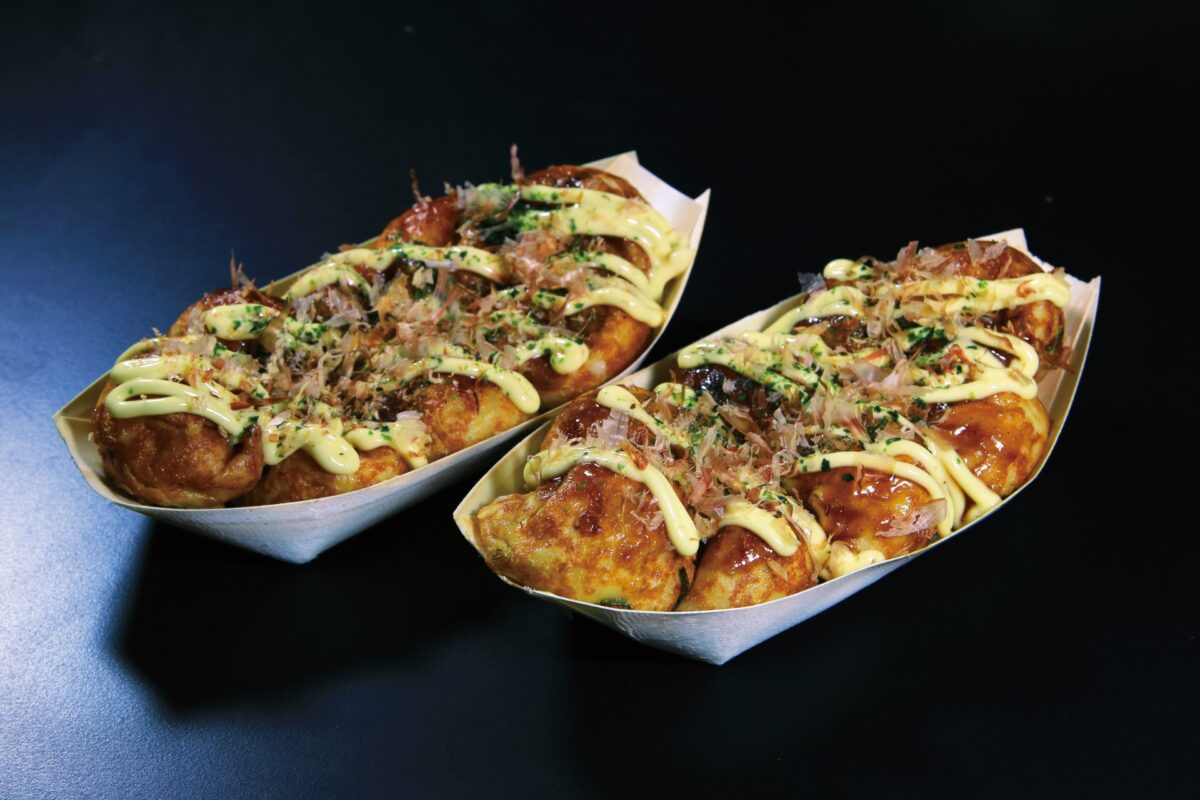
Osaka , commonly known as “the kitchen of the nation,” is one of the most famous cities in Japan for culinary delights. When people think of Osakan food, heavy, flour-based foods such as okonomiyaki and takoyaki are typically what come to mind. Especially for takoyaki, there are over 3,000 takoyaki specialty restaurants operating in Osaka, making it a mecca for the delectable fried octopus balls!
Recommended article: 10 Foods You Need to Try in Osaka
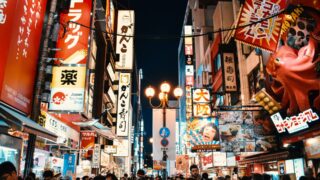
Tokyo , the capital of Japan, is another gourmet city that cannot be missed. High-quality restaurants from all over Japan and the world have gathered in Tokyo, delighting the palates of many foodies. The abundance of seafood from Tokyo Bay has led to the development of fish cuisine in the city, of which Edomae Sushi is a prime example. Sushi made with fresh fish from Tokyo Bay is rich in flavor, and the more you bite into it, the more you can taste its deliciousness. Here in Tokyo, you can enjoy both traditional and modern cuisine. If you want to get the most out of your stay in Tokyo, it is always best to check out Tsukiji Fish Market with a fun and informative English-speaking guide! Joining this tour will give you the chance to see parts of the market you would never normally be able to, and of course, eat some of Tokyo’s best seafood! ▶ Tokyo Fish Market Tour @Tsukiji – Enjoy Local Food and Drink (3 hours)

Kyoto , with its long history and culture-rich atmosphere, is known for its exceptionally high level of cuisine. Japanese kaiseki cuisine is served in Kyoto’s high-class Japanese restaurants , and ryotei (traditional Japanese-style restaurants) is often beautifully presented to the extent that one would hate to ruin it by taking a bite. Kyoto cuisine emphasizes cooking to maximize the flavor of the ingredients, and one of the best examples of this is yudofu, a dish in which you can taste the natural sweetness of the tofu. The flavor is created by bringing out the true taste of the ingredients without relying on seasonings.
Nishiki Market is one of the best places to check out if you are a foodie. You will find loads of fresh seafood and the atmosphere is great. Explore the food culture that Kyoto has to offer with a passionate and fun English-speaking guide!
▶ Kyoto Food and Drink Tour @Nishiki Street & Gion
Sapporo , one of the major cities in Hokkaido , is a cold city, and as such, it is home to many dishes that warm the body. Sapporo Ramen, a combination of the richness of miso and butter, and spicy soups are sure to whet your appetite. Hokkaido is also a dairy and seafood heaven, and meals using local ingredients such as kaisendon (seafood bowl) and buta donburi (pork bowl) are highly recommended.

Fukuoka is selected here as the representative of the Kyushu region . Fukuoka has given birth to many delicious types of cuisine, of which Hakata gourmet food is particularly famous. Hakata ramen is characterized by its tonkotsu (pork bone) base and mizutaki nabe, in which chicken broth is simmered for a long time until the soup turns cloudy, are among the many dishes with rich flavors. Many outdoor food stalls are open in Hakata, making it easy for you to enjoy Hakata’s gourmet food.

Nagoya is located just halfway between Osaka and Tokyo in Aichi prefecture , and its gourmet food is also not to be missed. Traditionally, Nagoya has a very deeply rooted culture of miso-based cuisine, and miso has had a deep influence on today’s Nagoya gourmet cuisine. Miso Nikomi Udon is a prime example as is. The red miso-based soup that goes well with the sticky udon noodles is delicious. It is the perfect gourmet dish for the cold winter season.
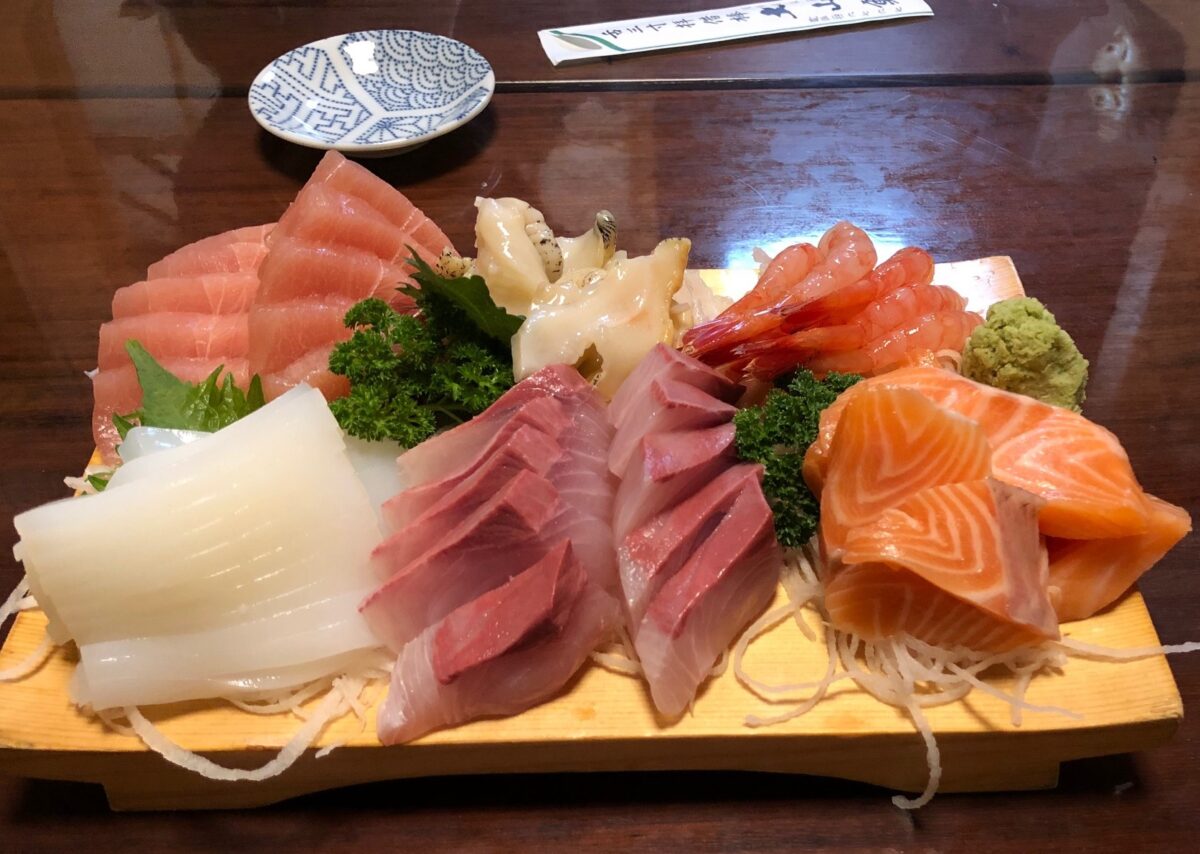
Kanazawa is Ishikawa Prefecture ‘s gourmet town. Facing the Sea of Japan, Kanazawa is proud of its cuisine that uses fresh fish from the sea. If you come to Kanazawa, kaisen-don or sashimi are some of the must-try gourmet foods. Kanazawa has a local port where fresh fish are caught and sold daily. Kaisen-don (freshly caught fish on top of a bowl of rice) and sashimi are wonderful dishes that allow you to experience the true flavor of the fish directly.
▶ Kanazawa Omicho Market and Higashichayagai District Food Tour

Hiroshima Prefecture , blessed with tourist attractions such as Itsukushima Shrine and Hiroshima Castle, also has a strong foodie culture. Facing the Seto Inland Sea , Hiroshima Prefecture is famous nationwide for its oysters. There is a very good selection of all-you-can-eat fresh Hiroshima oysters and dishes using oysters in the area. Okonomiyaki is another dish that should be mentioned here. The major differences between Osaka-style okonomiyaki and Hiroshima-style okonomiyaki are that the batter and ingredients are not mixed, the batter is soft, cabbage is cut into long pieces, and noodles and bean sprouts are added. The moment you bite into this gourmet dish, you can feel the fluffy texture and sweetness of the cabbage, which is the pride of Hiroshima Prefecture.

Kobe , a large city in Hyogo Prefecture not far from Osaka and Kyoto, is one of Japan’s most fashionable cities and is also one of the cities that attract foodies. Kobe Beef is the city’s prized specialty and is characterized by its elegant fat and sweet meat that melts in the mouth. It can be enjoyed as steak, shabu-shabu, or sukiyaki, and the taste is very satisfying. Kobe Beef producers are very particular about their beef, and all of them, from the producer to the distributor, must be authorized and registered with the official Kobe Beef Association . Their desire for people to taste genuine Kobe beef is genuine.
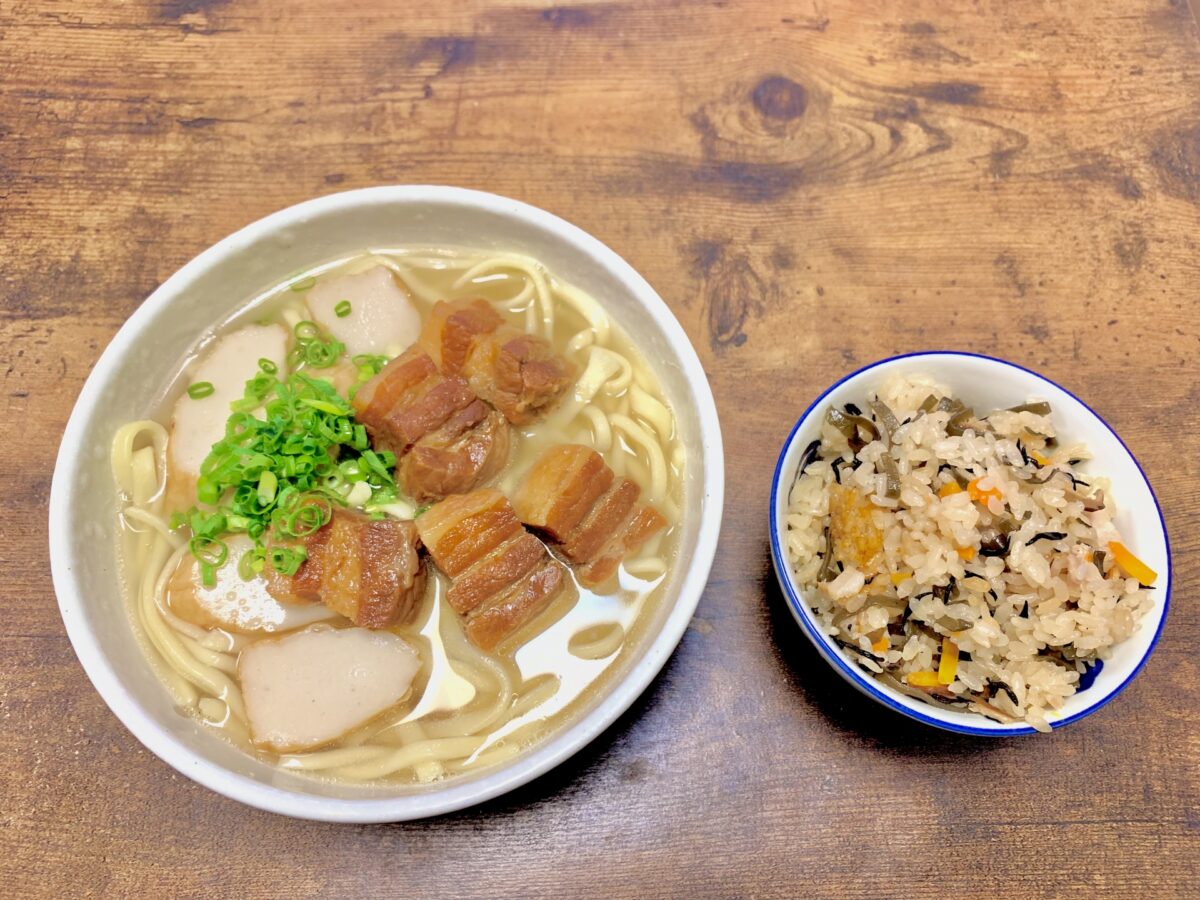
Lastly introduced here is Okinawa , a tropical island in Japan. Having a unique culture and history stemming all the way from the Ryukyu Kingdom period, Okinawa has also produced many unique gourmet foods. Since the Ryukyu Kingdom period, pork cuisine has been widely spread and developed in Okinawa. Particularly famous is “Rafute,” a block of pork belly stewed for a long time with Awamori (Okinawa rice wine) and seasonings. The sweetness of the pork melts in your mouth, and the sweet and salty flavor is so delicious that you will want another bowl of rice many times over.
In this article, we have introduced ten places across the country that are havens for foodies. The gourmet food offered in each city is often made from local products, and the flavors of the ingredients are often brought out to perfection. Come to each city and taste each region’s specialty for yourself!
Japan Wonder Travel is a travel agency that offers guided tours throughout Japan. From private walking tours to delicious Food and Drink tours, we can help organize the best tours just for you! If you want to explore Japan and learn more about the history and backstories of each area you are traveling in, our knowledgeable and friendly guides will happily take you to the best spots! In addition, we can provide you with any assistance you may need for your upcoming trip to Japan, so please feel free to contact us if you have any questions or need some help!
▶ Tokyo Tsukiji Fish Market Food and Drink Tour Explore the most lively and popular fish market in Tokyo where you will have the chance to try some of the local’s favorite street foods and sake along with your friendly English speaking guide!

▶ Shinjuku Bar Hopping Tour: Experience Tokyo’s Nightlife in Izakaya Check out the best spots in Shinjuku while bar hopping through the lively and vibrant area. Try some delicious local food and drink as you explore the narrow yet photogenic alleys that the town has to offer. Experience Japanese izakaya culture and drink in Shinjuku like the locals!
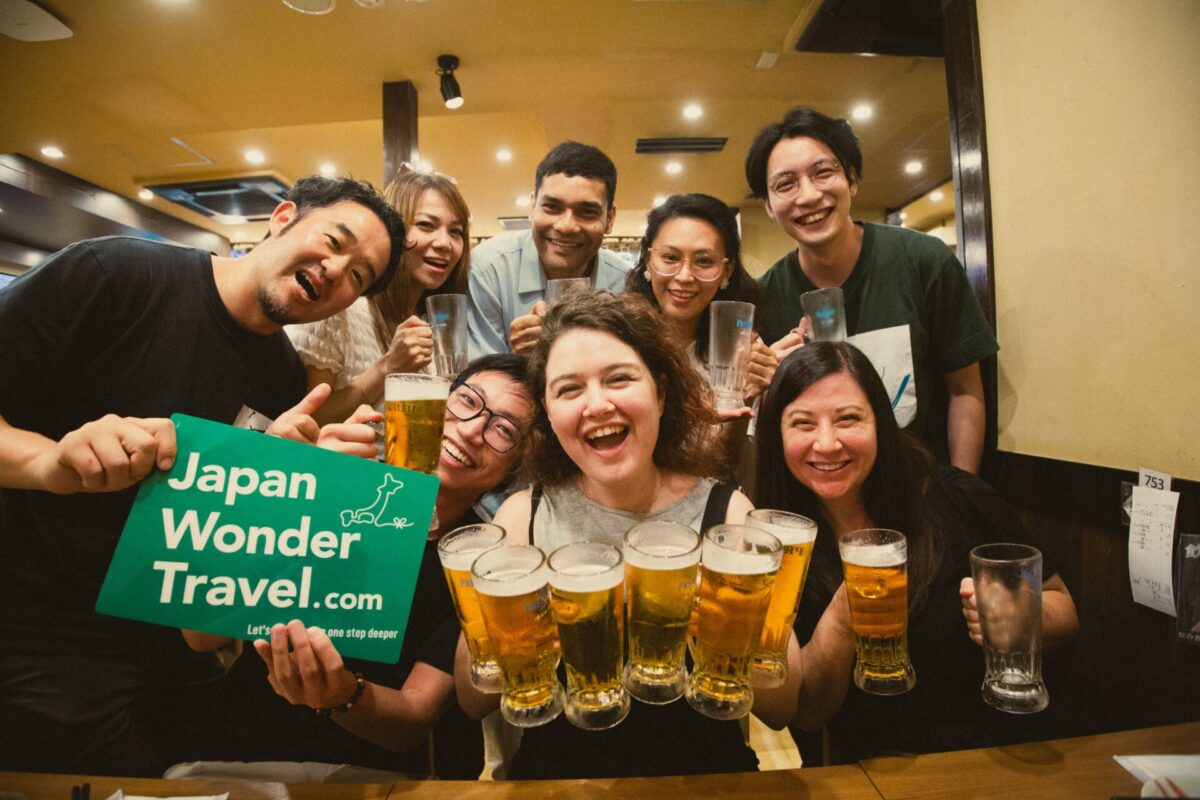
▶ Explore Nishiki Market: Food & Culture Walk If you’re looking to learn more about the culture and the local cuisine of Kyoto, this is the perfect tour for you! Take part in this Kyoto food and drink tour and explore the 400-year-old market and the surrounding areas.
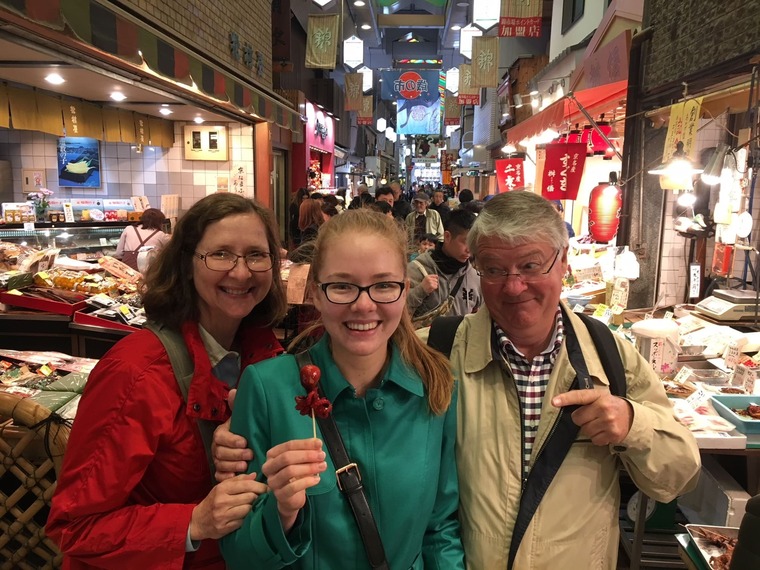
Follow us on Instagram , Facebook , Twitter , and TikTok for more travel inspiration. Or tag us to get featured!
Happy traveling!
Stay informed of the best travel tips to Japan, the most exciting things to do and see, and the top experiences to have with the Japan Wonder Travel Newsletter. Every week we will introduce you to our latest content.
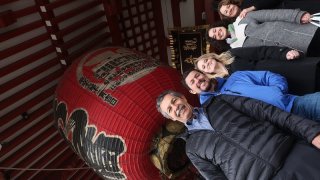
- Popular destinations
- Hidden places in Japan
- Tours and workshop
- Food and drink in Japan
- Itinerary in Japan
- Places to visit in Tokyo
- Food and drink in Tokyo
- Seasonal events
- Tours & workshops
- Tokyo This Week
- Day trip from Tokyo
- Itinerary in Tokyo
- Places to visit in Kyoto
- Food and drink in Kyoto
- Itinerary in Kyoto
- Day trip from Kyoto
- Travel tips
- Accommodation
- Cultural tips
- Transportation
- Tokyo Tours
- Kyoto Tours
- Kimono Rental
- Fukushima Tours
- Mount Fuji Tours
- Tour Package
- Travel Concierge Service
- Media Kit(English/日本語)

The Ultimate Japan Itinerary for First-Timers: From 1 to 3 Weeks

I’ve yet to meet a traveler who didn’t love their time in Japan . It’s just one of those countries that everyone loves. How can you not? The food is carefully crafted and delicious; the history and culture are both rich and long; the landscape breathtaking; and the people super friendly and polite.
Japan remains one of my favorite countries. No matter how long I visit, it’s never enough. I always leave wanting more.
But the country always seems forbidding to many travelers. It definitely still has that “exotic” stereotype that makes people think it’s hard to travel around.
Where should you go? What should you include in your Japan itinerary? Should you buy a JR Pass to help you get around?
To help you out, here are a few suggested itineraries based on my years of visiting that will ensure you see the best sites on your Japan trip — as well as get off the beaten path and get a real sense of Japanese culture!
Table of Contents
Japan Itinerary: Know Before You Go
Japan itinerary: one week, japan itinerary: two weeks, japan itinerary: three weeks.

Just be sure to get one BEFORE you go as you cannot purchase them on arrival. For more information on the pass, including how much they cost and how you can get one, read this blog post . It has everything you need to know!
Mobile Data in Japan In Japan, English isn’t widely spoken (especially outside of the major cities) so having access to the internet is vital for checking addresses, using translation apps, and looking up things to see and do. The easiest way to get data is through an international eSIM for Japan .
An eSIM allows you to access mobile data via a QR code so you can have internet wherever you are, without worrying about physical SIM cards or roaming charges. This will save you a lot of time and hassle when using apps like Google Maps, Google Translate, Instagram, and YouTube. It will also come in handy for checking menus at restaurants (since they are rarely in english).

Day 1 & 2: Tokyo Chances are you’ll be starting your trip in Tokyo , since it’s home to the country’s biggest international airport. If your trip is seven days long, activate your JR Pass right away, so that you can take advantage of the free JR trains that run through the city.
While you could easily spend your entire week in Tokyo and not get bored, here are some of the highlights:
Visit the fish market – In 2018, Tokyo’s main fish market moved to Toyosu, which is twice the size of the old one, Tsukiji, making it the largest in the world. While a lot of good restaurants moved too (Sushi Dai being the most famous), I find the place itself very stale, since you can no longer wander the floor (you look down via a walkway above; you also need a visitor’s pass to enter).
The old outer market in Tsukiji is still great though, and you can still find food and stores there too. You can wander alone and just eat and shop until you can’t anymore! Most businesses open at 6am, so it’s a perfect place to go in the morning when you wake up early because of jet lag. Food and drink tours of the Tsukiji Outer Market are available for around 13,500 JPY.
See Sensoji Temple – Sensoji is beautifully painted and sits in a scenic spot near a five-story pagoda and the famous Kaminari Gate. There’s a huge statue of Kannon, the goddess of mercy, inside the main hall. It’s always busy but is worth seeing with your own eyes. The temple is free to visit.
Drink in Golden Gai – This alleyway of back-street bars is a lively place to drink at night and has a bit of a red-light-district feel to it. It is not to be missed. Even if you don’t drink, be sure to wander about. Arigato Tours offers tours of the area where you’ll learn about the neighborhood while stopping to sample Japanese classics like sushi, yakitori, and ramen. Tours are 23,900 JPY and include a drink and dishes at four food stops.
Visit the Imperial Palace – When the emperor moved from Kyoto to Tokyo in 1869, he took Edo for his new residence and renamed it Tokyo. Though you can’t go inside (or get very close), the building is amazing. It is surrounded by lovely grounds and a park, and there’s a moat around the stone walls. You can also see the changing of the guard, though it’s a relatively low-key and unassuming ceremony.
Watch a sumo match – Kokugikan, Japan’s most famous sumo arena, hosts tournaments three times each year. The wrestling that we see today dates to the 17th century, though its origins go back even further, and it’s still one of the most popular traditions in the country. If you’re in town at the right time, this is a must-do! Tickets sell out quickly, so act fast. You can book a ticket online here (you’ll be accompanied by a guide too, so you can learn more about the tradition as it unfolds before your eyes).
If you have more time, consider taking a day trip to Kamakura to see the giant Buddha statue (Daibutsu). It is over 13 meters (42 feet) tall and dates back to the 13th century. The journey is around 90 minutes each way — and free with the JR Pass !
For delicious food, some of my favorite bars and restaurants include: Uogashi Nihon-Ichi (Standing Sushi Bar), Nemuro Hanamaru KITTE Marunouchi, Motodane, Tokyo Whisky Library, Ichiran Shibuya, and Uohama.
WHERE TO STAY IN TOKYO : Hostel Chapter Two – A small, family-run hostel not far from Skytree Station in Asakusa. I really like the shared kitchen and common room, as there’s a real social feel to them.

With its beauty come lots of crowds though, so try to visit outside of the busy summer months. Even with lots of tourists, though, the city is still magnificent and has a lot to offer. Some things to see and do that you shouldn’t miss are the following:
Visit the Golden Pavilion – This famous (and picturesque) temple dates to the 1950s, when a monk burned down the previous temple (from the 14th century) while trying to commit suicide. It’s a UNESCO World Heritage Site and one of the most-visited destinations in the country!
Explore Gion – Gion, the historic geisha district, is renowned as being one of the most iconic and atmospheric areas of town. It’s known for its traditional wooden machiya houses, narrow alleyways, cobblestone streets, and preservation of geisha (known locally as geiko) culture. Lining the main street are ochayas (teahouses where geishas entertain), small shops, and many restaurants, ranging from upscale kaiseki restaurants serving traditional Kyoto cuisine to casual eateries.
To really learn more about this amazing party of town and its past, take a walking tour of Gion . You’ll learn a ton and get a lot of context. They cost around 1,800 JPY.
Wander in the Bamboo Forest – For a relaxing break, head to Arashiyama and let the dense and towering stands of bamboo envelop you. Located near the famous Tenryu-ji temple, it’s one of the most beautiful places in the entire country. It’s not that big, but there are some hidden areas to explore. Just make sure to arrive early if you want to enjoy it without the crowds (it fills up fast after sunrise).
While there, I would also recommend visiting the Okochi Sanso Garden, which (along with the home) belonged to the famous Japanese actor Denjir? ?k?chi (1898–1962). It’s not free (it’s 1,000 JPY), but it’s really nice and has some wonderful views.
Admire Ryoan-ji temple – This is my favorite temple in Kyoto. Originally established in 1450 as a residence for a high-ranking samurai, it was soon converted into a Zen temple and is now a UNESCO World Heritage Site, with a mausoleum that houses the remains of seven emperors. Its traditional rock and sand garden is considered one of the best in the country. There’s also a teahouse where you can experience the traditional Japanese tea ceremony ( chanoyu ) as you overlook the Kyoyochi reflecting pool.
Wander the Nishiki Market Nishiki Ichiba is now one of the biggest indoor markets in town. Known as “Kyoto’s Kitchen” and spanning over five blocks, it is full of vendors selling traditional dishes from the region, classic Kyoto souvenirs, and really just about anything else. There are over a hundred stalls here, many of which have been in the same family for generations. Opening hours depend on the shop but are typically from 9am to 6pm.
To dive deeper into Japanese food culture, you can take a food tour of the market . It’s the best way to learn about all the food you’ll see, as well as the market’s history.
For a half-day trip, you can also visit Nara. It’s a small city just one hour from Kyoto. Nara was the capital of Japan in the eighth century, so there are lots of buildings and temples here that are upwards of a thousand years old (which is rare in Japan, due to fires, as well as World War II). But the real draw in Nara are the deer.
Since the 17th century, those in and around the city have been considered sacred. You can buy crackers to feed them or just watch them stroll around carefree. A guided half-day walking tour that includes all of Nara’s highlights as well as a traditional lunch is 11,500 JPY.
While you’re here, don’t miss a visit to Todai-ji. It’s the world’s largest wooden building and is home to a 16-meter (52-foot) Buddha statue. It was built in 738 CE and is now a UNESCO World Heritage Site. Admission is 600 JPY.
WHERE TO STAY IN KYOTO : Backpacker Hostel K’s House – A fun, social backpacker hostel in a great central location. The rooftop terrace is a cool spot to hangout and meet other travelers after a day of exploring.

Don’t miss Osaka Castle though. While it’s not the original (this version dates to 1931), it’s nevertheless an impressive sight. It’s home to a small but insightful museum and an observation deck that offers some picturesque city views.
And be sure to stroll down Dotonbori (ideally at night), the main street, which is lined with restaurants, stores, and tons of neon lights and signs. A guided walking tour that includes Dotonbori as well adjacent neighborhoods is 6,500 JPY.

Today, Hiroshima is thriving . Don’t miss the Atomic Bomb Museum, which depicts the history of the city before and after that fateful day. It has photos, artifacts, videos, and information about the effect of radiation on the population. It’s a sobering experience but one that should not be missed.
If you feel like getting out of town afterward, head to Miyajima , an island that offers a place to hike and enjoy nature. You can also take a cable car to the peak of the mountain to take in the view. A one-way ferry ride to the island takes 10 minutes and is free to JR Pass holders.
WHERE TO STAY IN HIROSHIMA : Roku Hostel – A cozy, small hostel with a rustic atmosphere and design. It feels like you’re staying with a friend here, and the beds are super comfy too.

If you like history, don’t miss the Hida Minzoku Mura Folk Village, home to a collection of traditional thatch-roof houses that you can enter to further immerse yourself in the country’s past.
This city (and region, really) is famous for its Hida beef, a high-fat variety that’s even better than any A5 Wagyu you might have. It just melts in your mouth. Be sure to have some while you are here!
The Japanese Alps are not far from here as well, so if you love hiking and want to extend your time in the region, head to Kamikochi for a day hike or overnight trip. It’s just an hour away and has both easy and moderate trails, which are open from April to November. Hiking trails can also be found in Hakusan National Park (also just one hour away by car).

One of the more unique temples in Japan is here too: Ninja (Myoryuji) Temple. While the temple wasn’t home to actual ninjas, Myoryuji was built as a defensive structure (strict laws forbade local lords from building defenses, so they were hidden in the temple to circumvent the rules). These include hidden rooms, secret tunnels, and a maze of staircases and halls to confuse enemies.
If you need a break from exploring cities, Hakusan National Park, home to Mount Haku, one of the three holy mountains, is just an hour south of town.

If you’re here in April, there are incredible cherry blossom displays that are famous in the region. And, just like Takayama, Matsumoto is close to the Japanese Alps, so you’re just a stone’s throw from some of the best hiking in the country.

There are tons of hotels (both modern and traditional) that have their own hot springs (often both indoors and outdoors). It’s the perfect place to wrap up a trip, relax, and take in the views.
In addition to getting a copious amount of R&R, be sure to ride the cable car up the mountain for even more amazing views. The area is surrounded by craters from an inactive volcano that erupted 80,000 years ago (not to be confused with nearby Mount Fuji, which is an active volcano), and you’ll find lots of vendors at the top selling eggs cooked in the sulfurous waters. It’s said the eggs prolong one’s life by seven years, so feel free to give them a try!
If you prefer to hike up instead, the trail is open between July and September, with the trek taking anywhere from 5 to 12 hours, depending on your level of fitness. Typically, hikers leave at night in order to arrive at the summit by dawn. There are little shops along the way that sell food and even beds you can rent in advance if you want to split your journey up. Just make sure you do your research and prepare in advance as it’s a tough hike!
If you really want to play tourist, you can also ride a mock pirate ship around the lake for more views of the mountains, and Mount Fuji in particular.
Full-day tours around Hakone that include all the main sights cost 14,800 JPY.
WHERE TO STAY IN HAKONE : Hotel Green Plaza – With gorgeous views of Mount Fuji, a huge buffet dinner (with both Western and Japanese options), and a private onsen where you can relax and enjoy the view, this is one of the best places to stay in Hakone if you want value but don’t want to break the bank.

Using the suggestions above, here’s how I would organize your itinerary:
- Days 1-3 : Tokyo
- Day 4 : Mount Fuji or Hakone
- Day 5 : Takayama
- Days 6 & 7 : Kanazawa
- Days 8 & 9 : Matsumoto
- Days 10-12 : Kyoto
- Days 13 & 14 : Osaka
- Days 15 & 16 : Hiroshima

If you do want to spend a few hours in Hakodate, don’t miss the Morning Market, where you can find lots of fresh seafood. You can also visit Fort Goryokaku, the first “Western”-style fort in the country.

Be sure to stop in at the local Beer Museum too, owned by Sapporo Breweries (the oldest beer company in the country). It showcases the history of beer in Japan and how the business got its start. If you’re a whiskey fan, stop by The Bow Bar, home to some rare (and expensive) whiskeys and considered one of the best such bars in the world.
What I love about the city is its location. This region has some of the best hiking in the country. There are plenty of hills and mountains, offering options for both day hikes as well as overnight trips. Some highlights include Mount Me-akan, Mount Asahim, Mount Mashu, and Nishibetsu-dake. For the best views of the city, head to Mount Moiwayama. It’s just a 30-60-minute hike to the top, though there is a cable car you can take as well.
And if you’re visiting in the winter, hit the slopes! There are over a hundred ski resorts in Hokkaido. You can rent skis (or a snowboard) for around 10,000-18,000 JPY. Lift prices are usually 4,000-6,000 JPY per day. In the winter, don’t miss the annual Sapporo Snow Festival. It’s held every February and draws over two million visitors. There are ice sculptures, igloos, live music, and delicious local foods on offer.
Additionally, be sure to take a day trip to Otaru, where you’ll find some of the freshest uni in the whole country (this is the main area where the famed Hokkaido uni is caught). Go hungry and visit the markets, stalls, and shops around there.
WHERE TO STAY IN SAPPORO : Waya Hostel – This is a laid-back, colorful hostel with a social atmosphere that makes meeting people a breeze. It has a homey, DIY feel and is perfect for budget travelers looking for a no-frills place to crash.

There is a ton to see and do in Japan , and you could easily spend another month here and still just scratch the surface (we didn’t even get to Okinawa and the islands!). And while these itineraries are a bit fast-paced, Japan isn’t cheap, so budget travelers need to move around the country quickly to avoid breaking the bank.
But no matter how long you visit, you won’t be disappointed. Japan is an amazing, beautiful, and unique destination that I never get tired of visiting. While it’s not as affordable as its neighbors, there are still plenty of ways to save money , and it’s definitely worth spending the time (and money) visiting. You won’t be disappointed!
Just make sure to get your Japan Rail Pass before you go!
Book Your Trip to Japan: Logistical Tips and Tricks
Book Your Flight Find a cheap flight by using Skyscanner . They are my two favorite search engines, because they search websites and airlines around the globe, so you always know no stone is left unturned!
Book Your Accommodation You can book your hostel with Hostelworld as they have the most comprehensive inventory so they are best for booking a hostel. If you want to stay in a hotel or guesthouse in Japan, use Booking.com as it consistently returns the cheapest rates for guesthouses and hotels.
Don’t Forget Travel Insurance Travel insurance will protect you against illness, injury, theft, and cancelations. It’s comprehensive protection in case anything goes wrong. I never go on a trip without it, as I’ve had to use it many times in the past. My favorite companies that offer the best service and value are:
- Safety Wing (best for everyone)
- Insure My Trip (for those over 70)
- Medjet (for additional evacuation coverage)
Looking for the Best Companies to Save Money With? Check out my resource page for the best companies to use when you travel! I list all the ones I use to save money when I travel — and I think they will help you too!
Be sure to check out the Japan Rail Pass if you’ll be traveling around the country. It comes in 7-, 14-, and 21-day passes and can save you a ton of money!
Looking for More Travel Tips for Japan? Check out my in-depth Japan travel guide for more ways to save money; information on costs; tips on what to see and do; suggested itineraries, reading, and packing lists; and much, much more!
Got a comment on this article? Join the conversation on Facebook , Instagram , or Twitter and share your thoughts!
Disclosure: Please note that some of the links above may be affiliate links, and at no additional cost to you, I earn a commission if you make a purchase. I recommend only products and companies I use and the income goes to keeping the site community supported and ad free.
Related Posts

GET YOUR FREE TRAVEL STARTER KIT
Enter your email and get planning cheatsheets including a step by step checklist, packing list, tips cheat sheet, and more so you can plan like a pro!

Japan Food Travel-名物日本の味ブログ-
ソウルフードやローカルフードを中心に老舗や地元の名物料理と人気店を食べ歩きます。流行よりも伝統と歴史を重視する極主観的的クチコミレビューと旅行記ブログ。英語併記(練習中) 。gourmet review and travel blog focusing on local foods, soul foods and heritage restaurants in japan, written by a real japanese foodie..
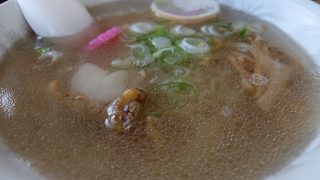
間宮堂のホタテラーメンとカレーライス@宗谷岬・稚内, 北海道; Hotate Ramen and Curry-Rice @ Mamiyado in Wakkanai, Hokkaido
2018/5/14 Hokkaido-北海道 , Ramen-ラーメン , Currey-カレー
Ramen with scallop flavor is the specialty of Mamiyado in Souyamiyasaki. It is a very delicious and Hokkaido taste. 稚内は宗谷岬の名物ホタテラーメンの間宮堂に行ってきました。塩味のホタテラーメンと帆立カレーライスは、風味抜群です。宗谷岬の白い道もとても奇麗でした。北海道旅行記ブログ2017年夏。
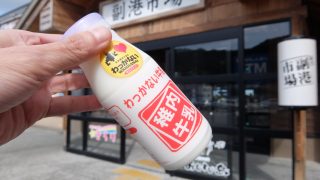
稚内牛乳とソフトクリームの副港市場@稚内, 北海道; Fresh wakkaniai milk and soft ice cream @ Fukukou Ichiba Market in Wakkanai, Hokkaido
2018/5/13 Hokkaido-北海道 , Sweets-甘味 , Drink-飲み物 , Inexpensive-良質廉価
Milk is one of the representative foods in Hokkaido. Pasteurized Wakkanai milk and the soft ice cream has a good flavor. 北海道食べ歩き旅行記がスタートです。まずは稚内副港市場の稚内牛乳とソフトクリーム。低温殺菌の風味の良さが美味しさの源です。
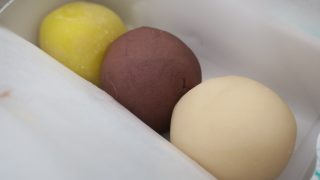
3色だんごの言問団子本店@向島, 東京; Kototoi Dango@Mukojima, Tokyo
2018/5/11 Tokyo-東京 , Sweets-甘味 , Heritage-老舗
Kototoi Dango is a famous shop for a traditional Japanese sweet: Dango. It has a long history for 150 years or more. 江戸末期に創業した言問団子本店は浅草から隅田川を渡った向島にあります。言問橋の由来にもなったほどの江戸、東京名物をぜひ。ボリューム満点です。
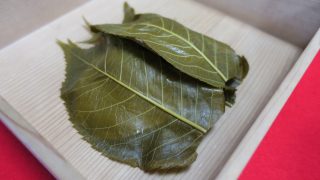
桜もちの長命寺山本や@浅草, 東京; Sakura-mochi@ Chomeiji Yamamotoya in Asakusa, Tokyo
2018/5/8 Tokyo-東京 , Sweets-甘味 , ★-Good , Heritage-老舗 , Inexpensive-良質廉価
Sakura Mochi is a traditional Japanese sweet wrapped by Sakura leaf. Chomeiji Sakura Mochi in Asakusa, which is the special shop serving Sakuramochi, has a long history for 300 years. 長命寺桜もちは桜餅一筋300年以上の超老舗です。小麦粉の皮を使った江戸の味わいと雰囲気はやはり楽しいものです。
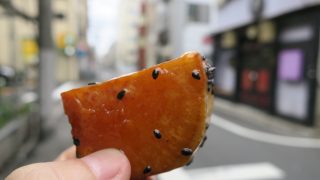
大学いもの千葉屋@浅草, 東京; Candied sweet potato@Chibaya in Asakusa, Tokyo
2018/5/7 Tokyo-東京 , ★★-Outstanding , Sweets-甘味 , Heritage-老舗 , Inexpensive-良質廉価
4月に日帰りで浅草に行ってきました。桜の季節は終わりましたが、浅草寺付近は相変わらずの滅茶混みです。 混雑を避けて浅草寺の裏手へ。大学...
Two Weeks in Japan: A Super Efficient Itinerary for 2024
Before you start to read this itinerary, there’s a very important question you have to ask yourself: Are you a “do it all, see it all” traveler? Or do you prefer to take things slow and steady? If the first describes you: perfect , you’re going to LOVE this itinerary for two weeks in Japan . If you you fall into the second camp, allow me to explain why you might still enjoy this whirlwind tour of Japan without getting overwhelmed…
Why visiting 12 locations in 14 days is completely doable in Japan
The key to see Japan in an affordable and efficient way is the Japan Rail Pass . This pass allows you to take unlimited super fast “bullet trains” between locations, which is critical in a country that is surprisingly big (150% the size of the UK!). Here’s why the bullet train makes it work:
- You can make it between huge stretches of Japan in relatively little time.
- The train is so comfortable, that traveling to your next destination feels relaxing .
- Every train station has coin lockers, where you can store your backpack while you explore a city and haven’t checked into your Airbnb or hotel yet. This means you can pop into a new place, store your stuff, and get going.
Let’s look at the awesome experiences packed into these two weeks, and then you can tell me if you think it’s crazy or kinda clever 😉
Recommended accommodation in Japan
I stayed a lot of places in Japan, but out of those can only recommend a few. Here are the two specific spots I stayed in that I absolutely loved during my time in Japan.
- Sumiyoshi Ryokan (Takayama) – Absolutely the best place we stayed in Japan . Such friendly hosts, amazing traditional Japanese ryokan, and it’s entrancing to see your in-room breakfast get cooked before your eyes. It does get completely sold out at times so booking in advance is advised!
- Nikko Backpackers Nikkoriso (Nikko) – Technically a hostel, we booked a private couples room, which was beautifully decorated. But what made this place special is that the hosts happened to recognize us at the train station and gave us a ride! That was so lucky and so kind.
- Airbnb or Booking.com (any large city: Tokyo, Osaka, Kyoto) – We mostly stayed in Airbnb in large cities. That said, It can be hard to find the location because of the complex Japanese address system, the fact that the addresses are often in Japanese and the hosts sometimes don’t speak much English, so be prepared to improvise 😉
Eating our in-room breakfast at a ryokan in Takayama, Sumiyoshi Ryokan , in the Japan Alps!
At least once during your trip in Japan, I do recommend staying in a ryokan , which is a traditional Japanese inn. You can read my entire post about staying in a Ryokan in Japan to learn what to expect and how to find a ryokan that fits your budget!
How to prepare for a trip to Japan
Here are a few ways I really recommend being prepared before you actually travel to Japan. In a lot of places you can “wing it”, but I think Japan really favors the prepared! Some things are a lot easier (or mandatory) to do before you land in the country.
- Buy a Japan Rail Pass , as they can only be purchased OUTSIDE the country . They’ll mail you a voucher which you can redeem in the airport. I later calculated that the JR Pass saved me more than $450 in train tickets. You can use this super helpful website to compare different Japan Rail Passes to see which one makes the most sense for your trip – both financially and in terms of the areas you want to visit.
- Plan your train travel with Hyperdia – Hyperdia is an amazing English-language timetable tool for Japanese trains. You can also use it to calculate whether the Japan Rail Pass will save you money based on your Japan itinerary by looking at the standard train costs.
- Get an offline-friendly Japan guidebook – It can be very useful in Japan to have a guide available offline. I personally don’t like to rely on my phone to get around! I tried 3 different travel guide books for planning my trip, and this travel guide book was the best one (and was just updated).
2 weeks in Japan
Here is what you’re going to see in this incredible two week Japan itinerary! One important thing to note is that this itinerary is optimized for seeing cherry blossoms in Hirosaki , in northern Japan. If you are not visiting during the later part of the cherry blossom season, you can swap out Hirosaki for another destination. I would’ve loved to spend more time in Osaka or Nikko, so those are great options for extending your trip!
Where to go for two weeks in Japan (especially during cherry blossom season!)
Day 1: Arrive in Tokyo
Day 2: take the train to kyoto, day 3: enjoy the highlights of kyoto, day 4: day trips to fushimi inari shrine & nara deer park, day 5: remember the history of hiroshima.
- Day 6: Miyajima, Himeji, Osaka
Day 7: Take the train to Takayam in the Japan Alps
Day 8: day trip to shirakawa-go, day 9: travel to aomori in northern japan, day 10: spend the day at the hirosaki cherry blossom festival, day 11: experience beautiful nikko.
- Day 12-13: Tokyo
- Day 14: Mt. Fuji
Today is about getting adjusted. About realizing: OMG I am in Japan right now , and my universe is in chaooooos! There’s no pressure to do anything in particular besides finding your hotel or Airbnb, try to order food in Japanese for the first time, and experience a
<a href="http://www.bbc.com/news/world-asia-38660860” onclick="ga(‘send’, ‘event’, ‘Affiliate Link’, ‘Click’, event.target.getAttribute(‘href’));”
target=”_blank">complicated Japanese toilet .
No pressure, right?
Tokyo’s Ginza , an upscale shopping district. Streets are lined with shops carrying Chanel and Prada. This area in the heart of Tokyo is very close to the Tsukiji fish market , where my top Tokyo restaurant recommendation is located!
That said, depending on when you arrive you might have some time to really spend exploring Tokyo. We’re going to come back to Tokyo at the end of the trip, so our first day is really just about getting faimiliar with the city. Here are a couple of ideas of things to do in Tokyo
Things to do in Tokyo for first-time visitors to Japan
- Go to Tokyo’s famous Robot Restaurant. It’s just one of those things that is “so Japan” you have to see it to believe it. During this 90-minute show robots in costumes sing and dance while you eat dinner and down Japanese beer. Book Robot restaurant tickets in advance because as weird as it sounds, this is a super popular thing to do.
- Enter an immersive digital art museum. This limited, interactive art show is one of the most popular things to do in Tokyo. There may literally not be a better place in the city for instagram photos than this. Book tickets to the teamLab Borderless Digital Art Museum (children 3 years old and younger can enter free!).
- See Tokyo by night from its tallest building, Tokyo Skytree. Last admission is at 9:00PM, and you can even buy skip the line tickets before you go. We didn’t have skip-the-line tickets and ended up waiting almost an hour to get to the top. If you want to make it even more memorable, you can have dinner overlooking Tokyo at the Skytree’s Panorama restaurant 😱
- Just explore your neighborhood. It’s pretty much guaranteed that no matter where you stay, there’s going to be an awesome point of interest right in your vicinity. Go outside, pop into a totally overwhelming electronics store, accidentally go into the “adult” section of the comics shop , pass by noisy pachinko parlors. There is nothing like people-watching in Japan.
- Get your first sushi meal! I had the best sushi of my life at Sushi Zanmai (すしざんまい 本店) which is located in the super famous Tsukiji fish market . You can also try out conveyer-belt sushi , which is an experience of its own. Indulge in some sake while you’re at it!

The delicious, unique, and sometimes strange regional dishes and street foods of Japan that you simply won't find anywhere else.
After your first night in a probably miniscule Japanese hotel, the next morning is time to hit the road for Kyoto, where we’ll spend three nights!
Kyoto is considered the cultural capital of Japan. Why not? It was Japan’s official capital for nearly 700 years. Here you’re going to get a real taste for what traditional Japan was like, by visiting shrines and temples erected hundreds of years ago (or more!). Besides architecture, Kyoto also has an incredible food scene. Here is where you can try Japan’s famous multi-course meal, called kaiseki .
But we’ll get to all that later!
For now, store your stuff in a coin locker at the Kyoto train station and catch the bus or train to the Saga-Arashiyama Station . Getting from there to our first stop, Tenryu-Ji is as easy as following the flow of people. After that, we’ll visit the neighboring Arashiyama bamboo forest . The final stop of the day is the super shiny Golden Pavillion .
For more details, you can read my in-depth Kyoto itinerary , but the main points are all mentioned here in this post!
Get ready to start taking off your shoes! Every shrine or temple you visit will require that you remove your shoes to enter. Luckily these places have soft wooden or tatami floors, so removing your shoes feels like a relief after long days of walking. And don’t worry – no one will steal your shoes. This is Japan ✌️
Here you’ll wander around the shrine. Starting with the building and its many exterior halls. Afterwards, venturing into the zen garden, which is the real star. There are many beautiful plants and flowers, such as the Japanese wisteria, which you never see outside Japan. They’re all labeled in English and Japanese. It was also here that I saw my first cherry blossom tree in Japan! Even though we were way too late for cherry blossoms in Kyoto, this late bloomer stuck around. It was pretty special to see it just chillin’ in the garden.
Tenryu-Ji is conveniently located right next to the Arashiyama bamboo forest . You can simply follow the signs and you’ll find yourself at its entrance.
Bamboo Forest
Let me be the first to tell you: this bamboo forest is kinda small . At least, I was expecting something much more massive! That said, it’s clearly one of the essential experiences to have in Kyoto so I wouldn’t pass it up. You’ll walk through in 10-15 minutes (depending on how determined you are to take a photo with no people in them). Be sure to bring a wide-angle camera lens in order to really capture the super tall bamboo. I was severely lacking one and my photos reveal that!
From the Bamboo forest, take the bus to the Golden Pavillion (Kinkaku-ji) . The bus ride takes a little under an hour and involves a transfer, but you’ll get to see a bit of the city of Kyoto on the way!
Golden Pavillion
The Golden Pavillion was probably the place where I realized: holey moley, there are a LOT of tourists in Japan . It was so incredibly crowded, and getting a decent view of the pavillion was pretty difficult! People just tend to bunch up at the best photo spots, taking what feels like a dozen pictures, and then sticking around to chat!
That said, the pavillion is obviously super impressive and beautiful. Reflected in the lake, it’s no wonder this is securely in the top 3 things to see in Kyoto! From the vantage point of the photo, you can wander around the pavillion’s surrounding gardens.
I also have to say that this is the place where I had my first ever Japanese-flavored ice cream . Gernot had the green matcha, and I took the black sesame. It was actually some of the best ice cream of the trip, so even though it’s expensive and touristy, it was perfect!
Which brings me to another thing about Japan: walking and eating is considered grossly uncivilized in Japan. We realized this was true, for the first time, when everyone was sitting in a room to eat their ice cream instead of walking around.
After the pavillion, it’s time to come back to the train station, grab your stuff, and check into the hotel or Airbnb where you’re staying. At this point, it’s well and duly time for dinner! Kyoto is famous for haute cuisine , so you can get an extremely fancy multi-course meal in Kyoto.
Enjoying the photos? Follow along on Instagram!
Follow @notanomadblog for beautiful travel photography and stories of our journeys

Follow on Instagram
Today is the main day to discover Kyoto, so be sure to start early! Your most efficient path would be to start your morning at the Nishiki Market , take the bus to Gion , and then spend the day in East Kyoto in the Higashiyama area. After following that path and seeing tons of temples, shrines, and beautiful streets, you’ll end up close to Philosopher's Path , where you can walk a long the stream and enjoy some solitude!
Nishiki Market
If you’re set on trying all the weird foods you can find in Japan, Nishiki Market is an absolute goldmine. This relatively small market hall spans several streets, and offers snacks and produce which you can pick up to sample some traditional Japanese food. Here is where I tried tako tamago , the infamous candied baby octopus stuffed with a quail egg. It’s not for the faint of heart, but it’s the only place I saw it while in Japan!
Gion is Kyoto’s famous geisha district . This is really the epicenter of geisha culture in Japan, and the place which has the most traditional rules regarding who can become a geisha. Outside Kyoto, there have been very few non-Japanese geisha, whereas in Kyoto it is completely not allowed.
Can you see the geisha (or more likely, geisha-in-training) hustle down the street in her red kimono?
From Gion, we’ll walk towards the world famous hub of Kyoto’s best-known shrines and temples: Higashiyama . Southern Higashiyama is the place to be for the very best the area has to offer!
Higashiyama
Chances are if you’ve looked up photos of Kyoto, you’ve seen mostly pictures of Higashiyama. The rest of the city is very modern and, I must say, not so beautiful in comparison to the historic Higashiyama district.
- Sannenzaka and Ninenzaka – The two most beautiful streets in Higashiyama. The former is the location of the famous stairs. Most of the houses have been converted into souvenir shops. It can get pretty crowded at mid-day, so come either first thing in the morning or around dusk for a less cramped experience.
Besides the beautiful streets, there are loads of shrines and temples for you to visit. Here are a selection of my favorites:
- Kyomizu-dera – This area is one of the busiest and best known in Kyoto for a reason. The view out over a sea of trees is hard to match – and in cherry blossom season, they’re also in bloom.
- Kodai-ji – This place has got a yuuuge zen garden. Come here for one of the nicest zen gardens you can find in Kyoto.
- Shoren-in – An oft-skipped but totally majestic Buddhist temple at the end of the Higashiyama route. Not crowded, gorgeous gardens, many winding corridors for you to explore. This place will make you want to live in your own Japanese villa one day! Read more about Shoren-in
After Shoren-in, you can walk to the Philosopher’s Path (2.3 km, found on Google Maps as Tetsugaku-no-michi ). This path along a narrow river is lined with cherry blossom trees in Spring. If you decide to talk this walk, you’ll end up near the Silver Pavillion . If you’ve still got energy, you can check it out! Otherwise, I recommend grabbing dinner at Asian Cample Foods Goya for a taste of delicious Okinawan food .
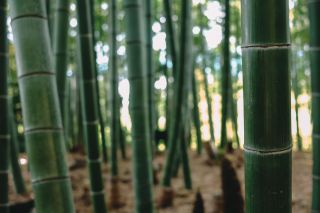
Here are the best things to do in Kyoto that deserve a place on your two or three-day itinerary. From world-famous food to ancient temples and interesting day trips.
Imagine this: a capital city full of thousands of docile, free-ranging deer. If this sounds like your idea of paradise, you can’t miss Nara, Japan .
But first, it’s time to visit one of Japan’s most famous landmarks.
Fushimi Inari Shrine
These dizzying rows of red Torii are a photographer’s dream: if you can manage to capture an empty shot. I saw some of the thickest crowds of the whole trip when visiting these shrines, so be sure to give yourself some extra time if you want to focus on photos!
To get here, you’ll need to take the JR Line from Kyoto to Inari . After your time at the shrine, pop back on the train and continue to Nara.
The very first capital of Japan, Nara is humble by today’s standards. The city center is small, and the population a mere 360,000 inhabitants. But don’t let that fool you: Nara has some of the most unique experiences to offer on the Japanese itinerary:
- Todai-ji – The world’s largest wooden building. Inside, a massive Buddha. You can try to climb through its nostril (a sign of good fortune).
- Isui-en – One of the best gardens we saw in Japan. That, plus a personal tour from a member of the staff, made the story behind the garden really come alive.
- Nara Park – Over 1,200 free roaming deer. Keep your map close, they will eat anything. Note that if you buy biscuits in Nara, those are for the deer , not you.
Sadly my camera died in Nara so I have very few photos to share. You’ll have to see for yourself!
Left, Isui-en Garden, Right, Deer 😂
Plan a solid half-day for Nara, if not more. We spent a lot of time walking around Nara Park, there is a lot to explore and hiking paths if you want to speak more time walking around!
Spend your last night in Kyoto and wake up early to catch the train down to the southernmost post on our itinerary: Hiroshima .
I will start by saying that Hiroshima is simply not a beautiful city. It was hastily rebuilt after the tragic events of World War II and the destruction of the atomic bomb. As a result, you won’t find charming alleys or old merchant districts. Instead, you come to Hiroshima to get a glimpse into the lives of the people who both died and survived as a result of the bomb, and the effects it’s had on the community.
The Atomic Bomb Dome
This is the singular building that was left standing after the atomic bomb devastated Hiroshima. You should absolutely visit the Hiroshima Peace Memorial Museum . The museum really toes the line between giving a realistic look at the consquences of the bomb, while also shielding you away from some of the more gruesome details (meaning, it is still suitable for children).
Hiroshima Castle
This is the first castle on our trip to Japan, and to be honest, it’s a bit underwhelming. The interior has been completely gutted to turn into a museum (on the up-side: you can get your photo taken in a samurai outfit!). Don’t worry, we’ll end up at the mother of all Japanese castles later.
Here are some more ideas for things to do while you’re in Hiroshima, after you’ve visited the museum, the Peace Park, and seen the flame that remains lit until the last nuclear weapons on earth are destroyed.
Things to do in Hiroshima
- Hiroshima is the birthplace of
<a href=”/regional-cuisine-street-food-to-try-in-japan/#okonomiyaki” onclick="ga(‘send’, ‘event’, ‘Affiliate Link’, ‘Click’, event.target.getAttribute(‘href’));”
target=”_blank">Okonomiyaki , and the city does it like nowhere else. Combine that with
<a href=”/regional-cuisine-street-food-to-try-in-japan/#oysters” onclick="ga(‘send’, ‘event’, ‘Affiliate Link’, ‘Click’, event.target.getAttribute(‘href’));”
target=”_blank">oysters
and you’re eating the most quintessential regional dish. Be sure to visit Okonomi-mura (Okonomiyaki Village) for the epicenter of Oko-eating in the city.
- Hiroshima is also famous for its nightlife. If you’re looking for a wild night, Hiroshima might just be the place to have it.
- Mitaki-dera is a very special and unique shrine in the northwest of Hiroshima.
- Ride the vintage tram. Hiroshima prides itself on having a super old-fashioned tram system, complete with cars from the 70s! Blast from the past, yoo.
Spend the night in Hiroshima and wake up early, we’re going to Miyajima!
Day 6: Miyajima, Himeji, & Osaka
This is our crazy day. Start in Hiroshima, take the JR Ferry to Miyajima. Spend some time on the island, catch the ferry back, connect to a train to Himeji. Spend the rest of the day exploring the castle and grounds until it closes. Wind up in Osaka to start binging on street food.
Are you ready?
I’ll start with this preface: If you’re not set on exploring Hiroshima by night, I’d encourage you to spend the night on Miyajima instead. This island in Hiroshima bay is home to one of the top 3 national sights in Japan, and is one of the most visited locations in the entire country. You can beat the first boat ride in and have a Miyajima at sunrise all to yourself!
Things to know about visiting Miyajima
I’ve already written a bit about things to do on Miyajima besides seeing the shrine so I won’t duplicate the information here. Here is a quick summary of things you need to know when visiting Miyajima:
- Don’t take the “scenic boat ride” around Hiroshima’s harbor, just go for the JR Ferry. As I mentioned, Hiroshima is not very scenic and its harbor is no exception. It costs more and takes longer.
- Take the ropeline to the top of the mountain for a view over the bay. Along the way you’ll see many treasures ^__^
- If you’re collecting souvenirs, buy a rice paddle in Miyajima. It’s the essential Miyajima souvenir!
- Skip paying to go out onto the dock in front of the shrine – the best photos can be taken from the shore anyways, and you can just walk around to the other side without paying.
- Be sure to plan your visit in tune with high tide! At low tide, the water recedes and you miss the “floating Torii ” illusion.
Did I mention there are also deer on Miyajima? They’re more aggressive than the Nara variety. Guard your map!
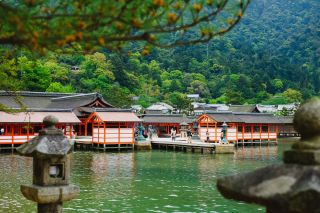
Anyone and everyone who goes to Japan has probably seen the famous floating Torii on Miyajima Island – but far fewer see Mt. Misen for sweeping views over Hiroshima bay.
After taking the ferry back from Miyajima to the mainland (you want the Hiroden-miyajima-guchi station ), hop on the train to Himeji. We’ll spend the rest of the day here until the castle closes at 5PM. Upon arrival, lock your backpack in a coin locker and catch the bus to the castle from the train station.
For the uninitiated: Himeji Castle is perhaps Japan’s most famous and best-preserved castle. It’s meant to resemble a bird in flight, and is known as the “White Heron Castle.” It has survived extensive bombing of the surrounding city during World War II as well as a massive earthquake in the mid-nineties. Himeji is here to stay.
If you have time, there are also samurai quarters to explore in the vicinity. You can buy a combination ticket for the castle and the quarters at the entrance. Unfortunately we couldn’t make time to see those before leaving, but they’re reportedly really interesting.
Important! Check the train times to make sure you’ll be able to catch a train to Osaka shortly after the castle closes.
If there’s one place I feel I didn’t get enough time, I’d have to say it was Osaka. It’s got such a cool, alternative vibe when compared to high-heels-and-Prada Tokyo. It’s most famous for its street food, and it considered the foodie capital of Japan . If you’re here to eat everything in sight, Osaka is a wonderfully dangerous place to end up.

Where to stay in Osaka
If you have just one night in Osaka, there’s no other place to stay than Dotonbori . The neighborhood’s eponymous street is THE definition of the loud and chaotic Japan. The first thing that happens as you approach is that you smell SO much food. Street vendors cook takoyaki in giant, metal trays filled with fried balls of dough and minced squid. If you don’t come hungry to this street, you are making a huge mistake!
Besides food, this street is also famous for its moving, animal billboards. Cows, crabs, and pufferfish are just a few of the giant electonic puppets looming over the heads of pedestrians.
Things to do in Osaka
- See the famous Glico Man sign at Ebusu-bashi bridge. This is perhaps the most recognizable landmark in Osaka (that’s right: a giant illminated sign).
- Go to the Osaka Castle , one of the prettiest in Japan with its teal and gold coloring.
- Eat Honetsuki-dori ! This was one of my most memorable meals in Japan. You basically get two choices of chicken (young chicken or old chicken) and then you can choose from sides, which are mostly also chicken.
- As mentioned, eat the takoyaki!
- If you’re feeling adventurous (and spendy), you can splurge on a plate of Fugu (pufferfish, which can be deadly if not cooked by a licensed expert).
- Osaka also has a huge aquarium, which you can visit if you decide to spend more than a night in this city.
Don’t get too comfortable: after a lazy breakfast and a sobering view of Osaka by day, it’s off for a culture shock on top of your existing culture shock. We go from always-on Osaka to sleepy Takayama in the Japan alps.
You read me right: Japan has got its very own range of alps. It contains three mountain ranges: Akaishi mountains, Kiso mountains, and Hida mountains. We’re going to the latter, to the Hida region.
Absolutely do not forget to book the Wide View train for your ride through the mountains! You’ll get a train with enormous glass windows, perfect for day dreaming about your imaginary life in the Japanese countryside a la My neighbor Totoro .
For us, Takayama seemed the perfect place to check in to a traditional Japanese inn, called Ryokan . This has got to be one of the top experiences to try in Japan , and if you’re not in a big city like Kyoto, you can do it for a bit of a better price.
Why you should stay in a Ryokan in Japan
- You get to dress up in Japanese dress. You can put on a Yakuta (a summer kimono) while you eat your delicious, amazing, unidentifiable Japanese breakfast.
- Experience Japanese hospitality. Our hosts were so kind and hilarious. At times it was a challenge to communicate, but with patience and humor anything is possible.
- Onsen minus public nudity. If you aren’t familiar with the Japanese concept of onsen , it’s basically a super hot public bath where head-to-toe nudity is mandatory. You shower off before getting in, and they’re divided by gender. Our ryokan had a private onsen you could visit with your partner. It’s awesomeeee.
Be sure to consider Sumiyoshi Ryokan when you go to Takayama! Room rates start around 150 EUR so it’s not cheap, but it’s absolutely going to be the most memorable place you stay on your trip!
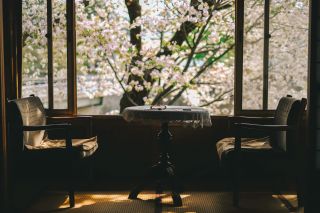
Staying in a Ryokan in Japan is supposed to be one of the top ways to experience authentic Japanese culture. But is it worth all the extra money, which can run up to a thousand dollars per night? Let's see!
All checked in and cozy? Here are some ideas of what to do during your time in Takayama.
Things to do in Takayama
- Stroll around the Edo-era merchant district . The houses are very well preserved, although many have been converted into souvenir shops.
- Try Hida beef , the local variant similar to Kobe beef. You can go to various grill-your-own joints for a fancy experience, or get a skewer for a couple bucks at the morning market.
- Visit the morning market for handcrafted souvenirs. There are two markets, but the one along the river is far better for souviners. You can get wooden carvings made from the Japanese Yew, chopsticks in all configurations and price ranges, and of course a lot to eat.
- Indulge in a box or two of sake! Takayama has a prominent sake industry, and you can recognize sake spots around town by the dried cedar balls that hang in front of the front door.
- Buy your Japanese souvenirs, period. This is where we bought our one serious souvenir from Japan, which is a gorgeous black and gold teapot. It cost around 80 EUR (which is a pretty standard price for teapots, believe it or not!)
- Visit “Little Kyoto”. Now that you’ve been to Kyoto, you’ll realize: Takayama’s temple district is nothing like that of sprawling Higashiyama in Kyoto, but there is one distinct difference: you have the place to yourself.
Enjoy breakfast in your Ryokan , check out the morning market, and in the early afternoon, hop on a bus to Shirakawa-go.
Shirakawa-go, is one of the tiny tiny villages where people still live in thatch-roof houses. Every 30-40 years the roofs are replaced by 200 community members and volunteers working quickly over two days. The town itself is a UNESCO World Heritage site, and you can go inside several of the thatched houses and learn more about life in the village.
What to know before visiting Shirakawa-go
- Shirakawa-go is visited by massive tourist crowds. No one in the blogosphere seems to admit this, but it’s a simple fact: Shirakawa-go experiences hit-and-run by tons of tourist groups.
- That said, your best option is to spend the night in Shirakawa-go in order to get a more authentic and private experience.
- Shirakawa-go’s scenic overlook is not accessible in winter. If you’re traveling to Japan in Winter, the location where you can see the entire valley at once is not accessible when the path is snowed in.
After visiting Shirakawa-go, spend your last night in Takayama. Enjoy breakfast the next morning, because it’s time to hit the road and head north.
I will start with this: If you’re not visiting Hirosaki during cherry blossom season, I’m not sure it’s worth it . The town itself is pretty lackluster, and it’s the park filled with 2,500 cherry blossoms which makes this location truly spectacular and yet under-the-radar for western visitors.
That said, Hirosaki is probably one of the few places where we really felt like we weren’t just one of thousands of western tourists. Almost everyone in the city was either Japanese, or traveling to Japan from a neighboring country in Asia. For that reason, it was really cool to visit somewhere that felt a little undiscovered by people like us.
The trip from Takayama to Hirosaki takes about 8 hours, so most likely, you’ll arrive in the early evening, with enough time to see Hirosaki’s cherry blossoms illuminated by night.
After spending the night in the park, grab dinner at
<a href="http://www.kadare.info” class="place” onclick="ga(‘send’, ‘event’, ‘Affiliate Link’, ‘Click’, event.target.getAttribute(‘href’));”
target=”_blank">Kadare Yokochō . This food hall is a favorite with locals, and offers a ton of options. You can read more about what to try here in my guide to Hirosaki.
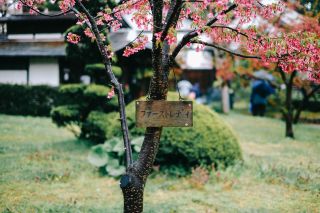
Few Western visitors ever experience northern Japan, but Hirosaki's immense Castle Park bursting with blossoms, bridges, and moats is an unbeatable reason to come north during Cherry Blossom Season. It's even illuminated at night. Come see for yourself!
The next day, it’s time to enjoy the park in all it’s bright and blooming glory. The park is overflowing with flowers, idyllic Japanese-style bridges, petal-filled moats, and one of the coolest sights: Sakura Tunnel .
I imagine this place also looks spectacular in Autumn, but I can only tell you: it’s gorgeous in Spring, and perfect if you’re making a late Spring trip, where the cherry blossoms in more southerly locations will have already gone.
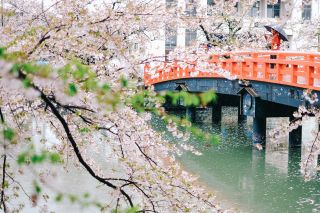
Catching a glimpse of sakura in Japan is more than a matter of timing and luck. When and where to see cherry blossoms all throughout Spring!
Tonight, take the train to Nikko, Japan, a town a short way from Tokyo but packed full of historic locations and natural wonders!
I made a critical mistake when coming to Nikko. I came during Golden Week, which happens at the beginning of May. During this time, the entire country of Japan is basically on vacation, and of course, where do they go on vacation: why, Nikko!
And it’s no wonder: Nikko was once a favorite retreat for the emperor, once he had moved his residence from Nara to Tokyo. As a result, Nikko has some of the most concentrated famous sights in Japan. In fact, a huge swath is a designated UNESCO World Heritage Site. For a small town, this place has got a lot going on.
Things to do in Nikko (AKA more shrines 😄)
- Shin-kyo – The most famous bridge in Nikko (pictured above). There’s a fee if you want to cross it, but perfectly good photos can be taken fo’ free.
- Tosho-gu – This group of buildings that comprise the Tosho-gu shrine comprise several buildings. Each structure offers something different. Here are a few of them:
- Yomeimon (Gate of Sunlight) – Perhaps the climax of Nikko’s temple district, this gate is unique because it’s just so gaudy . Gold everywhere, super ornate. The only problem is that it’s currently under rennovation until March 2019.
- Naikiryu (Crying Dragon) – Enter the Yakushi Hall at Tosho-gu and see, painted on the ceiling, an enormous dragon. It’s believed that the sound of wooden blocks clapping together in this room sound like the dragon is crying (depends on how imaginative you are if you ask me!)
- Kegon Waterfall – I didn’t have time to see this myself, but if you stay a little longer in Nikko, you can take the trip here. Nikko has a few other waterfalls, but Kegon is easily the most popular.
Now, after all of this, I was honestly left pretty overwhelmed by Nikko. 99% because the crowds were so dense, it was totally uncomfortable to view some of these places. The other 1% was probably actually being underwhelmed because of some of the construction that covered the coolest structure, Yomeimon .
Actually, I wanted to LEAVE. Luckily, Nikko still had something waiting for me…
Kanmangafuchi Abyss
After a tasty and expensive slice of cheesecake and coffee at Nikko Coffee , we embarked on a walk to the Kanmangafuchi Abyss . This natural canyon in Nikko is like the polar opposite of Tosho-gu . Somehow no one else knew that there was this natural treasure just a kilometer away from the popular shrines. It turned out to be one of the most beautiful places in Japan .
On your way in, these statues line the path to the gorge. It’s said that it’s not possible to count the name number of Bake-jizo on your way in as on your way out. You’ll just have to try for yourself! (Spoiler: I failed, but I don’t blame any inanimate objects for that).
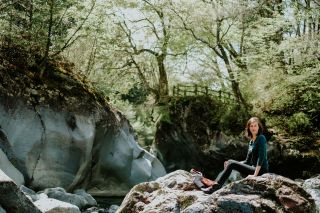
With UNESCO World Heritage sites galore, Nikko is a popular day trip from Tokyo. But the best part of Nikko just a little over a kilometer away from the most popular shrines, in a small gorge with its own shrines, whirlpools, and waterfalls called Kanmangafuchi Abyss.
Enjoy your time in Nikko, because after this it’s back to the big city! Pick up your stuff from the hostel, hop on a train, we’re going to Tokyo…but for real this time.
Day 12 and 13: Time for Tokyo
A lot of people who come to Japan spend a lot of time in Tokyo. I mean, it makes sense: it’s got the most restaurants per capita in the world, you could spend a lifetime exploring every conceivable experience this city can offer. That said, I didn’t try to do Tokyo hardcore. For one, I actually visited friends while here, which tends to make everything a little less go-go-go. On the other hand, there is just so much there, your chances of “making a dent in Tokyo” are miniscule, so why try!
Ideas for what to do in Tokyo
- Ascend the Tokyo Skytree. If you’re scared of heights (like me), this place is going to make you SO NERVOUS. The highest point in the city, on a clear day you can see Mt. Fuji which is 100 kilometers away.
- See the faithful Hachiko statue at Shibuya station. Perhaps you’ve heard the story of the faithful dog that waits for years at the train station, even 9 years after his owner has passed. If you want to see this world famous symbol, head here – also a popular meeting place!
- Take a walk through the Yoyogi Park. You’ll see buskers, groups of friends, maybe even the famous
<a href="https://www.youtube.com/watch?v=BLl9GERTMYg” onclick="ga(‘send’, ‘event’, ‘Affiliate Link’, ‘Click’, event.target.getAttribute(‘href’));”
target=”_blank">Tokyo rockabilly dancers .
- See the Shibuya Crossing. One of the most famous sights in Tokyo, this crosswalk is the busiest in the whole world. If you’re in the area, be sure to check it out – you can get a view over it from a 2-storey Starbucks across the street.
- Visit the Tokyo National Museum. Learn more about the culture and history associated with Japan in this museum. It’s got art, statues, scrolls, outfits, armor, pottery – so many things you can see develop over time with the Japanese people.
- Eat a meal at the Tsukiji Fish Market . If you missed it on your first night, now’s the time to come back! Wake up at the crack of dawn to see the daily haul of tuna, or come by in the evening to grab some dinner.
- If you haven’t gotten enough of shrines, check out Meiji Shrine. Easily the most popular shrine in Tokyo! Unlike so many shrines, admission here is free.
- Do some luxury shopping in Ginza. Essentially every world famous fashion brand has a flagship store in this shopping district. If you’re a luxury traveler, this might be the perfect place to pick up your Tokyo souvenir.
- Go to Harajuku and feel extra ordinary. This area has some of the most eccentric people you’ll see in the city, with the very best outfits and hairstyles. It’s a must-see area if you love people-watching!
- Stock up on electronics in Akihabara. Known affectionately as Electric Town, Akihabara is a bright and loud neighborhood and home to the largest electronics store in the world, Yodobashi Akiba .
- Got more time in Tokyo? Find more things to do in this Tokyo 5-day itinerary or go to one of many amazing day trips from Tokyo .
After your last day in Tokyo, take the train to Kawaguchi-ko and sleep at the base of Mt. Fuji. Wake up early the next morning to enjoy the mountain!
Day 14: Spend the day at Mt. Fuji and fly home in the evening
It’s the last day, you can do it! Get up as early as you can muster to see Mt. Fuji in the morning light, reflected in Lake Kawaguchi. Conventional wisdom states that your best viewing of Mt. Fuji happens first thing in the morning, but for us, the mountain became more visible as the day went on. By the end of the day, it was clear and big and blue.
I’ve gone in-depth about the best places to view Mt. Fuji , especially if you’re going in Spring, but one thing I can’t help but mention here is the Pink Moss Festival ! You can take a bus here from the main station in Kawaguchi-ko, and travel to a spot closer to the mountain that is just covered in pink flowers.
In terms of booking tickets to the festival, I just happened to discover it thanks to a brochure in my hotel. Check the website for admission tickets. There’s also tons of different ways to get to the location by bus, just check on the website’s “Access” page.
In 2019, the Pink Moss Festival is happening from April 13th - May 26th ! That means you can still visit this year if you’ll be arriving between now and the end of May.
How cute is this? There’s even a mini-Fuji made out of flowers! After you’ve had your fill of flowers and too-perfect shots of Mt. Fuji, take a bus back to down and spend any free time you have walking around the lake and walking around town. Get your last matcha ice cream or any last-minute Fuji-themed souvenir.
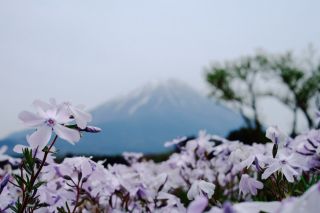
Spring is one of the best, most magical times to see Mt. Fuji of the whole year. Here are several vantage points that offer the most impressive view of "Fuji-san", plus tips on predicting Mt. Fuji's visibility.
Alas! It’s time to take the train back to Tokyo, transfer to transport that’ll take you to your airport, and start the long journey home.
And that’s a wrap!
Have you ever been to Japan? Or are you planning a trip RIGHT NOW? Would love to know about anywhere I missed in my itinerary or what you would do differently! Leave a comment with your thoughts!
Did you find this post useful? Pin this post for later!

About the author
Hi there! I'm Monica, an American expat living in Germany for over six years and using every opportunity to explore the world from my homebase in Berlin. My goal is to capture my memories in photos and posts that show how easy it is to start from scratch and travel the world by working abroad.
Follow along on Instagram , Twitter , Bloglovin , & Facebook .
You might also like...

Is it really worth staying in a Ryokan in Japan?
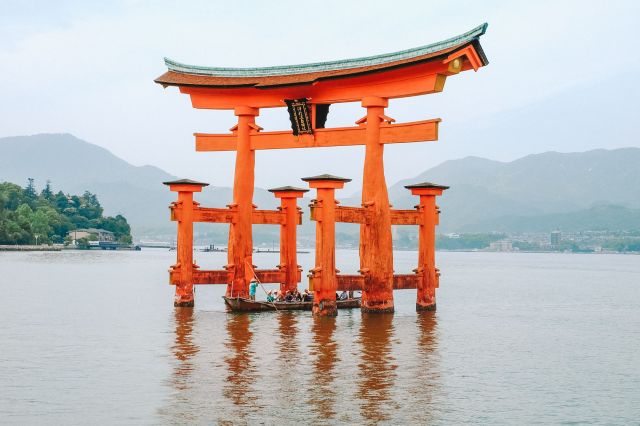
15 beautiful places you must visit in Japan

A Super Efficient 2-week South Africa Itinerary
- South Africa
- Afghanistan
- North Korea
- Adventure + Outdoors
- Amusement Parks
- Backpacking Trips
- Boating + Cruises
- Budget Travel
- Bus + Train Travel
- Coasts + Islands
- Country Trips
- Fall Vacations
- Family Vacations
- Green Travel
- Heritage + History
- Honeymoons + Romance
- Inspiration + Guide
- Landmarks + Attractions
- LGBT Travel
- Markets + Bazaars
- National Parks + Reserves
- Nature + Wildlife
- Parks + Gardens
- Pets + Animals
- Photography
- Airlines + Airports
- Budgeting + Currency
- Business Travel
- Celebrity Travel
- Customs + Immigration
- Deals + Rewards
- Family Travel
- Hotels + Resorts
- Luggage + Packing Tips
- Offbeat News
- Photography Tips
- Responsible Travel
- Solo Travel
- Tech + Gear
- Travel Etiquette
- Travel Warnings
- Bars + Clubs
- Celebrity Chefs
- Restaurants + Cafés
- Wine + Vineyards
- Beach Hotels
- Boutique Hotels
- Hotel Openings
- Hotel Reviews
- Luxury Hotels
- Mountain + Ski Resorts
- Spa Resorts
- Vacation Rentals
- Asia Cruises
- European Cruises
- Festivals + Events
- Museums + Galleries
- Style + Design
- Travel’s Best
- Hotel with Agoda.com
- Hotel with Booking.com

Guide to Joo Chiat Singapore. What to do & top things…

7 days in Hawaii itinerary. How to spend Hawaii itinerary 1…
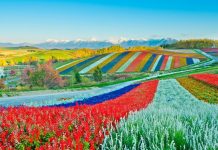
19+ must-see & best places to visit in Hokkaido

Hawaii travel blog — The fullest Hawaii travel guide for first-timers

The complete Seoul subway guide: How to use, lines, fares for…

How much does it cost to travel to Korea? Tips on…

The ultimate guide to NETS FlashPay Card: What is it, how…

How much will it cost to go to Singapore? Tips on…

13 best, most famous & popular bubble tea in Taiwan

Where to eat in Penang? 17 best places to eat &…

Best bubble tea in Taiwan — Top 11 most famous &…

29+ must-try foods in Thailand

11+ best homestays in Kuala Lumpur near famous tourist attractions

Mövenpick Resort Kuredhivaru Maldives reviews. The detailed review of my vacation…

Hyatt Regency Danang Resort and Spa reviews. The resort is highly…

+7 luxury resorts you must stay in Danang, Vietnam

10 must-know things for your best first time European river cruise

Top 3 best luxury cruises in Halong Bay, Vietnam

Cherry blossom festival Korea 2024 — Top 5 cherry blossom festivals…

Ghibli museum blog — The fullest Ghibli museum guide for first-timers

Kyoto festival — Top 10 best events & most famous festivals…

National Palace Museum Taipei blog — What to see in National…

Japanese waterfall — Top 10 most beautiful waterfalls in Japan in…

19+ most beautiful towns in Europe every tourist need to visit…

Georgia travel photos — 20+ captivating photos show Georgia is heaven…

Explore Damnoen Floating Market — The oldest floating market of Thailand

Visiting Fenghuang Ancient Town — One of the most charming ancient…

Mekong Delta travel blog — Beyond rivers of Southwestern Vietnam

14 reasons why you should travel when you are young

Shigaraki Tanuki – An animal symbol of good luck in Japan

Living in the charms of cave houses in Andalucia, Southern Spain

20+ jaw-dropping tiny homes around the world
Takayama guide — the fullest takayama travel blog & guide for first-timers.
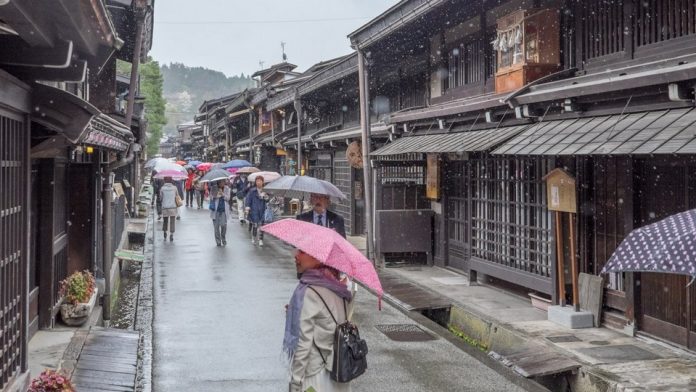
If you love ancient beauty and Japanese history, Takayama City will surely be a great destination for you. Dubbed “Mini Kyoto” with old and charming streets, traditional Japanese restaurants have been preserved intact for hundreds of years. And there are many interesting things waiting for you to discover when coming to Takayama and its surrounding areas! So, what to do and how to plan a perfect budget trip to Takayama, Gifu for the first-time? Let’s check out our Takayama travel blog (Takayama blog) with the fullest Takayama guide (Takayama travel guide) from how to get there, best time to come, where to stay, best places to visit and top things to do to find out the answer!
- What to do in Takayama? — Top 5 see & must things to do in Takayama, Japan
Suggested Tokyo travel itinerary 3 days. How to spend 3 days in Tokyo on a budget
- 13 best places to visit in Okinawa for a Memorable Vacation
- Osaka itinerary 3 days — Suggested Osaka itinerary 3 days & what to do in Osaka for 3 days?
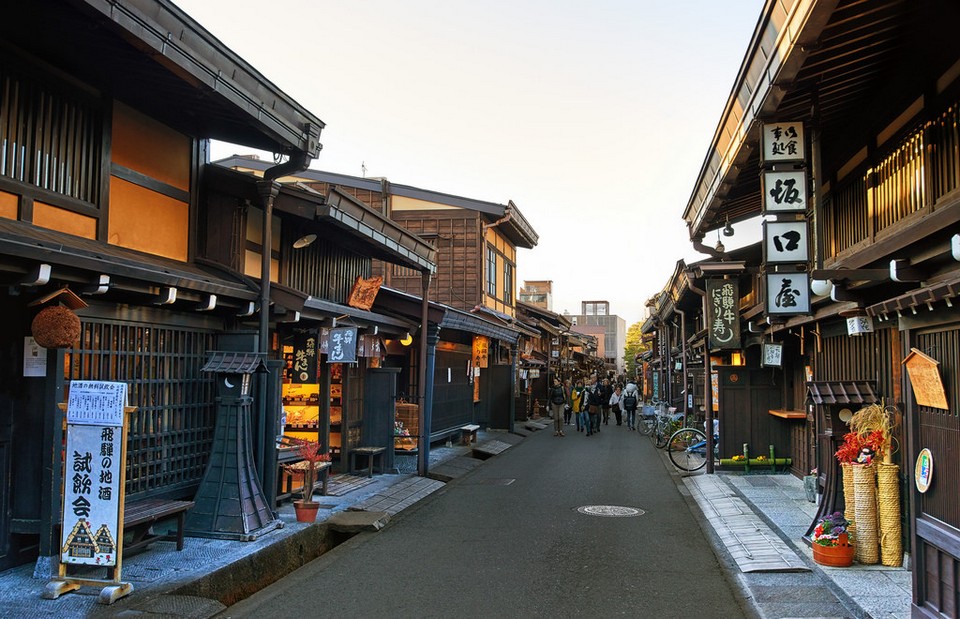
Takayama is known as the pure heart of Japan. Takayama attracts millions of visitors not only because of the UNESCO ancient world heritage village of Shirakawa-go, but also because of the way they bring visitors back to the country’s more than 300-year-old primeval times. These are the lush green trails, rustic, gentle under the warm noonday sunlight or the hundred-year-old jazz pubs located in the old town of Sanno Machi (Sanmachi-Suji) historic district. You can leisurely strolling along the peaceful, simple streets with red bridge across the river of Miya-gawa, connecting ancient houses on its banks.
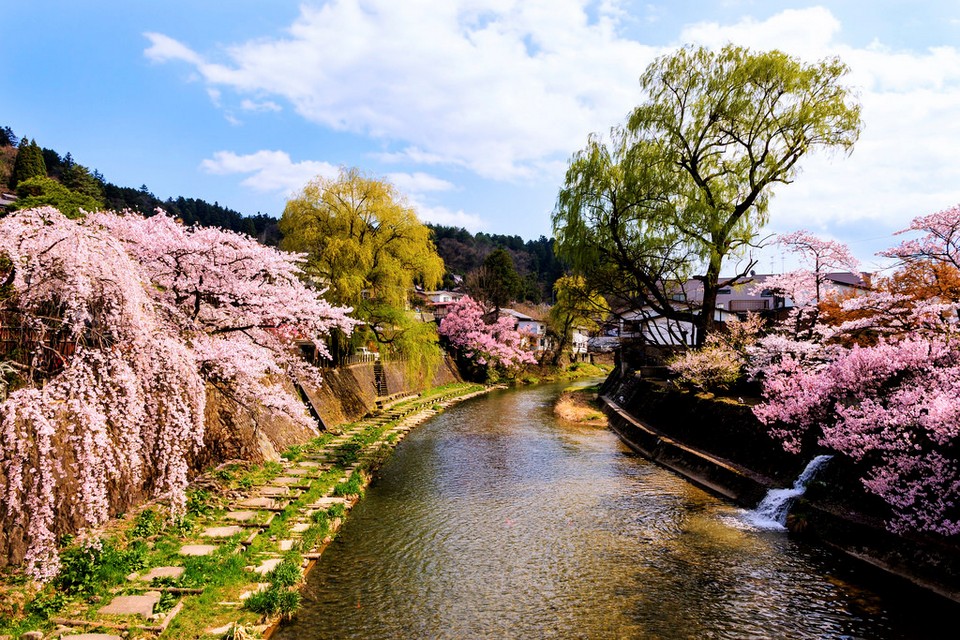
Takayama guide: When to visit?
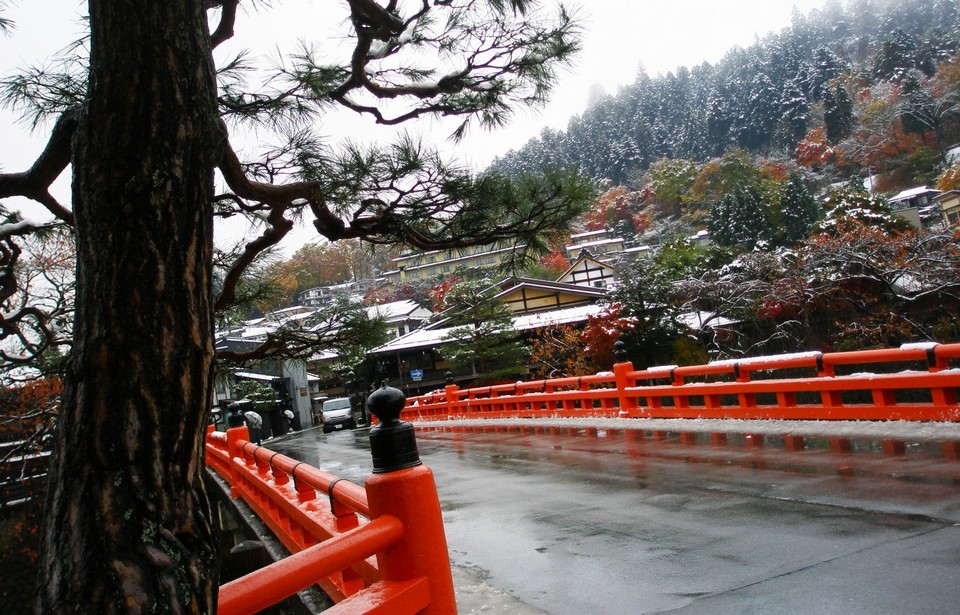
Thanks to mild climate, Takayama is a great year-round destination. I went to Takayama at the end of October, so it was raining (it was changing the season from summer to autumn) and cold. Actually, I realize that time is not the best time to come. In the summer months (June – August), Takayama is usually quite hot. In winter (December – February), it is usually quite cold and snowy.
If you choose the most ideal time, it will be early October, because this is when the weather is warm. And October is also not a peak month so you won’t have to worry about crowds.
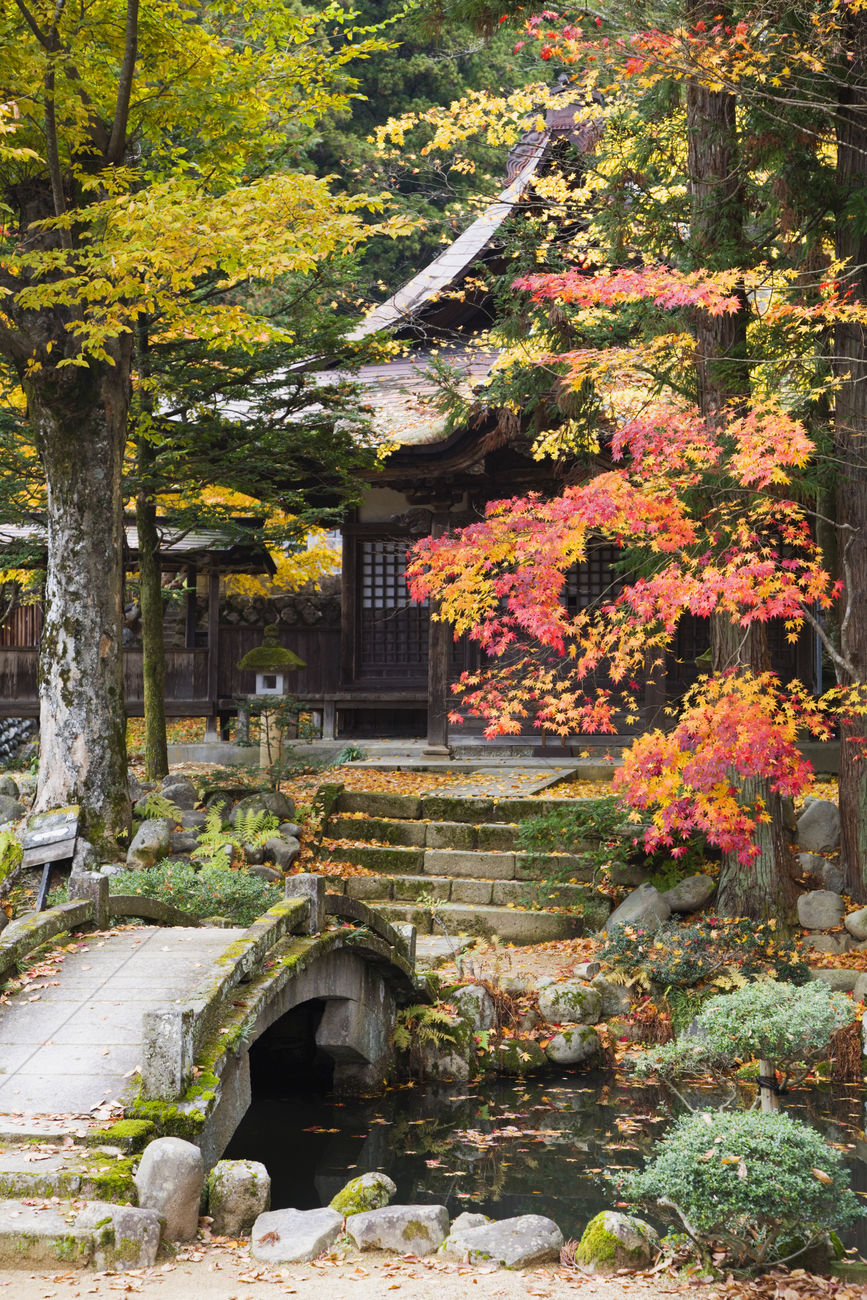
Time: Early October to early November Events: Takayama Matsuri (fair) in autumn which takes place from October 9 to 10 and autumn leaves season in early November.
Time: From mid-January to mid-February. Event: Shirakawago Winter Light-Up on weekends
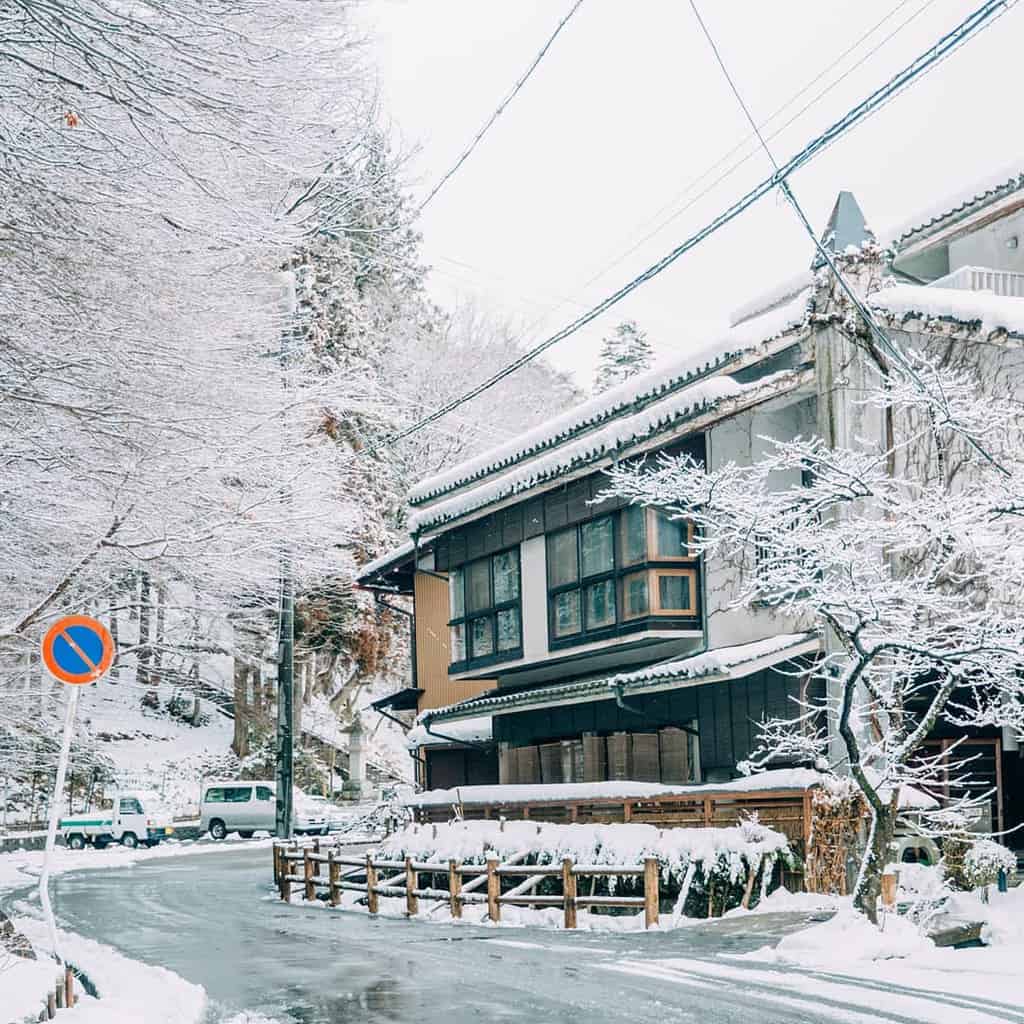
Time: Mid-April Event : Takayama Festival, cherry blossom season. April 14-15 every year.
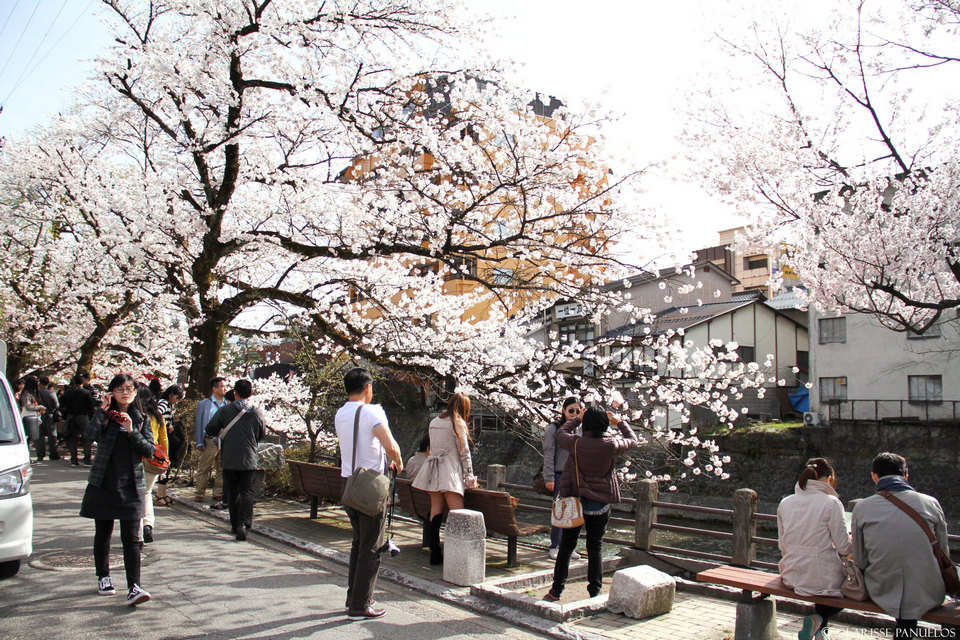
Takayama travel blog: How to get to Takayama?
From kyoto / osaka.
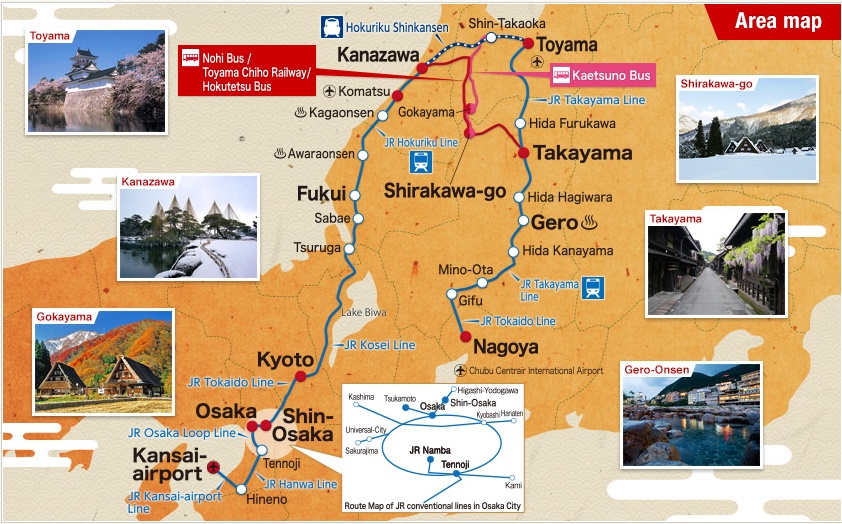
My friend and I took the bus of Nohi Bus with the cost of 4,200 yen / person / way. The bus departed at 5:10pm and we could not book in advance (because the tickets were sold out at 4:45pm), so we had to choose the other at 6:40pm. Arrived in Takayama was quite late at 11pm.
So the total traveling time by bus from Kyoto / Osaka to Takayama will be about 4-6 hours.
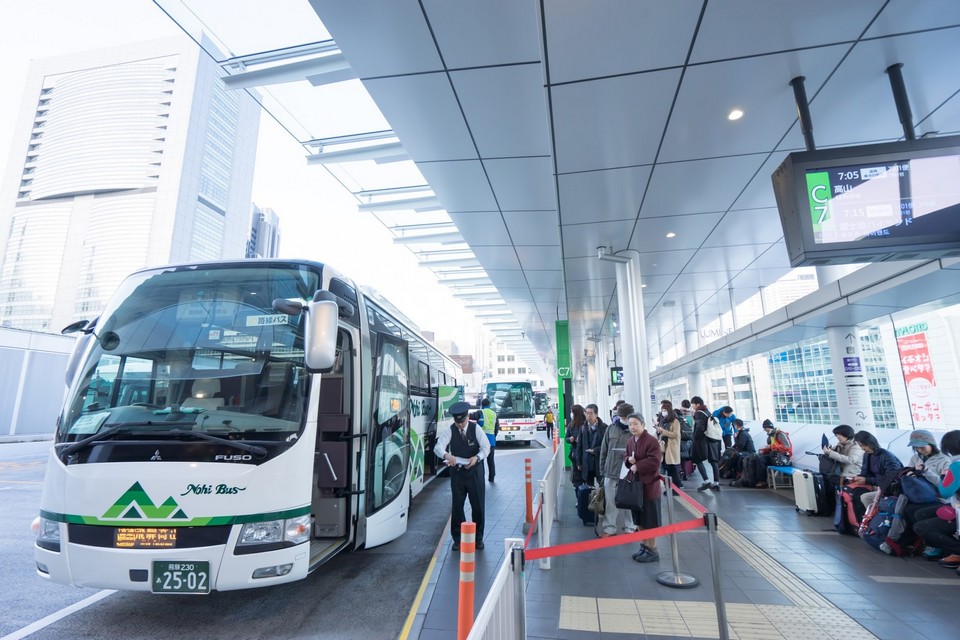
The bus will go through Namba station, Osaka station and Kyoto station and stop at Takayama Bus terminal, remember to pay attention to find the right bus terminal. In fact, I noticed that on non-festival season or late-night trips, the bus is usually almost empty, as on my trip there were only me and my sister on that bus while the previous trip was full.
However, many people report that if going on the Takayama festival (April and October) as well as the Winter Light Up event in Shirakawago, tickets will be scarce, so please book in advance on Nohi Bus’s website to ensure tickets.
For more information, please visit: https://www.nouhibus.co.jp/ .
I went from Shirakawa-go with a fare of 2,470 yen for one way and 4,420 yen for round trip.

To avoid having to change lines, instead of taking Shinkansen bullet train, you should choose to take the Hida Limited Express line because you don’t have to change trains and it’s more cheaper if you have to buy single tickets.
But even so, the train tickets are still very expensive, about 7,800 yen / way ticket from Kyoto and from Osaka is about 8,500 yen / way. In comparison, the train goes faster than the long-distance bus which takes only 1 hour!
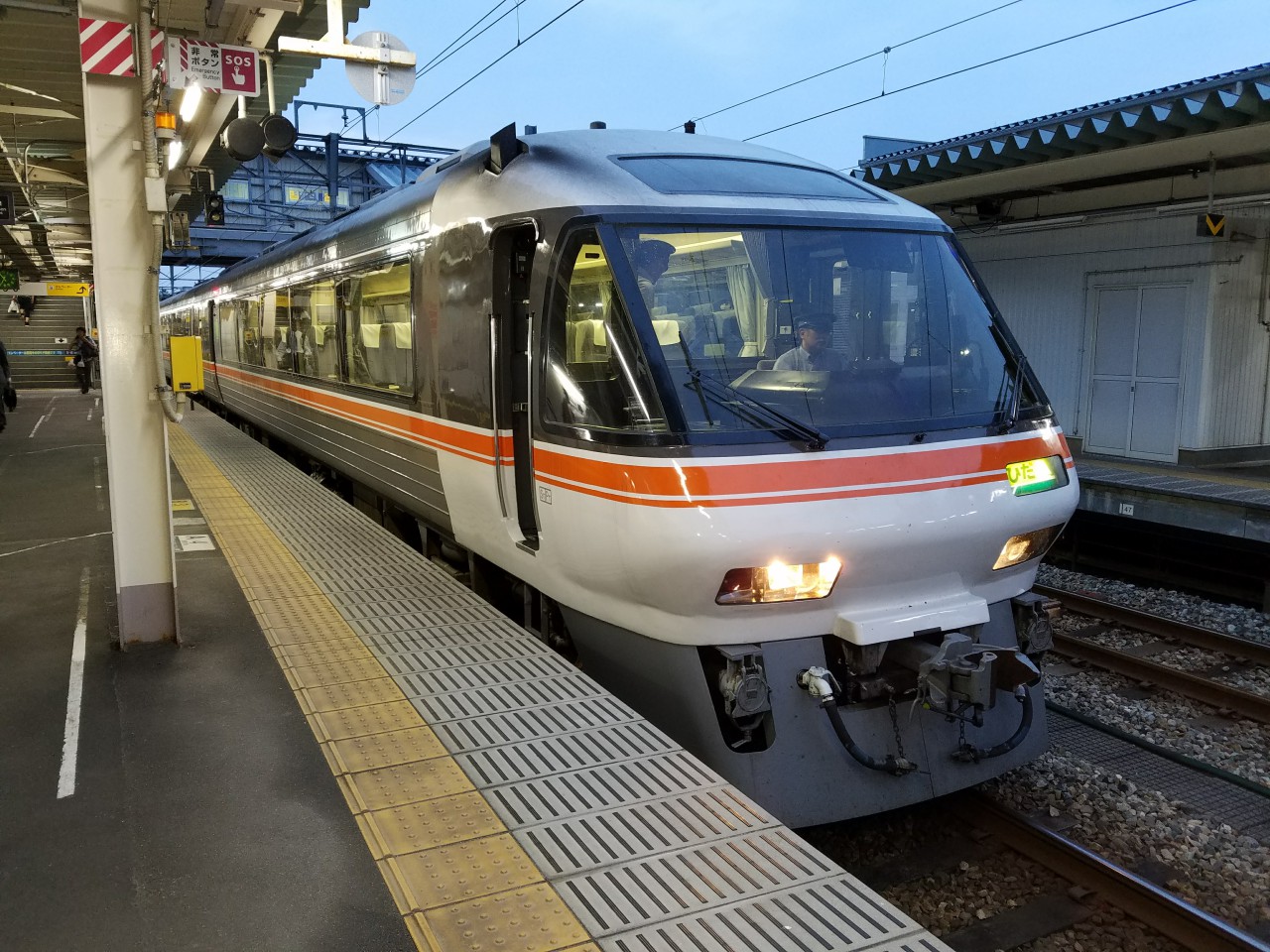
But if you have a JR Pass , all are free.
From Tokyo to Takayama
From Tokyo to Takayama will be farther, guys. And moreover, traveling is also more difficult because it’s no direct train line from Tokyo to Takayama. There are 2 ways to get Takayama like from Kansai: bus and train. The traveling cost is almost twice as expensive.
Taking a train from Tokyo to Takayama will need to go through Toyama because Takayama does not have a direct train line to Tokyo. The fare is the same as taking Shinkansen which takes 6 hours to travel, too long!
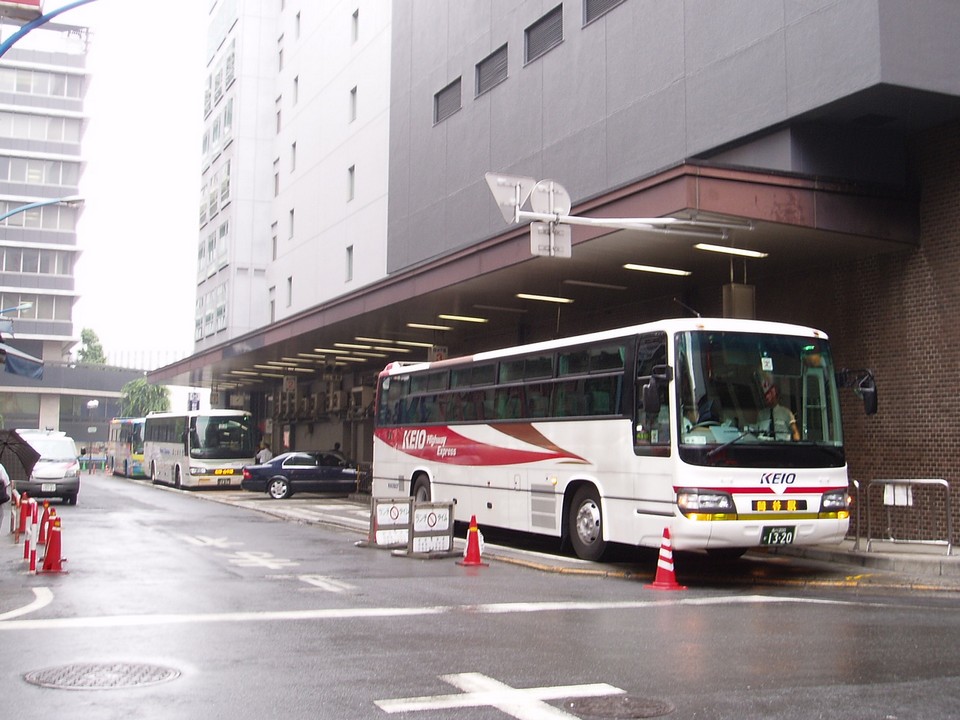
To take a bus from Tokyo to Takayama, you should go to Shinjuku station and then take a bus to Takayama of Nohi Bus or Keio Dentetsu Bus.
The total cost is up to 6,500 – 7,000 yen/way. In regard to traveling time, please see the table below:

Traveling by bus is better than taking train because you don’t have to change lines. Moreover, the traveling time for both is the same, the bus fare is less than half.
But in general, I still think that if you have planned to go to Takayama, departing from Kyoto is the most reasonable for you, because it’s both cheap and close.
Tips: In general, if you getting from Kyoto to Takayama and traveling around cities in the Japanese Alps and want to save money on travel, you can use this pass: JR Takayama-Hokuriku Area Tourist Pass (5 Days).
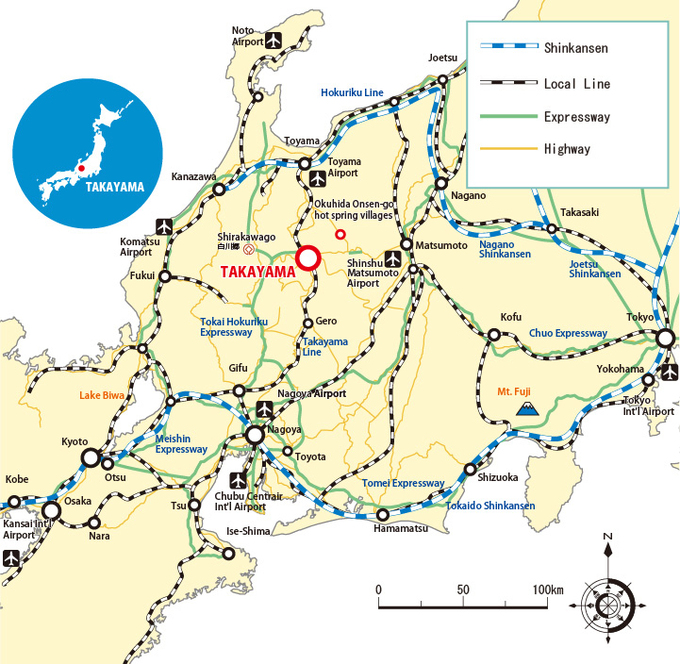
Takayama guide: Getting around Takayama
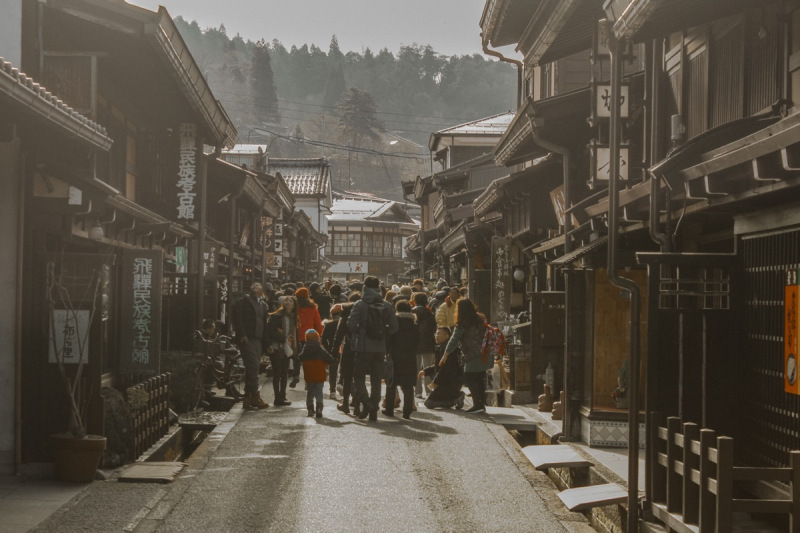
The famous attractions are located very close to the central station (within a radius of only 1km), so I find the best way to go is to walk, both being able to admire the beautiful scenery on both sides of the road without spend much energy.
Alternatively you can take a bus. Actually, there are also not many bus routes in the city, only 2 lines:
- Sarubobo: Mainly going to Hida Folk Village. Price 210 yen / way (equal to Kyoto).
- Machinami: Connecting small tourist spots in Takayama. Price is only 100 yen/trip.
Takayama blog: Where to go, what to do?
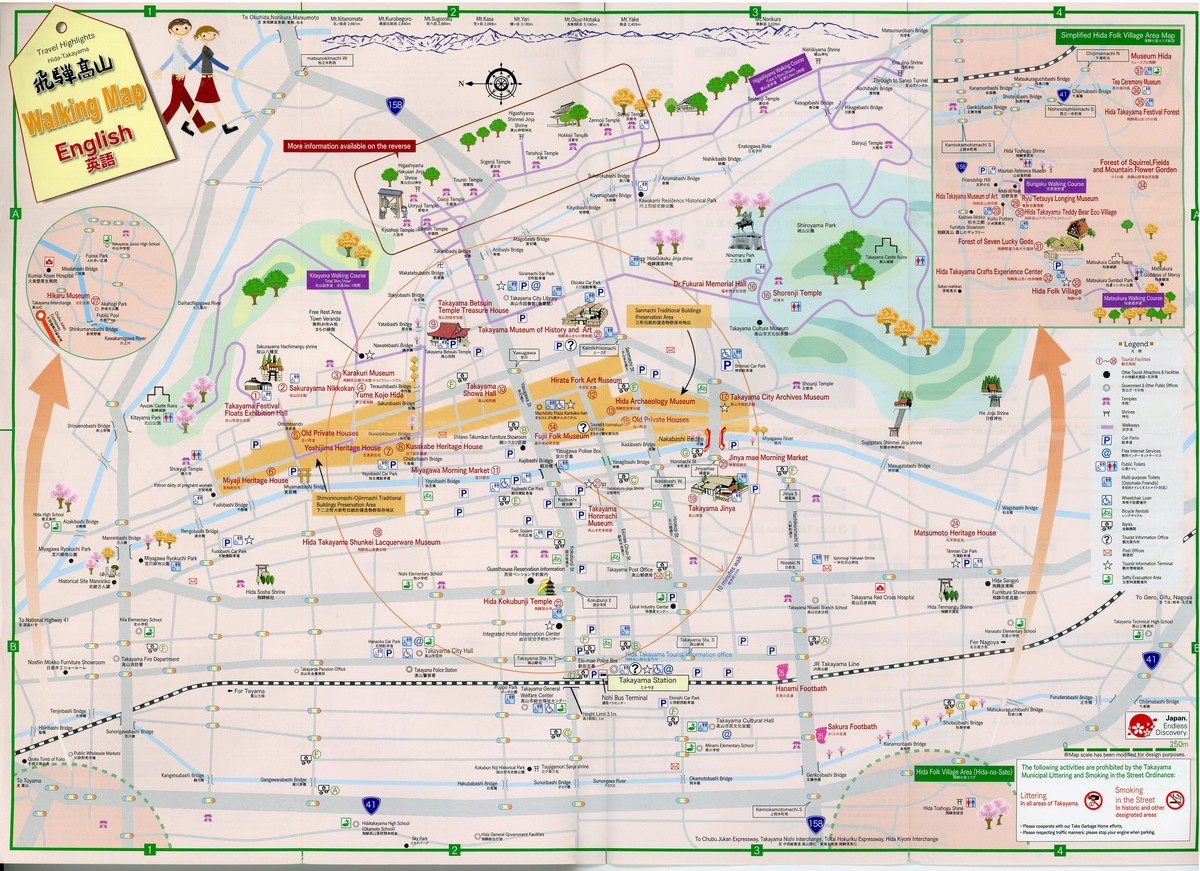
The most characteristic feature of Takayama is the ancient, quiet, nostalgic beauty of a peaceful but prosperous city. Below are top places to visit and best things to do in Takayama.
Hida Kokubunji Temple
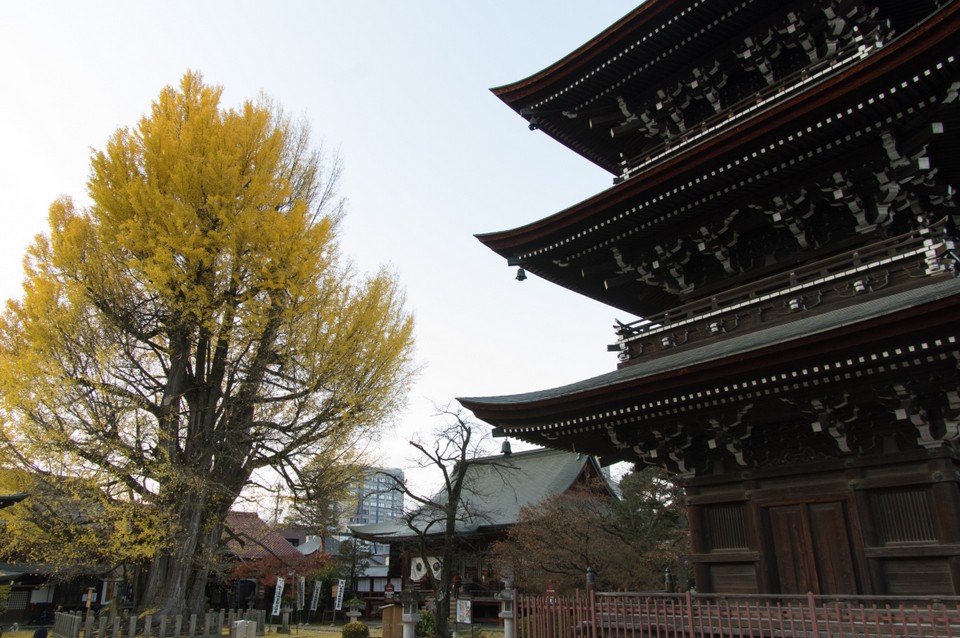
Actually, at first I planned to visit Miyagawa Morning Market without pay attention about this temple. But when passing by, seeing the temple is so beautiful with ancient architecture, so I stopped by to visit. Then, when I check information, I found out that this is a very famous temple built by Emperor Shomu in the Nara period (710-794).
The symbol of the temple is the icho tree (ginkgo tree) with a lifespan of more than 1250 years, the tree is very tall with luxuriant leaves. When I came, I just wished it was autumn, so I could admire the beauty when the leaves turn yellow like this.

Address: Japan, 〒506-0007 Gifu, Takayama, Sowamachi, 1 Chome−83
Miyagawa Morning Market
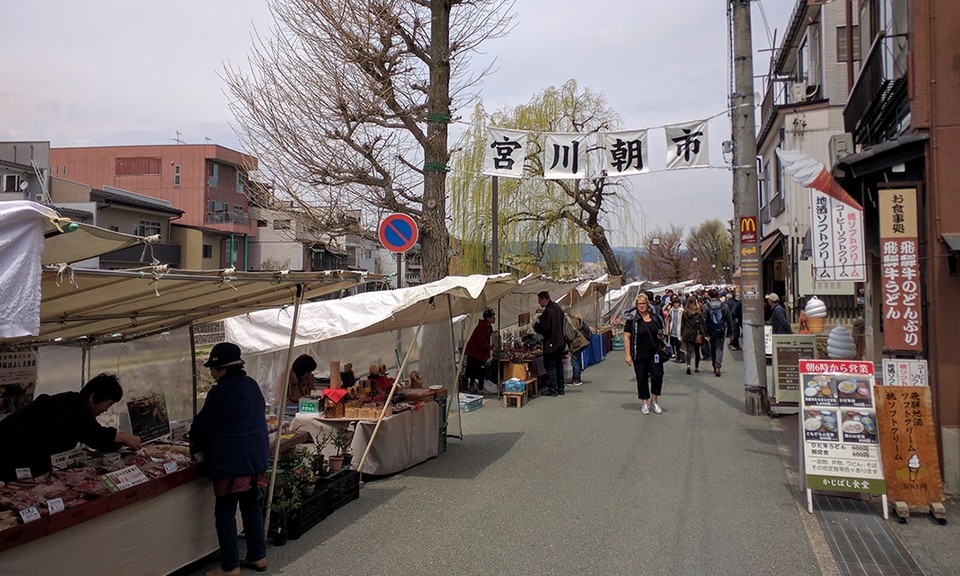
This is a morning market only open from 6:30AM-12AM, so you should take advantage of going early. The market is located by the gentle Miyagawa River, the river section near the market there is the very beautiful and bold schooling fish, you can buy food at the market to feeding them.
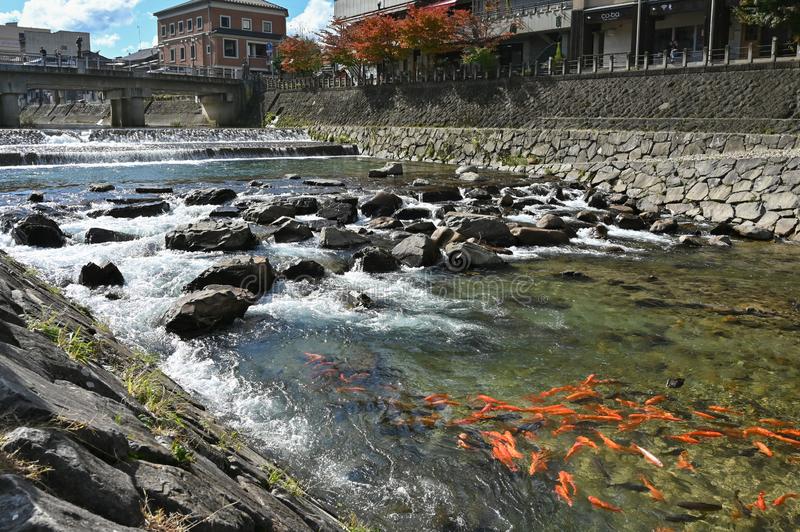
The market is quite busy and bustling with many shops with colorful products, items mixed with green-leaved grapevine fences with full of fruit.
The market sells a lot of cheap fresh agricultural products of local people, gradually towards the end of the market are souvenir shops. The number of tourists here is so crowded that the Japanese farmers can communicate in English with them, making me feel like I’m in Saigon’s District 1.
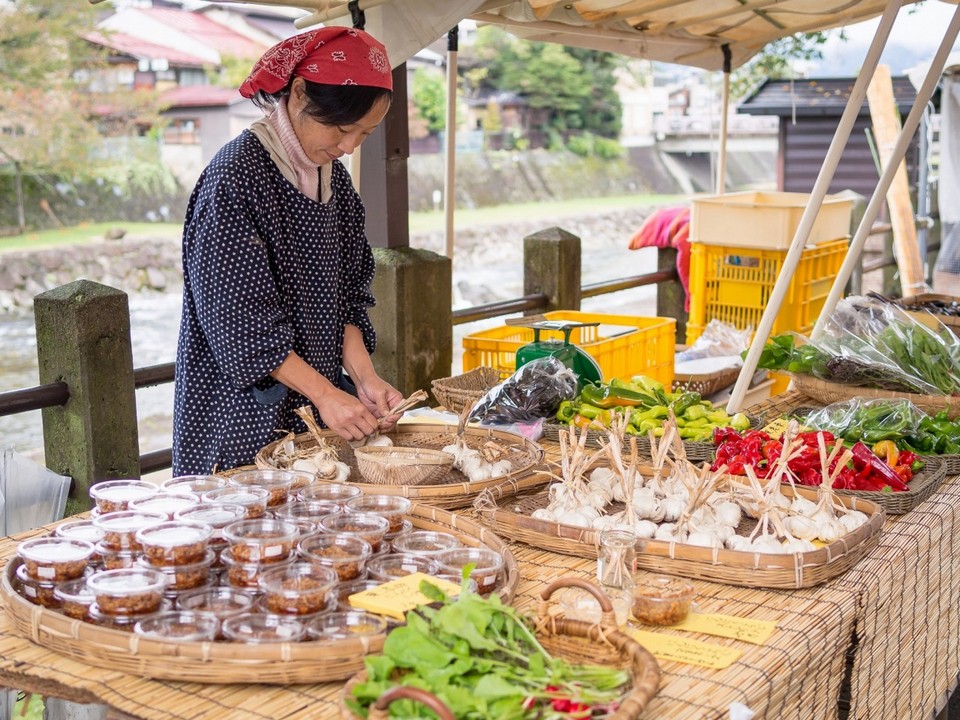
The market sells countless delicious foods, especiallyだんご (dango) and おわら玉天 (owara tamaten). Dango is a mochi cake dipped in sauce and grilled with a very attractive aroma and cheap price (only about 100 yen / 1 skewer). In addition, if you want to eat sweet, choose owara tamaten, which has a light sweet, soft and spongy taste with an attractive golden color.
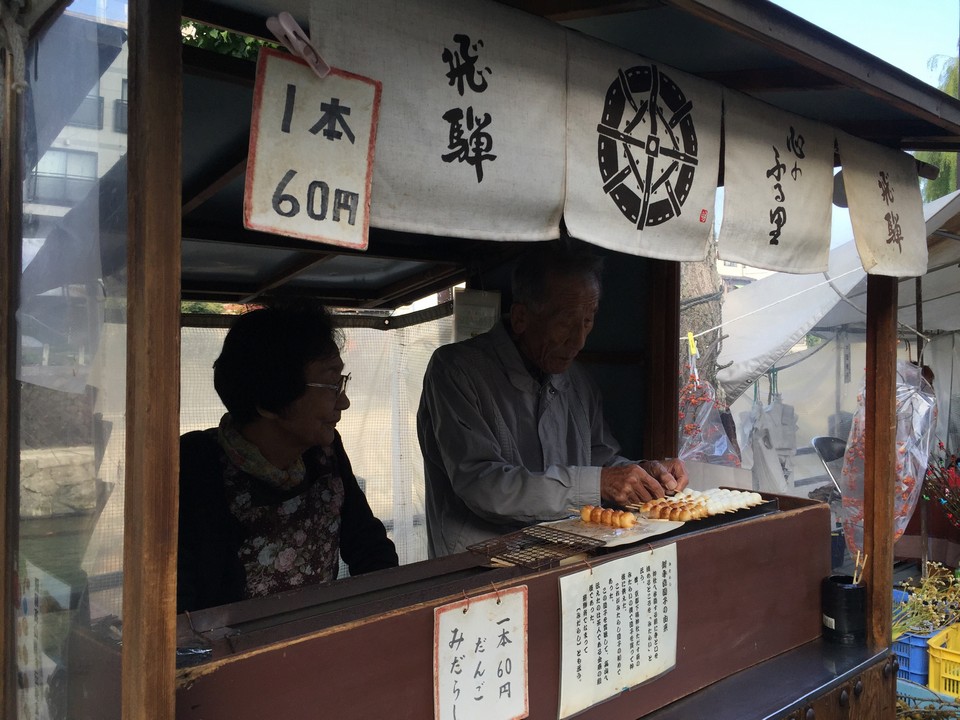
Sanmachi Suji Old Town
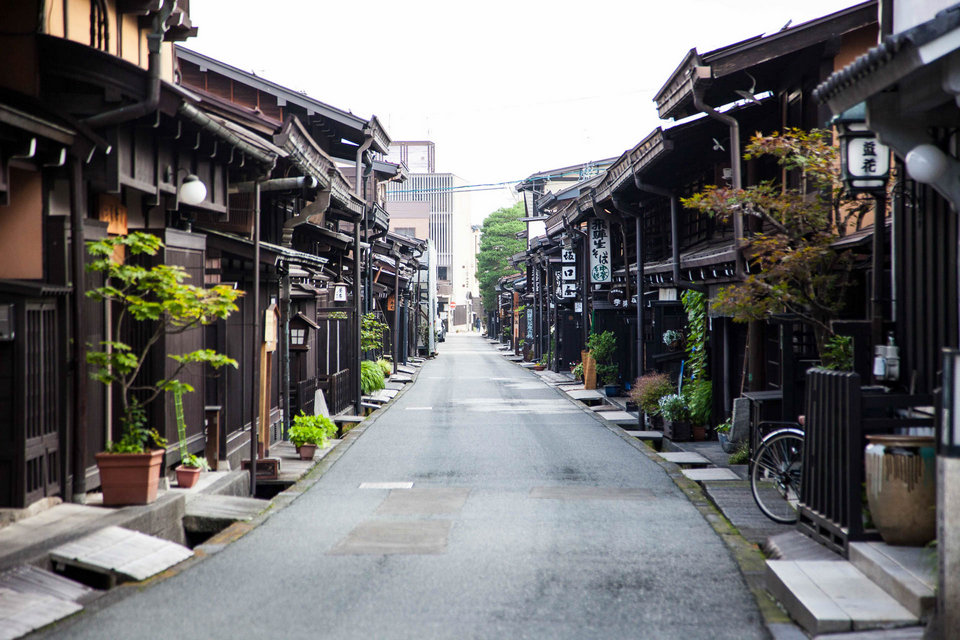
Just a few steps from the morning market, the streets dating back the Edo period are bustling with tourists with wooden souvenir shops, restaurants, bars… The items, products sold in these streets are extremely sophisticated and are made by skilled artisans. Most are traditional animal-shaped crafts and jewelry.
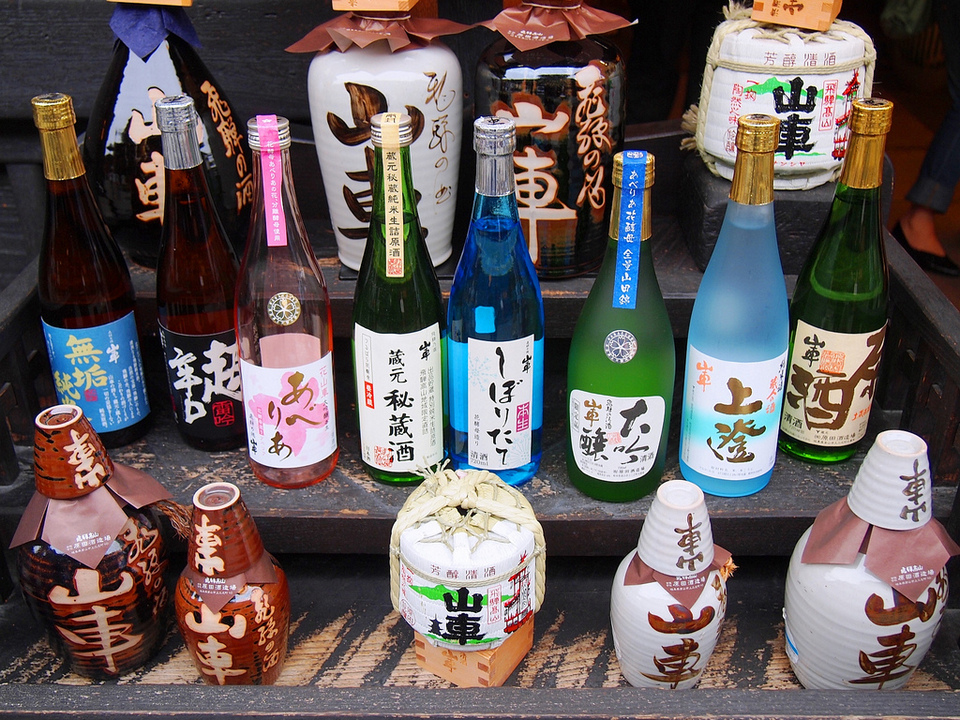
This ancient town with some restaurants specializing serving premium Hida beef (which is one of the delicious beef in Japan), you can try beef sushi (beef placed on rice like nigiri sushi) or yakiniku (grilled beef) but you have to wait because there are always many diners already lining to try.
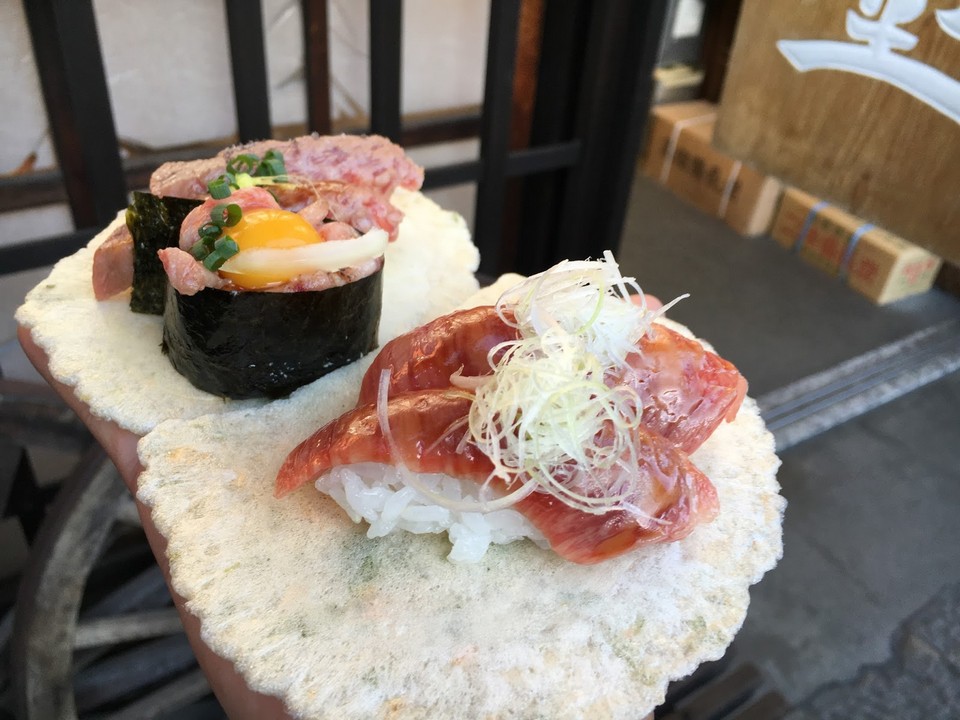
Funasaka Sake Brewery
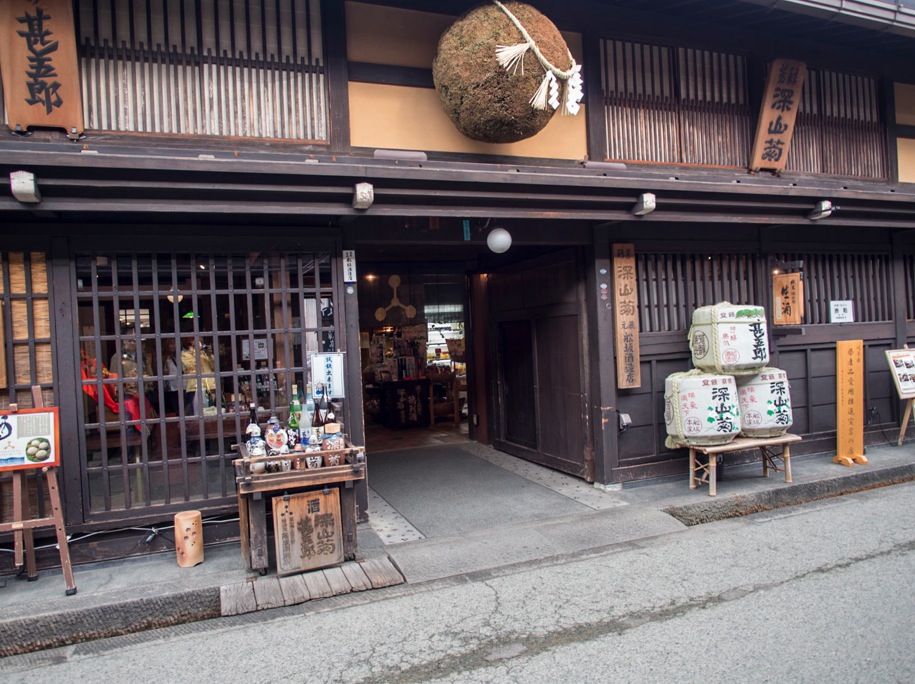
After enjoying Hida beef, don’t forget to visit 船坂酒造店 (Funasaka Sake Brewery) which is a sake brewery with an over 200-year history and still applies the traditional brewing technique using high quality rice. At the shop you are allowed to taste a few small cups of sake wine rice for free, or you can buy a slightly larger jar for 200 yen or more. The interesting thing I see here is that when drinking, people put a little salt on the mouth of jar, when sipping the salt penetrates the tip of the tongue combines with the strong taste of the wine, making the taste even more intense.
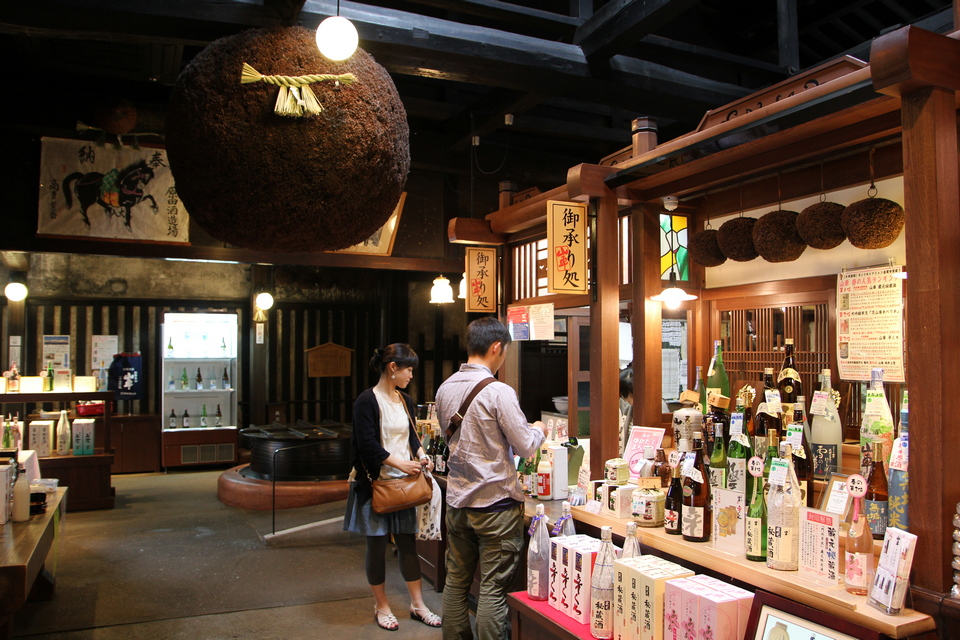
Address: 105 Kamisannomachi, Takayama, Gifu 506-0846, Japan Hours: 9AM–6PM
Nakabashi Bridge
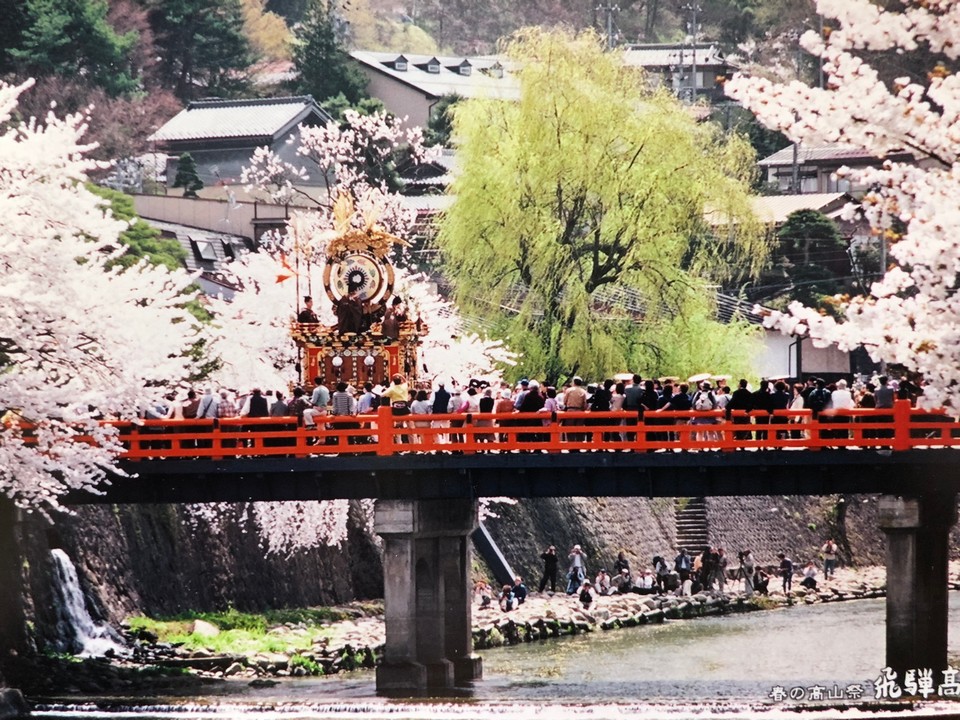
Strolling around the old town, you will see the Nakabashi bridge, which is considered the symbol of the city. Nakabashi is a red bright bridge refecting itself on Miyagawa River with along its banks are lush green of willow trees and cherry blossoms bloom in spring. The bridge is famous for its view of sakura (cherry blossoms) in spring, and during the festival season, it is a very attractive place to watch the Yatai procession pass.
Lovely museums and unique cultural experiences
Not only has beautiful shops, traditional Machiya houses (traditional wooden townhouses), but Takayama also has interesting museums such as:
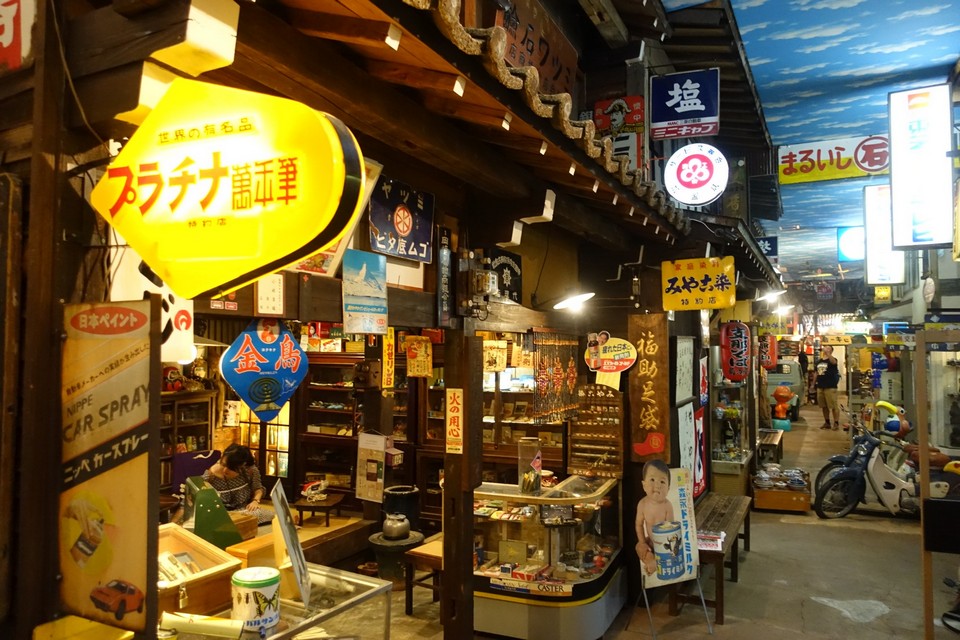
- Karakuri Museum: The puppet museum. Entrance fee is 600 yen. It displays many interesting puppets that are performed on boats during the festival here.
- Takayama Showa Museum : This is like a movie recording every moment of the old life. Everything in Takayama in the 60’s and 70’s with many artistic pictures and many things related to both Old Manga and Anime too.
- Hida Folk Village (Hida no sato) : An open-air museum with typical inverted V-shaped thatch-roof houses similar to those in the ancient village of Shirakawago – the common thing of the Gifu mountainous region. To get there, you must take a bus ride from Takayama station. A special thing here besides the old houses and the feeling of experiencing Oshin’s time, you will be able to join the Hida Takayama Crafts Experience Center to make antique toys from the past. The entrance fee is 600 yen. The price of making each toy is charged according of each experience.
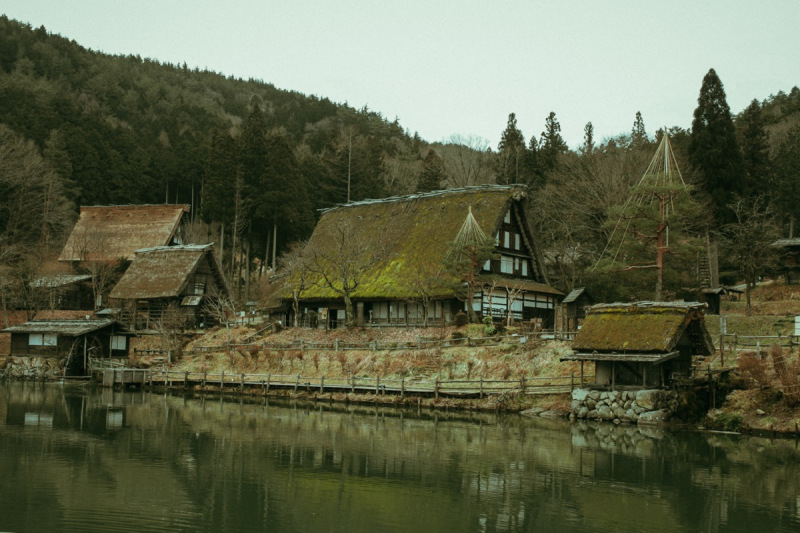
Yoshijima Heritage House
A place to visit when you come to Takayama old town that cannot be missed is the world heritage house of Yoshijima – built in 1907, which was originally a sake brewery. The house is a typical house of Edo period and is still very strong thanks to the columns and beams made of solid wood. Not only visiting the architecture of the house, walking around the garden, but you can also enjoy sake here!
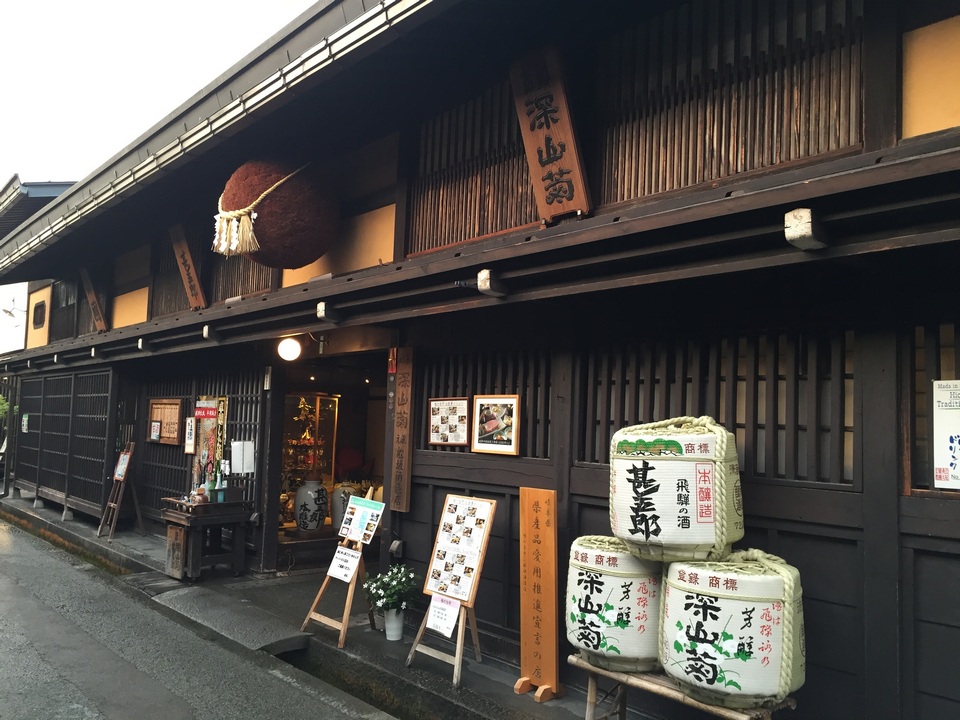
Address: 1 Chome-51 Oshinmachi, Takayama, Gifu 506-0851, Japan Hours: 9AM–5PM
Sakurayama Hachimangu Shrine
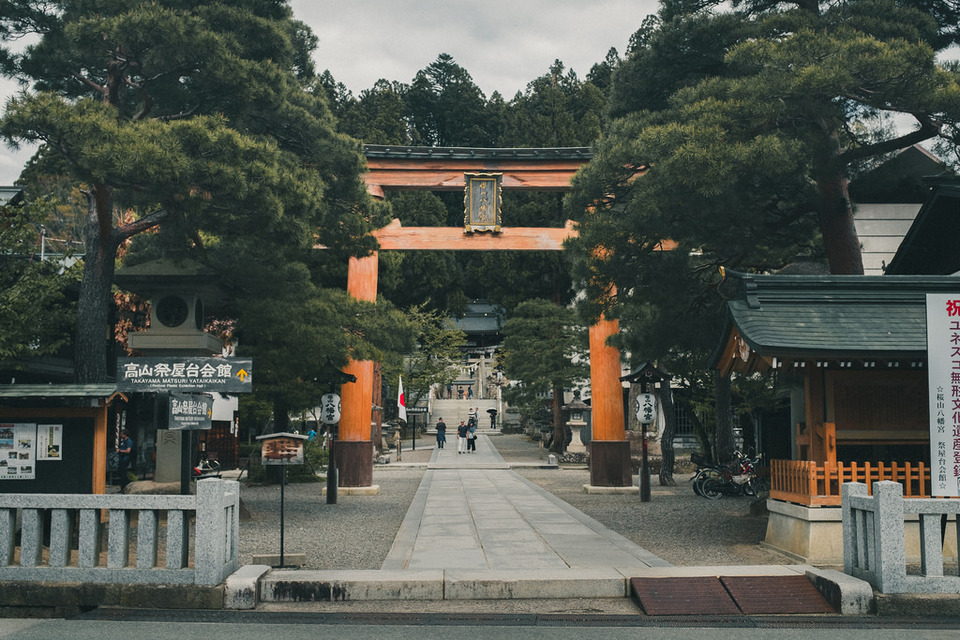
Sakurayama Hachimangu is the oldest shrine in Takayama. This is a small wooden shrine, surrounded by a lot of big trees, very peaceful, quiet and suitable as a resting place in your Takayama old town tour. This place is also very close to the Takayama Festival Floats Exhibition Hall, you can combine to visit on one journey!
Address: 178 Sakuramachi, Takayama, Gifu 506-0858, Japan
Historical Government House (Takayama Jinya)
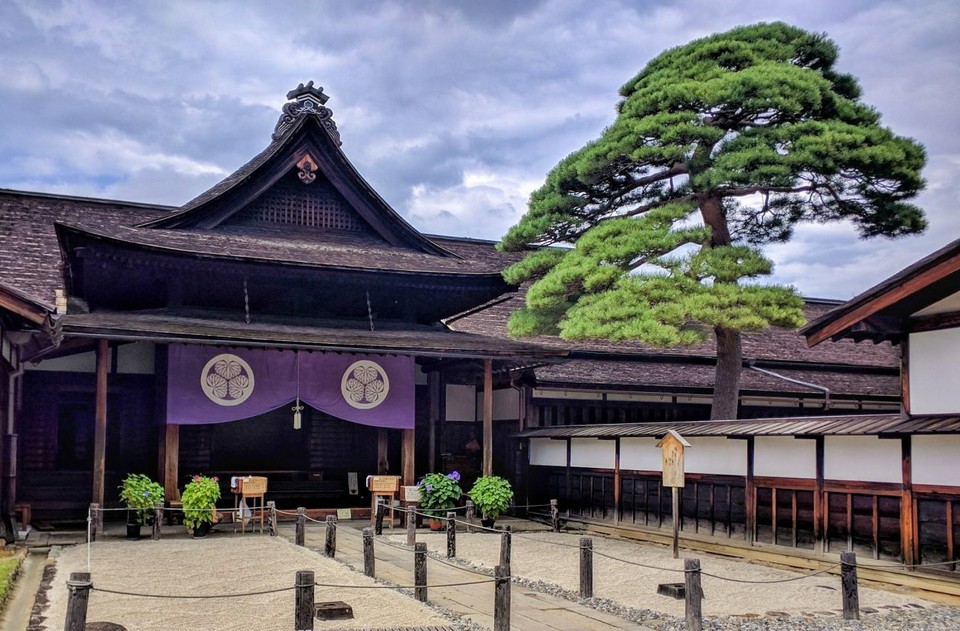
Located a few minutes’ walk from the Sanmachi neighborhood, Takayama Jinya is a building that served as the local administrative office of the Tokugawa shogunate that ruled Japan from 1600 to 1868. Exploring the building’s rooms and interiors, you can learn how trade was managed in ancient times.
Address: 1-5 八軒町 Takayama, Gifu 506-0012, Japan Hours: 8:45AM–5PM
Takayama guide: What and where to eat?
Although I was only in Takayama for 2 days and 1 night, I still remember the restaurants here I used to visit. Takayama belongs the mountainous province of Gifu, so here all the delicious local restaurants use Japanese. But don’t think that this is a mountain town that despises, the price of food in Takayama in my opinion is as expensive as places like Kyoto and Tokyo, but sometimes even more expensive.
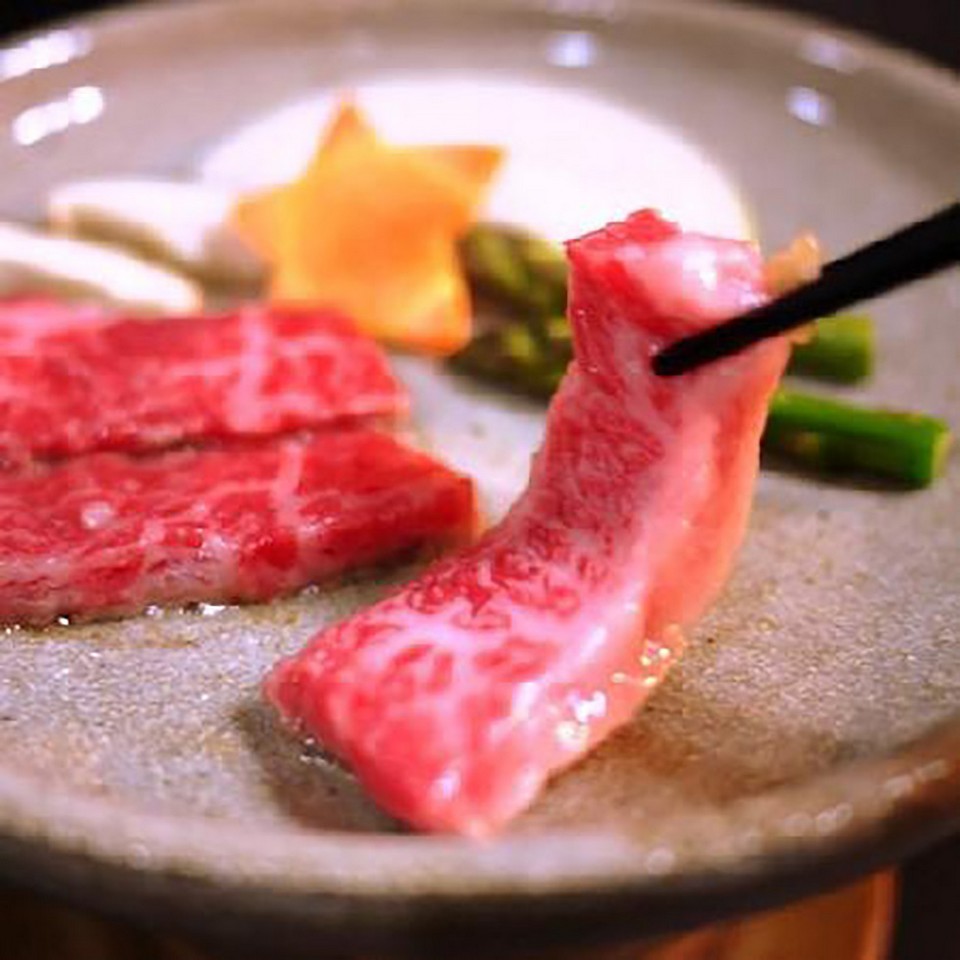
If you are a foodie, don’t miss this very famous dish, which is Hida beef. When it comes to beef, everyone thinks that in Japan, Kobe is the only region that produces high-quality beef, but when you come to Gifu, forget about Kobe and enjoy premium beef called Hida beef – The specialty of Gifu prefecture.
Some restaurants to try Hida beef as below. You just need to search for this exact name on Google Maps to find out.
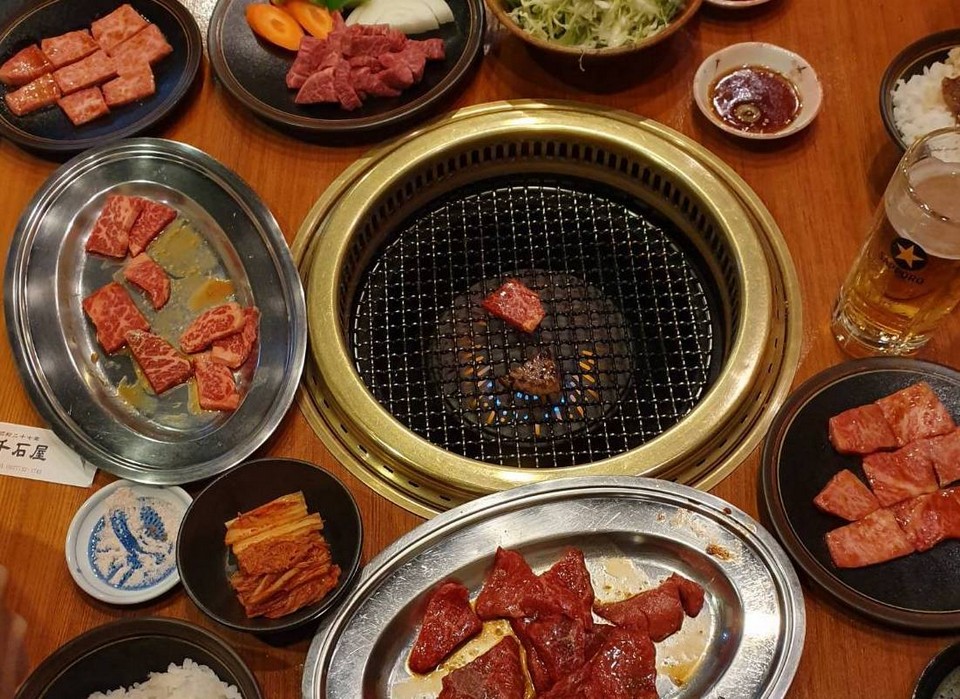
- Hidagyu Maruaki: Expensive but deserve. 1 set meal costs about 6,000 – 7,000 yen but all are A5 beef – the highest grade. A regular set meal is about 3,000 – 4,000. It’s the most famous restaurant in Takayama.
- Hida Takuma: This is very cheap shop, especially at noon. If you only want to enjoy Hida beef, choose the cheapest dish is Gyūdon (beef rice) for about 1,500 yen.
- Ajikura Tengoku: This is the second famous restaurant in Takayama with hotpot sets that are also quite cheap: 3,000 – 4,000 yen/set for 2 people. You can order extra side dishes for 600 – 1,000 yen.
- Kitchen Hida : The price is not cheaper, but the restaurant is western style, so the style is also different. A plate of steak is also about 5,000 – 7,000 yen. Generally expensive. But the restaurant’s atmosphere is quite ok, so if you like it, you can try it.
- Hidatakayama Kyoya : Contrary to the shop above, this one is very traditional. The price is also cheap, 1 beef set meal is about 2,000 yen including rice and side dishes. The decoration is very special, bold Japanese style.
- Yamatake Shoten : Cheap price but has very good review. The price is about 3,500 yen / for a full set with beef, vegetables and side dishes along with 2 ounces of beef. Recommend this restaurant because of cheap food + good reviews.
- Sakaguchiya (坂口 屋) is the birthplace of the best Hida beef sushi in Takayama. Restaurant Sakaguchiya was originally an inn that first opened in 1907 and is very popular in the area. Many high-class diners have stayed here, including Emperor Heisei’s brothers. In the middle of the Showa period, the inn opened a small sweets shop in front of the house and was very popular with visitors to Takayama.
It wasn’t until 1983, the owner reinvented the inn into a Sakaguchiya restaurant that specializes in local specialties. And also from this place was born the legendary Hida beef sushi placed on senbei rice cake, becoming the ideal street food when walking around the old town of Takayama.
This sushi is served with premium Hida beef, which is delicious and melts in your mouth with one bite. One of the best things is that their plate is made with rice cakes (senbei). You can eat the senbei plate after you finish eating the Hida beef sushi.
Grilled Hida beef on Houba Miso leaves
Houba miso is a specialty of Takayama that features miso paste spreading on a houba leaf and then grilled over charcoal. When the leaf is grilled, it releases a special aroma, which blends with the miso to create a rich and intense flavor!
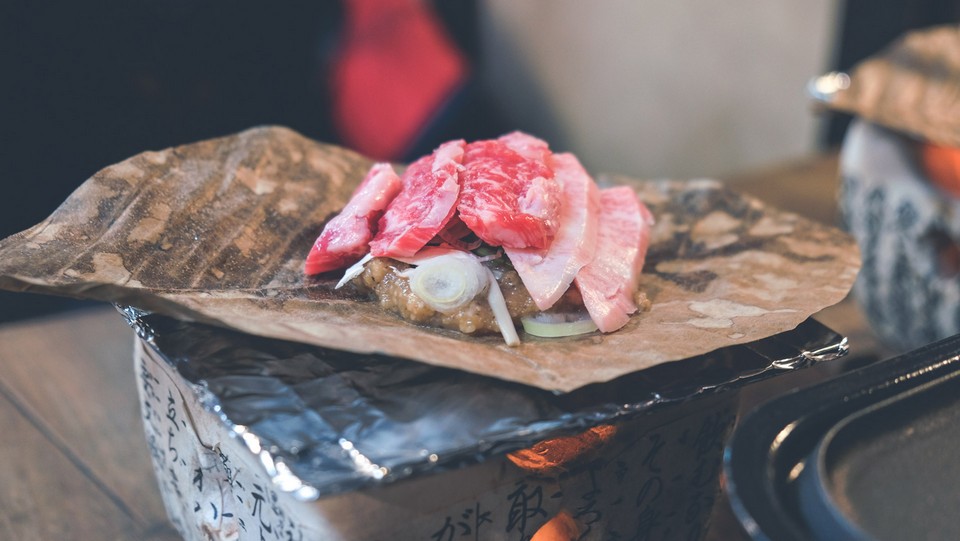
After that, Hida beef, sliced very thin and beautiful, will be put on a houba leaf to be grilled with Miso. Thus, the beef after grilling will have a rich, unique flavor of miso and houba leaves aroma, eaten with hot rice in winter or any season in Japan is nothing like that! I will die of craving for this specialty of Takayama region!
To try Hida beef grilled on Houba Miso leaves, you can visit two famous places in the area, Hidatakayama Kyoya restaurant (reviewed above) and Suzuya restaurant (寿々や).
Train Bleu Patisserie Bakery
In Takayama city, there is a long-standing famous bakery, Train Bleu Patisserie Bakery with a famous story about the owner of the bakery, despite being a talented person, but returned to his hometown with the desire to serve the local people and he has received a lot of students who have desire to stay and serve the people of the city.
Why is this bakery so famous? Of course the main reason is that the pastries here are made deliciously, the owner of the shop is a person who has won many awards for making bread not only in Japan but also around the world. In addition, he is also known for being extremely careful and meticulous, so each bread is made with absolute care to create a perfectly delicious cake.
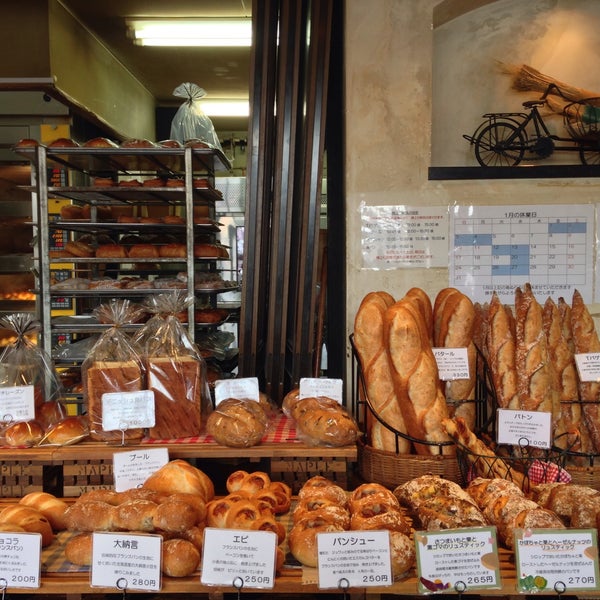
However, the bakery is delicious and famous, so be prepared to wait. I waited in line for an hour and a half but the return was deserved it. Delicious and very fragrant pastries with limited quantity, variety of designs and new flavors. Some are soft and sweet, some are crunchy and fragrant of sesame, and some are fatty with cheese flavor… and especially because I have to wait in line for a long time, when I eat, I feel cherished each cake. For me, this is a very interesting experience.
Address: 1 Chome-73-5 西之一色町 Takayama, Gifu 506-0031, Japan Hours: 9:30AM–6PM/Wednesday, Tuesday: Closed
Takayama guide: What to buy?
Sarubobo dolls.
When it comes to souvenirs, Takayama’s most famous is the Sarubobo monkey doll (red human-shaped dolls), which is considered a lucky charm to pray for good fortune, healthy delivery. I see this doll being sold everywhere, in addition, there are various types of dolls that are modified with the basis of this monkey doll.
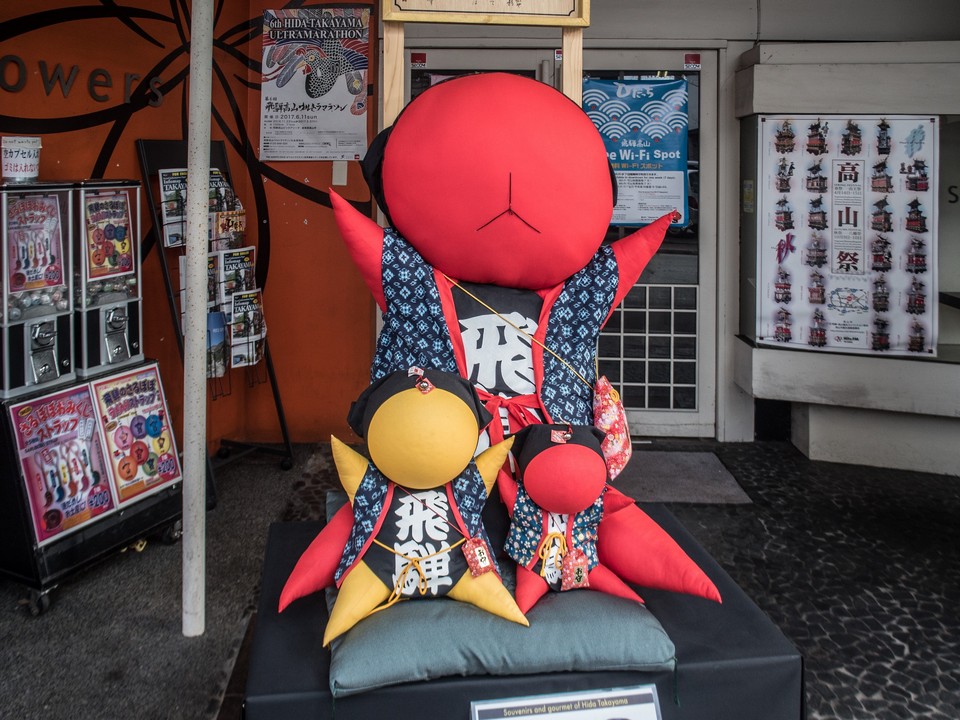
Doll making experience: If you want to experience Takyama doll making, you can go to: Hida no Sato (if there are more than 10 people) or Hida Takayama Omoide Taiken Kan Hall (if you go alone or few people). The price for one experience is 1300-1400 yen.
Takayama Ramen
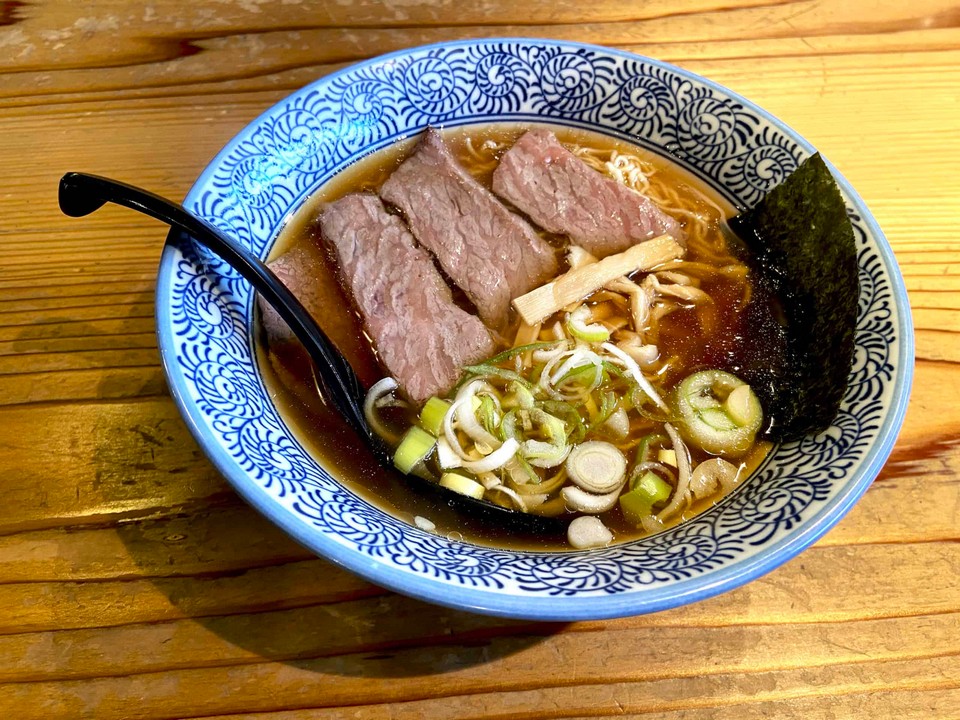
Another famous Takayama specialty is Ramen, also known as Takayama Ramen. However, the ramen here has very different flavor from other regions in Japan. The broth is made from chicken bone and vegetables, so it has light sweet taste and clear. Thinly sliced yellow noodles, with wontons added, similar to Chinese noodles.
The ramen shop I recommend you should try is Tsuzumi . This is one of the oldest ramen shops in Takayama. The taste of the ramen here is said to keep the original taste of Takayama Ramen from the past.
Actually, if compared to Kyoto or Tokyo, the price per bowl of ramen is not cheap at all. But ok, it’s also acceptable. 1 bowl costs about 900 – 1,000 yen.
Tea ceremony and Wagashi
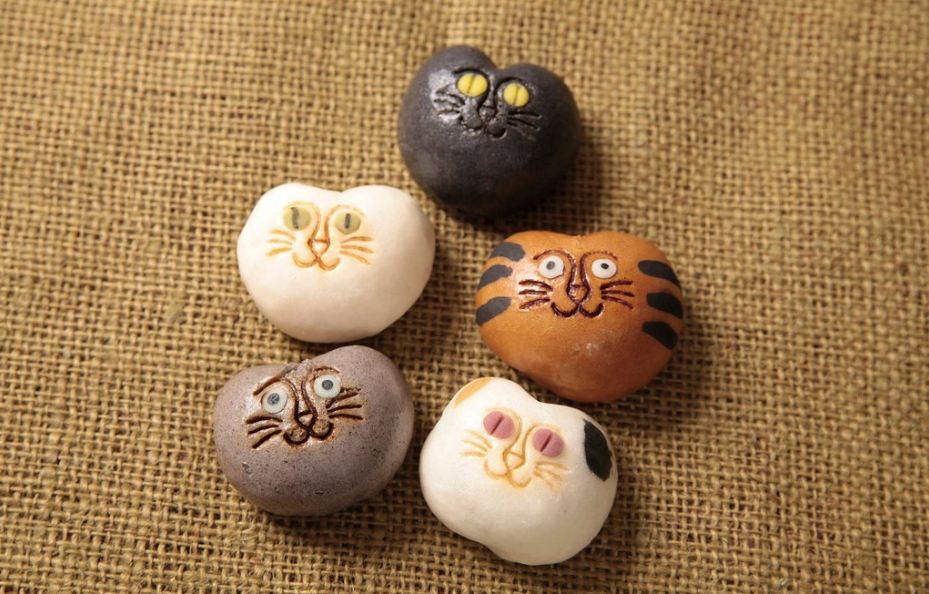
In the old town of Takayama there is an old Wagashi store called Tohoen that has been in business for over 110 years. If you want to try the famous traditional Japanese Wagashi sweets, be sure to visit this shop.
Wagashi at this shop are not only delicious, but also very beautiful and delicate, as they can emulate and convey the taste of Japan’s natural transformation through the four seasons.
For example, the snow on pine trees in winter, cherry blossoms in full bloom in spring, fireworks and fireflies in summer, autumn leaves and chestnuts in autumn have all been scaled down and simulated through small pretty Wagashi sweets. Recently, the shop is also famous on TV for Manju cakes shaped like Japanese cats. Especially during the Covid-19 epidemic time, cats can also wear masks!
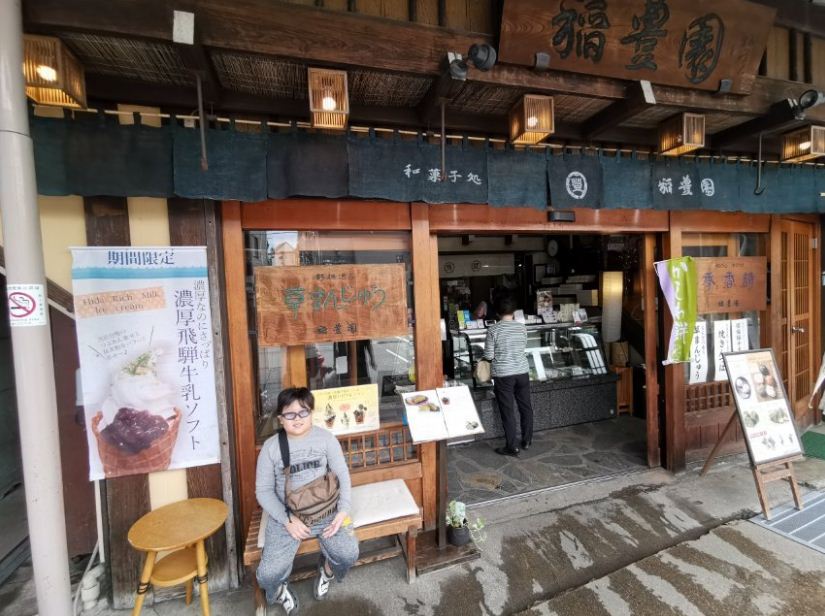
Mitarashi dango
Mitarashi dango is traditional Japanese mochi in which mochi sticky rice dough is molded into small round balls, then covered with sauce. Usually, Mitarashi dango is covered with sweet soy sauce like malt sugar sauce. But in Takayama, people lightly pour soy sauce over dango, then grilled it to give off the fragrance of the sauce. Sticky rice cakes in the form of small round balls are easy to hold and enjoy when you walk around the old town.
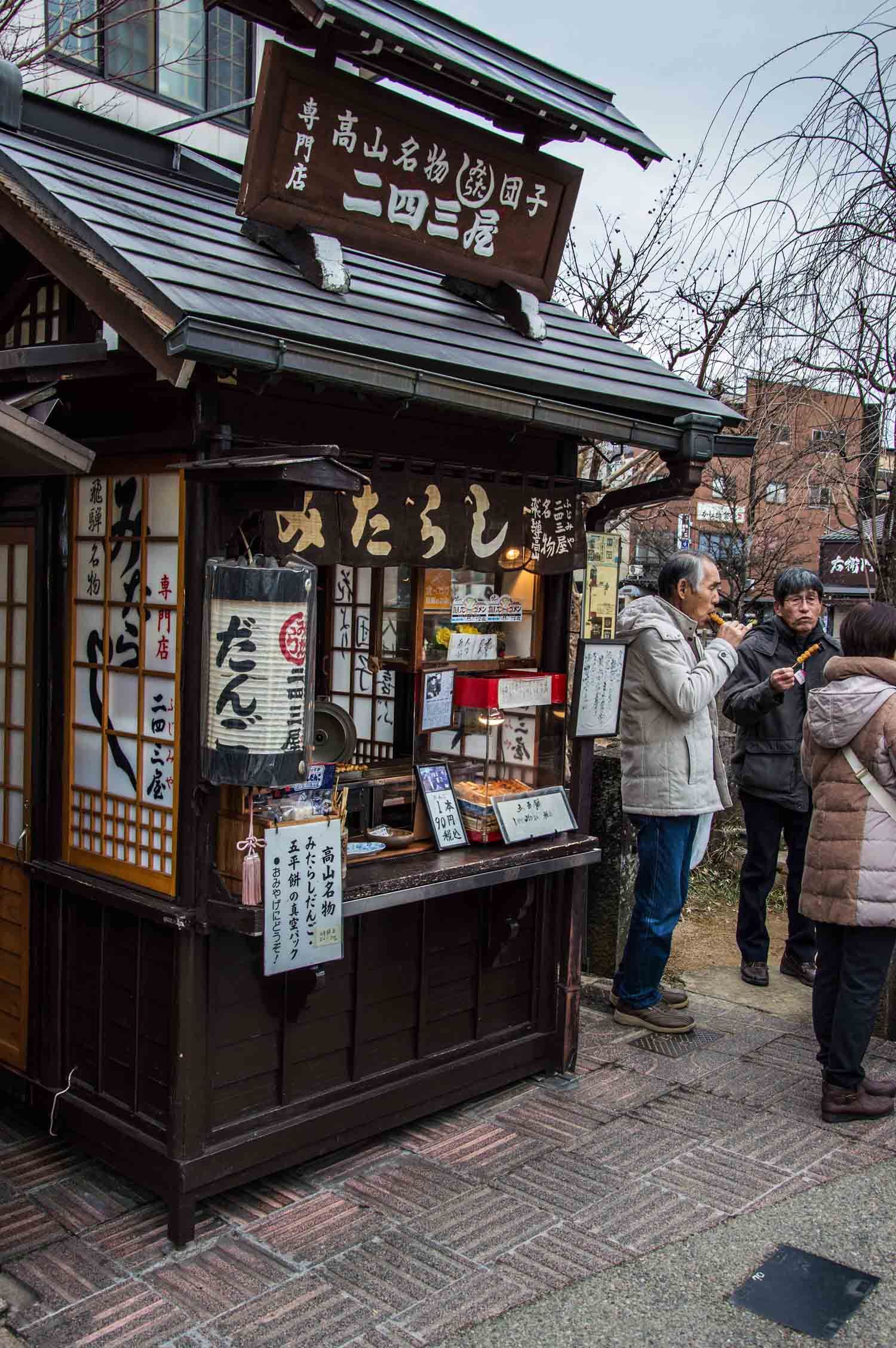
When you wandering around the old town of Takayama, you will see a lot of stalls selling Mitarashi Dango. The most famous of them all is Jinya Dango, a store that has appeared in historical movies and TV series. However, you can buy it at any stall in the old town that I can easily see, because any shop selling Mitarashi Dango is equally delicious!
In addition, you can stop by an izakaya (traditional Japanese pub) tro try local cuisine and sipping sake, cheap, delectable.
Takayama travel blog: Day trips from Takayama
Takayama is Gifu’s capital, so it’s the largest transportation hub in the region. From Takayama, you can make day trips to others, such as:
- Shirakawago and Gokayama Ancient Villages: 1 hour and 20 minutes by bus.
- The large Onsen areas such as Hirayu Onsen, Gero Onsen, Fukuji onsen, Tochio onsen, Okuhida. The bus ride is just over 1 hour.
- Kamikochi: It takes 3 hours to come but the scenery is amazing.
- Norikura skyline: A beautiful snowy peak of Gifu.
- Tateyama Kurobe Alpine Route: The famous snow-white road.
- Shinhotaka Ropeway: Enjoy a beautiful view of the snowy mountains.
- Kanazawa: An old city that’s as quiet and beautiful as Takayama, the birthplace of Geisha.
- Nagoya: The most famous city in central Japan, where there is a famous lantern light-up festival.
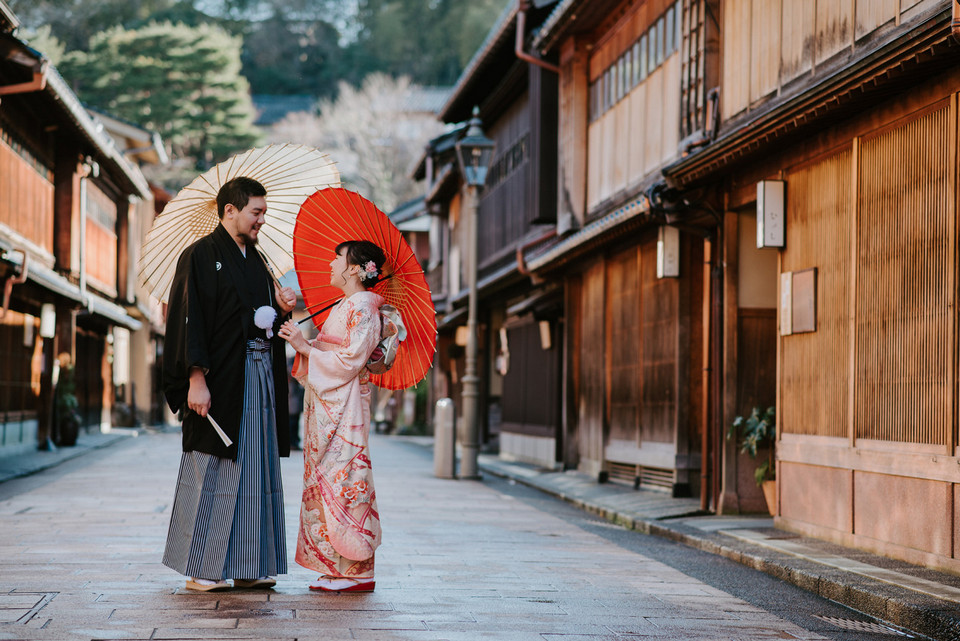
My advice is for those of you who have a short trip with a large group, you can refer to booking a day tour to Shirakawago from Takayama. The cost for a tour is about 6,000 – 7,000 yen/tour including lunch. Or choose a tour on the occasion of winter light-up festival, the costs is about 12,000 yen.
Hida-Takayama guide: Where to stay?
Let’s talk about the hotel in Takayama. In Takayama, there are many different types of accommodation, I like hostel because it’s cheap and convenient, but those who like to enjoy the classic Japanese atmosphere, you can consider to stay in Ryokan (traditional Japanese inn) which is expensive but very Japanese style.
My rules when choose to staying in hostel in expensive place like Japan are:
- Stay in a private dorminity room (dorm), separate women or men.
- Choose a hostel near a train or bus station.
I planned to take the bus from Takayama to other tourist attractions, so I immediately chose this hostel near Takayama station . What’s more interesting is that this hotel offers a tour to Shirakawago with a cheaper price than other tour agents, so it’s more suitable for me. The room rate for one night is $20 – $25/person/night (inexpensive but ok in terms of quality).
Having been to the mountainous region of Japan, let experience of staying in a ryokan. Really worth a try. In addition to being traditional, staying in a ryokan also offers many experiences, perks that you has never tried before:
- Experience sleeping in a Futon mattress: Lying on the ground + spreading a mattress on the floor to sleep.
- Sitting in groups around a traditional Japanese Kotatsu table: a small table with a blanket covered.
- Soaking in a hot tub feels like in a movie, a good ryokan even have its own onsen, really relaxing.
During my visit I stayed in Oyado Hachibei which located just only 15 minutes from JR Takayama Station by taxi. The ryokan has its own outdoor onsen along with delicious and subtle cuisine. You can seserve a room in advance via Booking.com or Agoda.com .
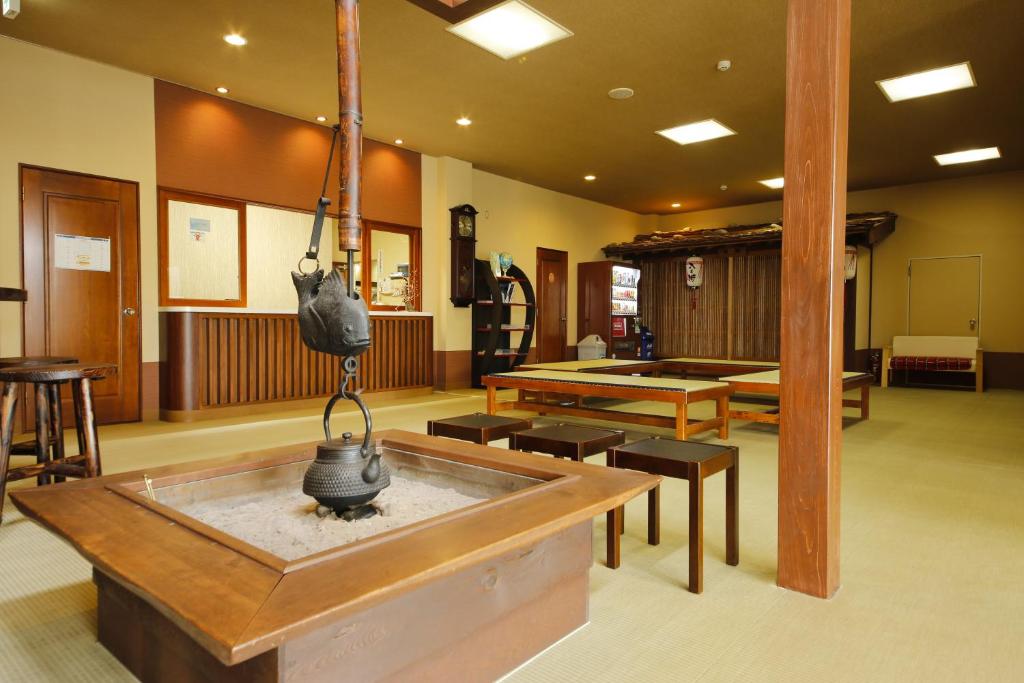
Below we recommend more best budget, mid-range and upscale hotels with good ratings and reviews you can refer to.
- Wat Hotel& Spa Hida Takayama ( Agoda.com or Booking.com )
- Ryokan Asunaro ( Agoda.com or Booking.com )
- Hida Hotel Plaza ( Agoda.com or Booking.com )
- Takayama Ouan ( Agoda.com or Booking.com )
- Oyado Yamakyu ( Agoda.com or Booking.com )
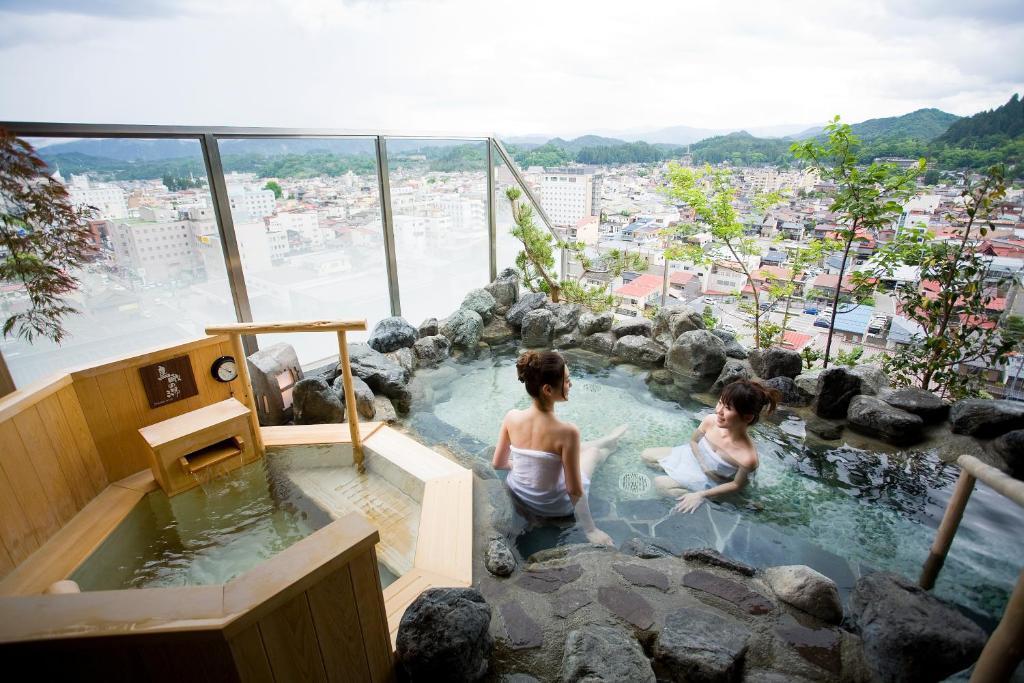
Check out more top hotels in Takayama on Agoda.com or Booking.com .
Takayama blog: Takayama travel itinerary
Takayama is considered one of the best tourist cities in central Japan, especially in the Alpine mountains, so you should arrange at least 2 days here.
I visited Takayama for 2 days and those 2 days, I experienced a lot of interesting things. Here is my Takayama for 2 days you can refer to:
- Day 1: The night before, I took the bus from Kyoto to Takayama. Morning: Went to Shirakawago, afternoon: Explore the old town of Takayama.
- Day 2: Traveled to Hirayu Onsen, experienced an onsen bath and then went to Kamikochi. Afternoon: Trekking Kamikochi and evening from there went back to Tokyo.
This itinerary is quite rush but in return you will experience quite a lot.

Some best day tours, trips, activities and transfer services, tickets in, from and to Takayama you can refer to
- A Day in Shirakawa Village and Takayama
- Takayama and Shirakawa-go Day Trip from Nagoya
- JR Takayama-Hokuriku Area Tourist Pass (5 Days)
- [Klook Exclusive] Shirakawago Illumination Wonderland Trip from Nagoya or Takayama
- The Historic Villages of Shirakawa-gō and Takayama Jinya Day Trip
- JR Pass for Whole Japan (7, 14, or 21 Days)
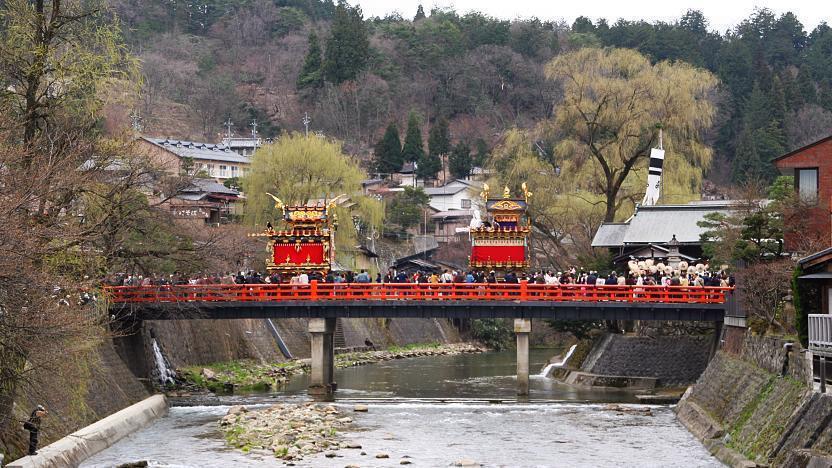
Read more: What to do in Takayama? — Top 5 see & must things to do in Takayama, Japan and Japan travel guide here .
Related articles

RELATED ARTICLES MORE FROM AUTHOR
Guide to joo chiat singapore. what to do & top things to do in joo chiat, 7 days in hawaii itinerary. how to spend hawaii itinerary 1 week for independent travelers.

Bohol blog. The ultimate guide to the island of Bohol
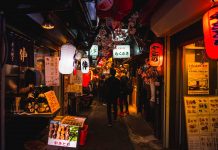
Where to go in Hsinchu? 14 famous attractions, best places to visit in Hsinchu
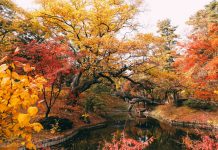
21+ best places to visit Korea in autumn
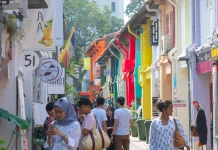
Suggested Singapore Malaysia itinerary 6 days to visit Singapore & Kuala Lumpur
Editor picks.

Guide to Joo Chiat Singapore. What to do & top things...

7 days in Hawaii itinerary. How to spend Hawaii itinerary 1...

POPULAR POSTS

What to buy in USA? — 17+ must buy in USA...

What to buy in Korea? — Top +23 cheap, famous &...

Must buy souvenir in Taiwan — Top 17+ most famous, cheap...
Popular category.
- Inspiration + Guide 1525
- Trip Inspiration 468
- Food + Drink 223
- Thailand 216
- Coasts + Islands 200
- South Korea 179
- Vietnam 172
- Travel Photos 144
- Work for Us
- Terms & Conditions
- Privacy Policy
Winter is here! Check out the winter wonderlands at these 5 amazing winter destinations in Montana
- Travel Guide
- Food Travel
Hidden Gems For Brunch In Kyoto You Can’t Miss
Published: September 2, 2024
by Griselda Cordes
Kyoto, known for its stunning temples and serene gardens, also boasts some incredible brunch spots. Whether you're craving traditional Japanese dishes or a classic Western breakfast, this city has something to offer. Imagine starting your day with a steaming bowl of miso soup, fluffy pancakes, or a perfectly brewed cup of coffee. From cozy cafes tucked away in narrow alleys to elegant restaurants with views of lush greenery, Kyoto's brunch scene is diverse and delightful. Ready to find the best places for a morning meal? Let's dive into the hidden gems for brunch in Kyoto you can't miss!
Traditional Kyoto Brunch Spots
Kyoto, a city rich in history and culture, offers some of the best traditional brunch spots. These places serve authentic Japanese cuisine that will make your taste buds dance.
Nishiki Market Nishiki Market, often called "Kyoto's Kitchen," is a bustling marketplace filled with stalls offering fresh seafood, pickles, and sweets. Try the tamagoyaki (Japanese omelet) or yuba (tofu skin) for a unique brunch experience.
Gion Tsujiri Gion Tsujiri, located in the historic Gion district, is famous for its matcha (green tea) sweets. Their matcha parfaits and soft-serve ice cream are perfect for a sweet brunch treat.
Ippodo Tea Co. Ippodo Tea Co. has been serving high-quality Japanese tea for over 300 years. Enjoy a traditional tea ceremony with wagashi (Japanese sweets) for a serene and authentic brunch.
Modern Brunch Cafes
For those who prefer a more contemporary brunch, Kyoto has plenty of modern cafes that blend Japanese and Western flavors. These spots are perfect for a relaxed and stylish brunch.
Cafe Bibliotic Hello! Cafe Bibliotic Hello! is a cozy cafe with a library-like atmosphere. Their menu includes delicious pastries, sandwiches, and coffee. The avocado toast is a must-try.
% Arabica Kyoto % Arabica Kyoto, located along the scenic Hokanji Temple, offers some of the best coffee in the city. Pair your coffee with their freshly baked croissants for a delightful brunch.
Kissa Master Kissa Master is a retro-style cafe that serves a mix of Japanese and Western dishes. Their fluffy pancakes and thick-cut toast are popular brunch choices.
Hidden Brunch Gems
Kyoto is full of hidden gems that offer unique and unforgettable brunch experiences. These lesser-known spots are worth seeking out for their charm and delicious food .
Cafe Kocsi Cafe Kocsi, tucked away in a quiet alley, is a charming cafe with a relaxed vibe. Their homemade quiche and cakes are perfect for a leisurely brunch.
Walden Woods Kyoto Walden Woods Kyoto is a minimalist cafe inspired by Henry David Thoreau's "Walden." Their menu features simple yet delicious dishes like toast with seasonal toppings and freshly brewed coffee.
Cafe Marble Cafe Marble, located in a renovated machiya (traditional wooden townhouse), offers a cozy and nostalgic atmosphere. Their curry rice and homemade desserts are perfect for a comforting brunch.
Brunch with a View
Enjoying a delicious brunch with a stunning view is a perfect way to start your day in Kyoto. These spots offer not only great food but also breathtaking scenery.
Arashiyama Benkei Arashiyama Benkei, located along the Katsura River, offers a beautiful view of the Arashiyama Bamboo Grove. Their traditional Japanese breakfast sets are a great way to experience local cuisine.
Hyotei Hyotei, a Michelin-starred restaurant, offers a serene garden view and exquisite kaiseki (multi-course) meals. Their breakfast sets are a luxurious brunch option.
Yojiya Cafe Yojiya Cafe, situated in the scenic Sagano area, offers a tranquil garden view. Their matcha pancakes and green tea lattes are perfect for a relaxing brunch.
Kyoto's Brunch Spots Await
Kyoto offers some of the best brunch spots you’ll ever find. From traditional Japanese breakfasts to modern fusion dishes, there’s something for everyone. Nishiki Market is perfect for those who love variety. Cafe Bibliotic Hello! combines books with delicious food, making it a cozy spot to relax. Lorimer Kyoto brings a taste of Brooklyn to Japan , offering hearty meals and great coffee. For a unique experience, Hyotei serves a traditional kaiseki breakfast that’s both elegant and flavorful.
Exploring these hidden gems will make your Kyoto trip unforgettable. Whether you’re a foodie or just looking for a great meal, these spots won’t disappoint. So, next time you’re in Kyoto, make sure to check out these amazing brunch places. Your taste buds will thank you!

- Privacy Overview
- Strictly Necessary Cookies
This website uses cookies so that we can provide you with the best user experience possible. Cookie information is stored in your browser and performs functions such as recognising you when you return to our website and helping our team to understand which sections of the website you find most interesting and useful.
Strictly Necessary Cookie should be enabled at all times so that we can save your preferences for cookie settings.
If you disable this cookie, we will not be able to save your preferences. This means that every time you visit this website you will need to enable or disable cookies again.
Best Ways to Get from Tokyo to Nagoya
Shinkansen (Bullet Train): The Fast Track
Highway buses: economical and comfortable, local trains: a scenic route, flights: quick but consider the extras, car rental: explore at your own pace, comprehensive travel tips, frequently asked questions.
Traveling from Tokyo to Nagoya can be an exciting part of your trip to Japan , offering you various options depending on your time availability, budget, and preferences. The Tokyo to Nagoya bullet train and Tokyo to Nagoya Shinkansen are key travel options known for their speed, convenience, and efficiency.
Here’s a detailed look at the best ways to journey between these two major cities, providing you with practical insights and tips to enhance your travel experience.
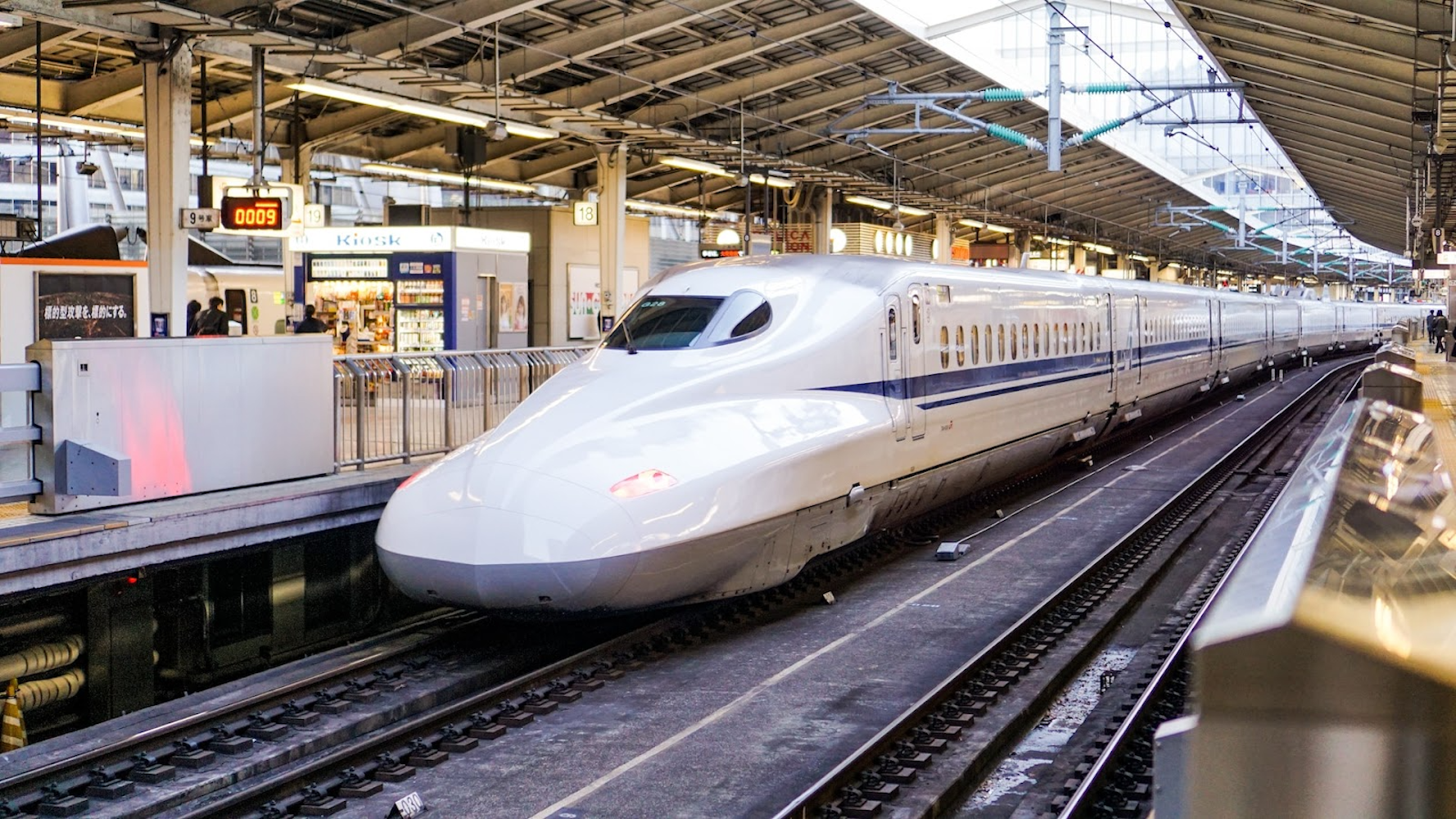
The Shinkansen, Japan’s famed bullet train, is the quickest and most convenient way to travel from Tokyo to Nagoya. This method is a favorite among travelers for its speed and efficiency.
Key Features:
Duration : Approximately 1 hour and 40 minutes.
Frequency : Trains depart every 10 minutes during peak hours.
Cost : Around 11,000 yen for a one-way ticket on the fastest Nozomi train.
Comfort : Offers spacious seating, Wi-Fi, and onboard services, including food and drinks.
Travel Tip : Booking in advance can secure you a reserved seat, which is particularly useful during busy travel seasons such as Golden Week or the New Year holiday.

Discover Japan without limits with our all-access JR Pass!
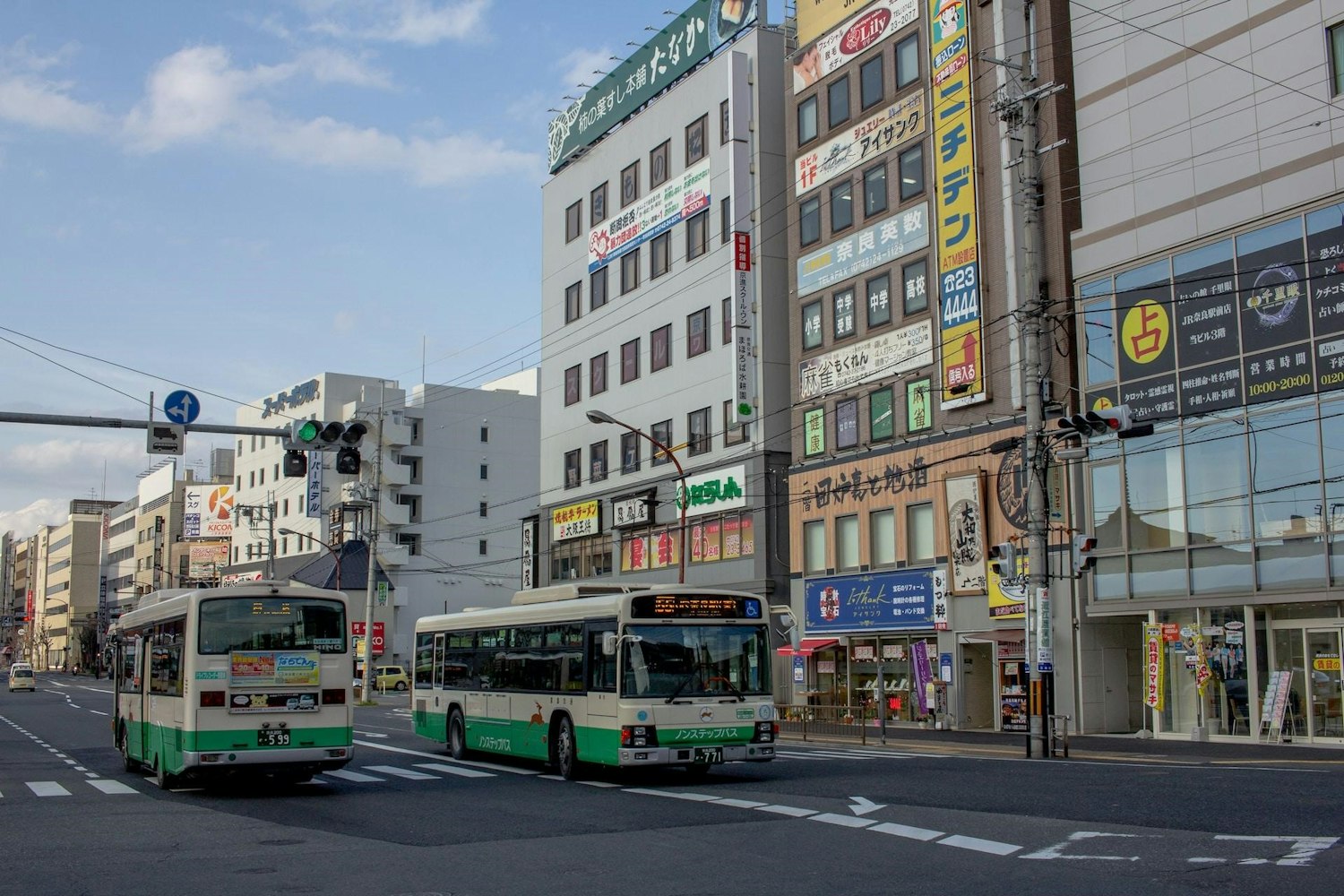
If you're not in a hurry and looking to save on travel costs, consider taking a highway bus. This is a great alternative with several benefits, particularly for budget-conscious travelers.
Duration : Takes about 5 to 6 hours.
Cost : Ranges from 3,000 to 6,000 yen, much cheaper than the bullet train.
Variety : Choices range from standard to premium buses, the latter offering more space and reclining seats.
Travel Tip : Night buses can save you a night’s accommodation, making them a smart choice if you’re trying to stretch your budget further.
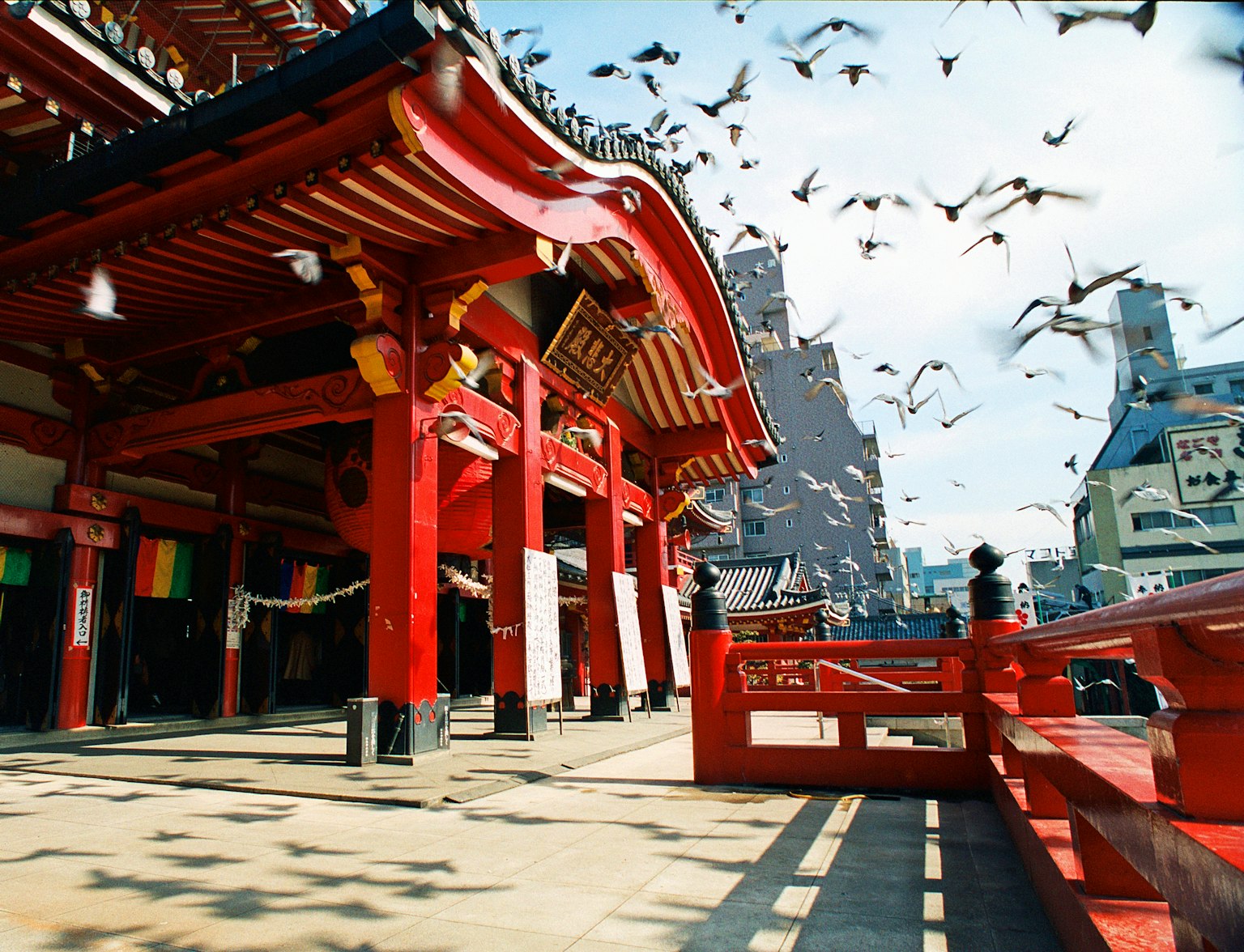
Embark on a private full-day Nagoya City Tour and experience the sights, sounds and energy of this vibrant destination!
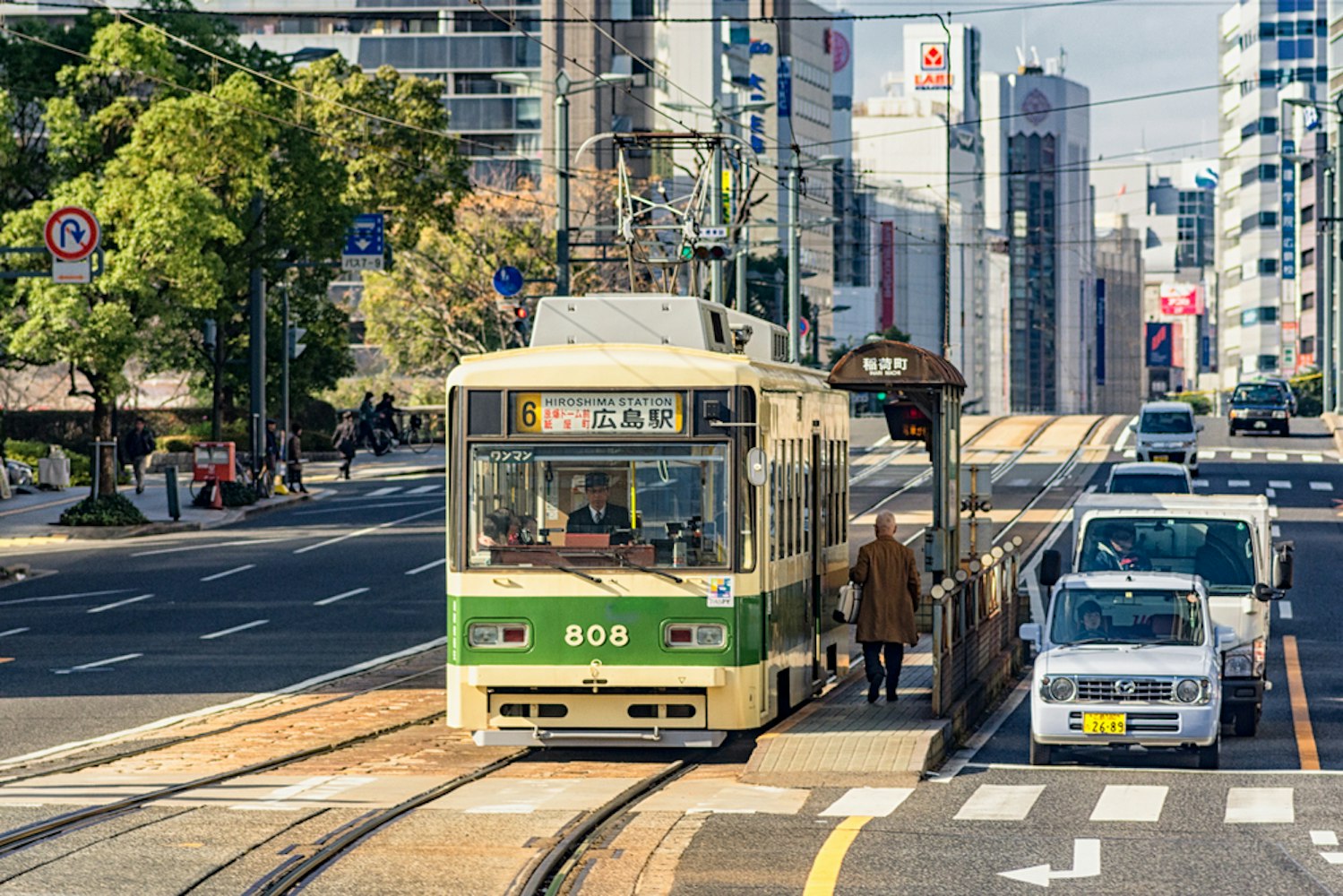
For those who prefer to see the countryside and are not pressed for time, local trains offer a scenic route through rural Japan. This is the most time-consuming option but can be a rewarding experience for the leisurely traveler.
Duration : About 6 hours with multiple transfers.
Train ticket Cost : Significantly cheaper, with fares as low as 2,000 yen.
Experience : Provides a closer look at Japan’s rural landscapes and local life.
Travel Tip : Ensure you are comfortable with the train schedules and have a clear understanding of transfer points to avoid any confusion during your journey.
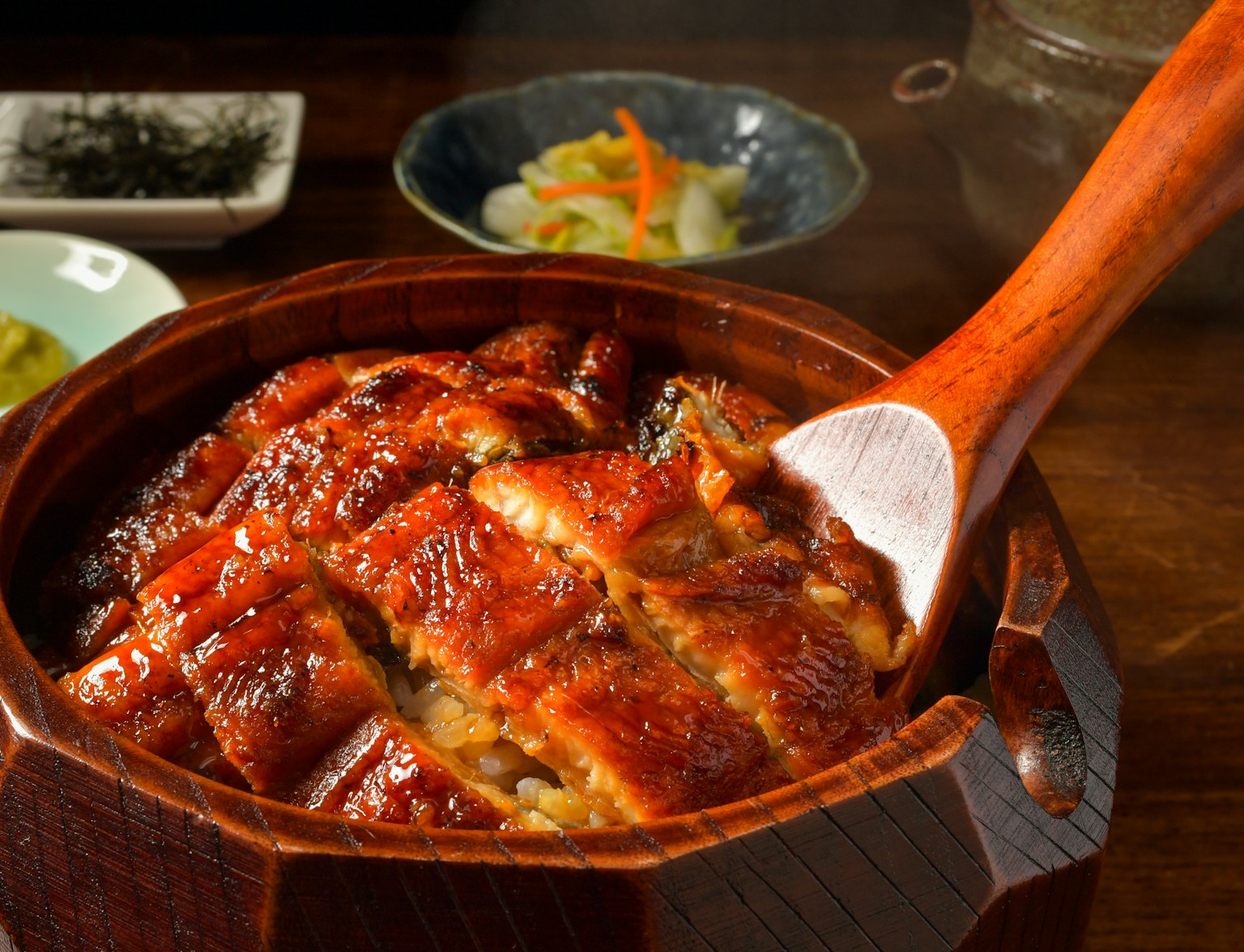
Discover Nagoya's best foods in a 3-hour guided tour, sampling local favorites in vibrant Sakae and hidden Fushimi Mall.

Flying may seem like the fastest option, but when you factor in airport transfers and waiting times, it might not save you as much time as expected.
Duration : 1 hour of flight time, but total travel time can be about the same as the Shinkansen when including transfers.
Airports : Flights depart from Narita and Haneda Airports in Tokyo and arrive at Chubu Centrair International Airport in Nagoya.
Cost : Generally higher than the Shinkansen, particularly if not booked in advance.
Travel Tip : Flights are best suited for travelers with proximity to airports or those on tight schedules that align with flight times.
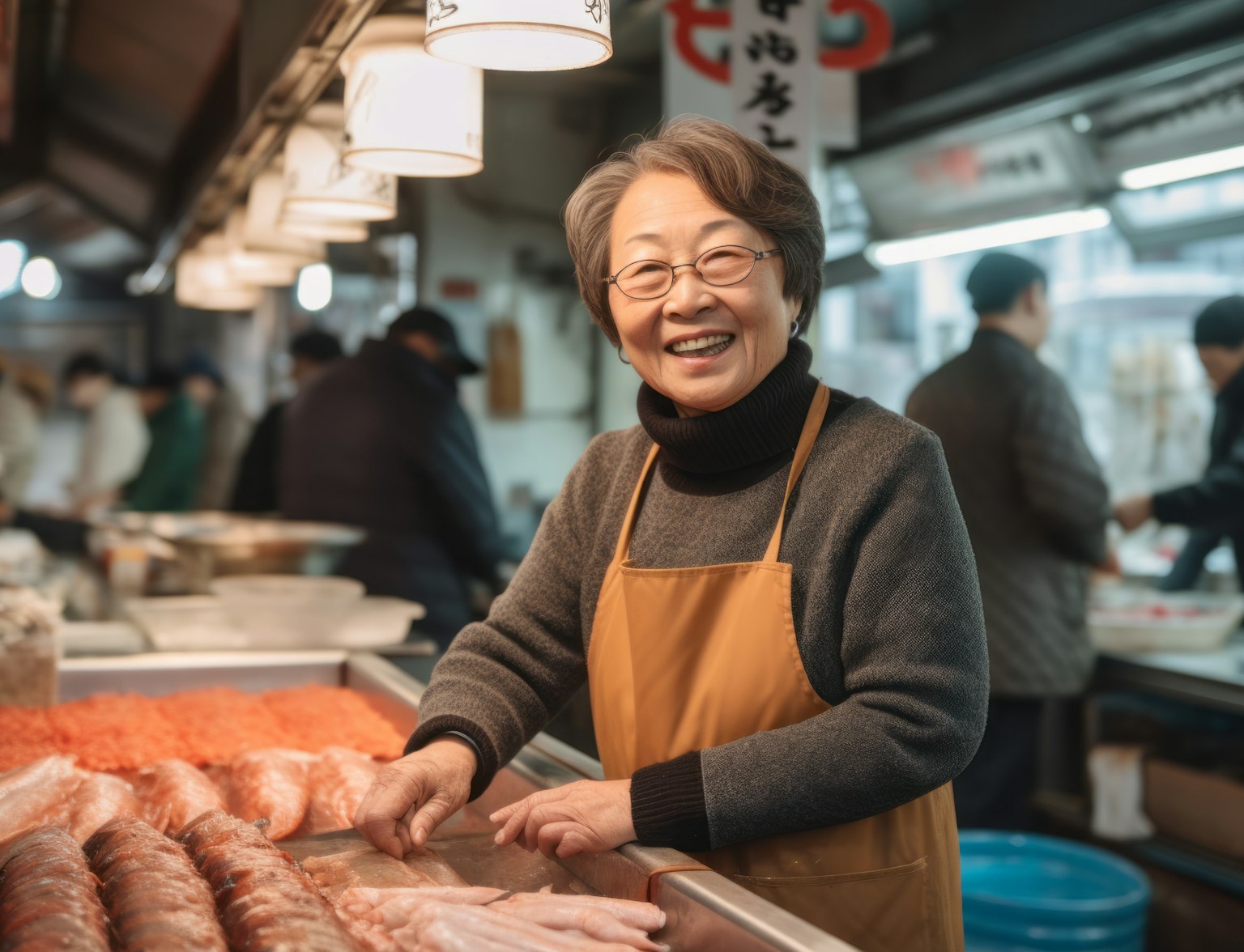
Experience a Nagoya fish market like never before with the Private Morning Yanagibashi Fish Market and Sushi Tour!
Renting a car offers flexibility to explore at your leisure, making stops and detours as you wish. This option is ideal for those interested in visiting less accessible attractions between Tokyo and Nagoya.
Duration : About 4 to 5 hours, depending on traffic.
Cost : Starts from 6,000 yen per day, plus tolls and fuel.
Flexibility : Allows for a personalized travel itinerary, visiting places off the typical tourist path.
Travel Tip : Familiarize yourself with Japanese road rules , and consider renting a GPS unit to navigate the routes efficiently.
Advance Bookings : Secure tickets or rental bookings ahead of time to avoid higher costs or sold-out situations. Tokyo Station is a key departure point for travelers heading to Nagoya, offering convenient and direct connections.
Luggage Solutions : Utilize luggage forwarding services to travel hands-free and enjoy your journey without the burden of heavy bags.
Off-Peak Advantages : Traveling during off-peak times can be quieter and sometimes cheaper, providing a more relaxed journey.
Local Advice : Engaging with local residents can offer insights into hidden gems and the best local dining spots.
Final Thoughts on Your Travel Choices
Deciding how to navigate the route from Tokyo to Nagoya involves weighing factors like time, cost, and the overall journey experience. The Nagoya bullet train and Nagoya trains are efficient travel options, offering speed, convenience, and frequent departures.
Whether you opt for the efficiency of the bullet train, the savings of a bus, the views from a train seat, the speed of a plane, or the freedom of a car rental, each mode of transport serves different travel needs and preferences. Make your choice based on what matters most to you for a seamless and enjoyable trip.
How much is a bullet train from Tokyo to Nagoya?
The cost of a bullet train (Shinkansen) ticket from Tokyo to Nagoya varies depending on the type of train and whether you choose a reserved or non-reserved seat. For the fastest Nozomi train, a one-way ticket typically costs around 11,000 yen. The slightly slower Hikari and Kodama trains might offer cheaper fares, particularly for non-reserved seats.
How long is the train from Nagoya to Tokyo?
The travel time by Shinkansen from Nagoya to Tokyo ranges from about 1 hour and 40 minutes to 2 hours and 20 minutes, depending on whether you take the Nozomi, Hikari, or Kodama services. The Nozomi is the fastest option, minimizing travel time.
Is Nagoya closer to Tokyo or Osaka?
Geographically, Nagoya is closer to Osaka than to Tokyo. The distance from Nagoya to Osaka is approximately 125 kilometers (about 77 miles), making it a shorter trip compared to the roughly 341 kilometers (about 212 miles) between Nagoya and Tokyo.
Can I use a JR Pass from Tokyo to Nagoya?
Yes, you can use the Japan Rail Pass (JR Pass) to travel from Tokyo to Nagoya using the Hikari and Kodama Shinkansen services. However, it's important to note that the JR Pass does not cover the Nozomi trains, which are the fastest services on this route.
How much is the ticket from Nagoya to Tokyo?
The cost of a ticket from Nagoya to Tokyo on the Shinkansen is about the same as the reverse journey, ranging from around 10,000 to 11,000 yen for a reserved seat on the Hikari or Kodama trains. The Nozomi, which the JR Pass does not cover, would cost slightly more due to its reduced travel time.
Continue reading

More From Forbes
Gourmet gifts for the foodie in your life.
- Share to Facebook
- Share to Twitter
- Share to Linkedin
TOKYO, JAPAN - JUNE 29: A box of chocolates contains a piece decorated with a URL written in ... [+] two-dimensional code on June 29, 2006 in Tokyo, Japan. The chocolate is co-developed by Mary Chocolate Co., Ltd and Nippon Comsys Corporation. Two-dimentional code is widely used in Japan by mobile phone users for reading the URL to access websites. Customers can have their own two-dimensional code or messages written on chocolate for gift-purposes, available at the price of 25,000 yen (US$220) for making the plate and 1050 yen (US$9) for a box of 12 pieces, with a minimum of 500 boxes for an order. (Photo by Junko Kimura/Getty Images)
Gifts are a wonderful way to express love and appreciation for the special people in your life, whether it's for a birthday, anniversary, special occasion or just because. However, finding the perfect gift can be stressful, especially if selecting gifts isn't your forte.
Anyone can give a great gift; all it takes is a bit of “surveillance and active listening,” John Ruhlin , gifting expert, speaker and author of Giftology : The Art and Science of Using Gifts to Cut Through the Noise, Increase Referrals, and Strengthen Retention writes in an email. He states that if you’re really paying attention, the perfect gift will be easy to spot.
“All year, all month, you should be surveying and actively listening in conversation and find out the things that they want, are struggling with or make them happy,” he continues. “Pay attention to the subtle hints they may drop. The gift should show that you see, hear and appreciate them.”
For a foodie, a great gift can take on many forms. Are they just beginning their home cooking journey, and in need of a great set of knives? Is she already a professional chef who could use a handy, time-saving kitchen gadget? Is he particularly fond of flavored salts or unique dinnerware? Do they nerd out on French wines?
If you know your friend or partner well, you'll have a good sense of their individual tastes. To inspire you, here are some gourmet kitchen and food items that are sure to make your food-loving friend feel cherished.
Apple Phone 16, iPhone 16 Pro Release Date Schedule: Your Complete Countdown
Ukraine strikes power plant near moscow to end war and putin’s rule, best labor day clothing sales: score up to 70% off denim, outerwear and more, the best gifts for the food-obsessed friend, 1. flamingo estate mount taranaki pure manuka honey.
Manuka honey from Mount Taranaki, a stratovolcano in New Zealand.
One of only 500 jars available and harvested from the remote stratovolcano Mount Taranaki in New Zealand, cultivating this honey was no easy feat. The team at Flamingo Estate helicoptered their hives onto the native bush lands and valleys at the base of the mountain, let the bees do their thing and then helicoptered the bees back out. Essentially, these bees have flown private. The fancy process results in a beautiful, raw honey solely from the Manuka nectar, with a whopping 829 mg/kg of MGO (a.k.a. methylglyoxal. This is a quality indicator; higher MGO levels generally suggest higher antibacterial potency). It has a crunchy and crystallized texture, deep amber color and earthy flavor profile.
Price at the time of publish: $98
Get it here .
2. Fable Serving Ceramics Set
The serving set includes little bowls, an oval serving tray and nested larger bowls.
Dinner party hosts can always use a new set of beautiful serveware, like this beautiful ceramic serving set from Fable. A sustainable brand with transparent pricing, Fable creates timeless pieces made from recycled clay with eco-friendly packaging. Crafted in Portugal, this set includes nested serving bowls, an oval serving platter and little bowls that are dishwasher, microwave and oven safe up to 450ºF.
Price at the time of publish: $183
3. Roundhouse Provisions Gut Strike
Each bottle contains 30 billion CFUs and 15 potent probiotic strains.
Eating lots of rich and indulgent foods and spirits can wreak havoc on your gut health, but a proper gut microbiome is important for even the simplest of eaters. Gut Strike is a blend of 15 probiotics strains with 30 billion CFUs designed to help combat gas, bloating and digestive issues. B. Lactis, for example, has been shown to help with gastrointestinal health and immune support. Plus, this probiotic doesn’t require any refrigeration.
Price at the time of publish: $59.95
4. Fazeek Wave Coupe Glasses
The wave coupe glasses are made from mouth-blown borosilicate glass.
This set of two beautiful, handmade coupe glasses feature an artistic design that’s playful yet sophisticated. Made from mouth-blown borosilicate glass, this drinkware features an elongated stem and signature rippled edges along the wider bowl, perfect for serving cocktails or even desserts. They are also available in pink, green, amber or clear to suit your friend’s personal style.
Price at the time of publish: $109
5. Giesen Non-Alcoholic Rosé
A light-bodied rosé with stone fruit aromas and notes of apple and cranberry flavors.
Whether your foodie friend is sober, pregnant or simply taking a break from alcohol but still craves the delicious flavor of wine, the award-winning Giesen non-alcoholic rosé is an excellent choice. All of their wines contain no more than 0.5% alcohol by volume, with only 19 calories per 5 oz serving (so they’re ideal for those on a weight loss journal, as well!). This dealcoholized New Zealand rosé features notes of apple and stone fruit, with a refreshing texture that’s drinkable and easygoing.
Price at the time of publish: $22.24
6. Thoughtful Cooking: Recipes Rooted In The New South Cookbook
The book cover of Thoughtful Cooking: Recipes In The New South.
Thoughtful Cooking is a seasonally-driven cookbook with influences from southern cooking, the Appalachian region and elevated New American styles. Author William Dissen, a renowned chef and culinary diplomat, restaurateur, published author and early pioneer of the farm-to-table and ocean sustainability movements, draws on his experience as the founder of 4 award-winning restaurant concepts. The book includes 17 spring recipes, 20 summer recipes, 25 fall recipes, 24 winter recipes and multiple foundation recipes.
Price at the time of publish: $24.80
7. Firstleaf Watercolor Wine Bundle
Three bottles from Firstleaf's Watercolor Wine Bundle.
This three pack is for the wine-o interested in modern trends in winemaking. The bundle includes Gold Ghost Orange, an orange wine crafted from Albarino grapes, which features aromas of white rose, honeysuckle, papaya and a honeyed beeswax. The second bottle, Crecio Cava Brut, is a bright sparkling wine crafted using ancestral methods. Lastly, the Corsage Rosé was produced from the US variety of Moscato, the Muscat Canelli, which has notes of honey, lychee and candied peach. Plus, at under $60, it’s a great value for the quality.
Price at the time of publish: $54.95
8.Savory Spice Round The World Spice Collection
These 8 spice blends are for adventurous eaters who want to cook more global dishes.
Whether they’re already well-versed in global cuisines or looking to expand their palettes, spice blends can help take the guesswork out of properly flavoring a dish. This set from Savory Spice includes 8 blends—including Za’atar (excellent for focaccia, potatoes or in shakshuka), Chinese Five Spice, Tan-Tan Moroccan (a must for Moroccan chicken, fish or for a flavorful rice dish) and Cuban Island Spice. They come in medium-sized glass jars that are sturdy and look excellent on a kitchen counter.
Price at the time of publish: $58.99
9. W&P Clean Kitchen Storage Set
Storage sets come in 8, 13, and 20-piece options.
Dishwasher and microwave safe, this kitchen storage set made from premium borosilicate glass and silicone. It’s a perfect gift for the home cook, private chef or those eager to make their storage more sustainable. It comes in 8, 13 and 20-piece sets—including seal tight glass bowls, reusable bags and stand-up bags of various sizes, as well as stretch lids and wraps that can fit over a variety of containers, cans and jars. Plus, they offer multiple beautiful colorways like sage, oat, mint and blush.
Price at the time of publish: $245
10. Tokyo Treat Subscription Snack Box
Each box contains a variety of seasonal and Japan-limited treats.
Bring the flavors of Japan to your friend’s doorstep with these bountiful Japanese snack boxes from female-founded Tokyo Treat. Depending on the subscription plan you choose (3, 6 or 12 months) your loved one can experience a range of seasonal and Japanese-limited flavors, drinks, snacks, candies, cookies and other treats in themed boxes. Plus, it comes with a 20 page cultural guide with allergen info.
Price starts at: $106.50 plus shipping for 3 months/boxes.
11. Kahawa 1893 Coffee Shark Tank Sampler
These four blends include: Serengeti, Safari, Ethiopian and Kenyan.
Kahawa 1893 creates high quality, delicious and distinctive coffees for the coffee connoisseur. The beans are grown and harvested in Kenya, then roasted fresh in California by a third-generation female Kenyan coffee farmer. Available in whole beans, ground and single-serve coffee packs that steep within five minutes, this Black-owned and operated business also supports Kenyan female coffee farmers through its online "customer tipping" program—which Kahawa 1893 matches to double the impact. The Shark Tank sampler includes four blends: Serengeti, Safari, Ethiopian and Kenyan in the whole bean variety.
12. Katie Kime Romanesque Ice Bucket
The Romanesque Ice bucket comes in silver, lucite and gold accents.
Ice buckets are one of those household items you’re always glad to have, especially when you’ve got to quick-chill a white wine! This quirky yet stylish, 3-quart double insulated ice bucket is the perfect luxury gift for the friend who loves to host dinner parties and wine nights. Though available in tons of colors, prints and styles, this Romanesque print will transport your friend right to the Mediterranean with its beautiful laurel branches and Roman busts in bright, poppy colors.
Price at the time of publish: $118
13. Evermill In-Drawer Spice Rack
The tiered in-drawer rack saves counter space while making organization easy.
Organization is everything for home cooks, and there’s nothing more annoying that sifting through dozens of spices in your cabinet looking for the right one, or leaving a bunch on your countertop taking up precious real estate. Enter: the luxe in-drawer spice rack. Featuring angled wells for clear label visibility and a modular design to fit in any style drawer, it comes with 100% organic spices included, plus two shaker lids.
Price at the time of publish: $269
14. Balmuda The Toaster
Sleek and refined with a retro-inspired silhouette.
This toaster does so much more than just brown some bread. With an innovative approach, this gadget uses 5 cc's of water poured into the top of the unit to gently steam and toast your bread. The result is a perfectly crisp outer with a moist, soft and fluffy interior. It also comes with 5 modes and temperature adjustments: sandwich bread, artisan bread, pizza, pastry and general oven modes, with 3 heat settings to make dishes like you would in a conventional oven. Plus, the design is striking, cool and elevated.
Price at the time of publish: $299
15. Ventura Spirits Angeleno Spritz 6 Pack
The Angeleno Spritz is an Aperol Spritz-inspired, ready to drink canned cocktail.
Inspired by the classic European aperitivo Aperol Spritz, Ventura Spirits’ Angeleno Spritz is a lighter alternative with a Southern California-inspired flair. It features the brand’s citrus Amaro Angeleno bitter liqueur as its base, with the addition of soda water and grapefruit for a sparkling ready-to-drink canned cocktail that’s convenient and refreshing for pool and beach days. Note that shipping is only offered in CA.
Price at the time of publish: $20

- Editorial Standards
- Reprints & Permissions
Join The Conversation
One Community. Many Voices. Create a free account to share your thoughts.
Forbes Community Guidelines
Our community is about connecting people through open and thoughtful conversations. We want our readers to share their views and exchange ideas and facts in a safe space.
In order to do so, please follow the posting rules in our site's Terms of Service. We've summarized some of those key rules below. Simply put, keep it civil.
Your post will be rejected if we notice that it seems to contain:
- False or intentionally out-of-context or misleading information
- Insults, profanity, incoherent, obscene or inflammatory language or threats of any kind
- Attacks on the identity of other commenters or the article's author
- Content that otherwise violates our site's terms.
User accounts will be blocked if we notice or believe that users are engaged in:
- Continuous attempts to re-post comments that have been previously moderated/rejected
- Racist, sexist, homophobic or other discriminatory comments
- Attempts or tactics that put the site security at risk
- Actions that otherwise violate our site's terms.
So, how can you be a power user?
- Stay on topic and share your insights
- Feel free to be clear and thoughtful to get your point across
- ‘Like’ or ‘Dislike’ to show your point of view.
- Protect your community.
- Use the report tool to alert us when someone breaks the rules.
Thanks for reading our community guidelines. Please read the full list of posting rules found in our site's Terms of Service.
STARS AND STRIPES
- Middle East
- Asia-Pacific
- Map Of Memorials
- Entertainment
- - Video Games
- Europe Travel
- - Quick Trips
- - After Hours
- Pacific Travel
- The Meat and Potatoes of Life
- U.S. Travel
- Storm Tracker
- Rewards for readers
- Get Stripes
- Stripes Lite
- Archives/Library
- Special Publications
- Mobile Apps
- Email Newsletters
- Digital Access
- Home Delivery
- Marine Corps
- Coast Guard
- Space Force
- Archive Photo Of The Day
- - Military Matters
- - Force For Hire
- Out of Uniform
- Communities
- Stripes Europe
- Stripes Guam
- Stripes Japan
- Stripes Korea
- Stripes Okinawa
- Our Other Websites
- In Memoriam
- Month of the Military Child
- Best of Germany
- Best of the Pacific
- Letters to Santa
Community News
Okinawa’s first costco opens in nanjo city.
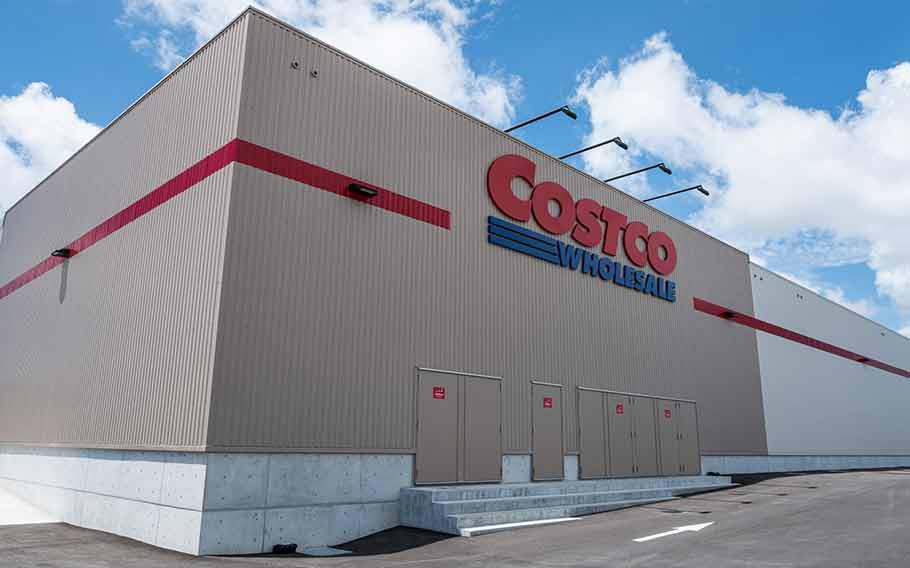
The wait is over. Costco opened Aug. 24 in Okinawa’s Nanjo City.
The membership-based warehouse retailer from the U.S. is only about a 45-minute drive from Camp Foster. This is the 35th store to open in Japan and the first on Okinawa.
Shoppers can expect a variety of Japanese grocery items like bulk miso soup, cases of green tea and more, as well as a selection of American products the warehouse is known for.
The snack bar, another Costco fan-favorite, known for inexpensive pizza slices, hot dog combos and more, will also be open for hungry shoppers.
The location in Nanjo City is surrounded by lush green and relatively close to the southern coast of the island, so a shopping trip will allow you to see the beautiful city and purchase in bulk.
Overseas members are allowed to use their current membership at all locations in Japan. You can get more information at the customer service counter at the store.
As this is the first Costco in Okinawa, plan ahead for crowds and get ready for a taste of home.
Costco Okinawa Nanjo Warehouse
GPS Coordinates: 26.155595, 127.787197
Hours: 10 a.m. – 8 p.m. Open daily except Jan. 1
The best stories from the Pacific, in your inbox
Sign up for our weekly newsletter of articles from Japan, Korea, Guam, and Okinawa with travel tips, restaurant reviews, recipes, community and event news, and more.
Sign Up Now
Sale now on
Book by 1 October | T&Cs apply
Flights to Tokyo
On the surface, Tokyo might seem like any big metropolis. It’s towering skyscrapers, bright lights and late-night lifestyle wouldn’t seem out of place in New York or London. But look a little closer, and Tokyo’s unique identity becomes clear. Holding tightly to tradition while championing the ultra-modern is this city’s forte. Here you can watch the ancient sport of sumo wrestling before hopping on a high-speed bullet train to visit Mount Fuji.
Our cheapest flights to Tokyo
Discover japan’s quirky capital.
Fly to Tokyo with British Airways to experience the old and new in one trip.
The Shibuya Crossing is a great place to start your adventure. Join hundreds of commuters, shoppers and revellers making their way across the busiest pedestrian crossing in the world.
Then escape the chaos by visiting one of the city’s many temples and shrines. They offer a window back in time to Tokyo before the cat cafes, eccentric Harajuku fashion and eclectic line-up of museums. So does the Kabuki Theater, where performers wear elaborate make-up and costumes that date back to the 1600s. Book your holiday to Tokyo now.
Flight time
13 hours 50 mins
Tokyo flight FAQs
A flight to Tokyo takes approximately 13 hours and 50 minutes from London.
Tokyo is a popular holiday destination in the spring when the cherry blossoms bloom. It also attracts visitors in the autumn when the city has traded the greens of summer for reds, oranges and yellows, and the temperature isn’t too hot. Search for flights outside of these periods to save, and use our low fare finder to find the best prices.
Big cities offer lots of choice for visitors, so you can adapt your trip to cost as much or as little as you’d like. Budget eats are on the cards thanks to cheap street food and chain restaurants with set menus. Supermarkets are a great place to pick up an edible bargain too. You can also save money on your accommodation costs while enjoying an authentic Tokyo experience by staying in one of the city’s capsule hotels.
Haneda Interational Airport is the airport closest to Tokyo’s city centre, and there are several transport options to get you to your hotel. A taxi takes around 30 minutes and buses can take a little longer, while the monorail or Keikyu train takes about 15.
Tokyo has to be seen to be believed. Divided into 14 different districts, there’s a corner for every visitor. Head to Akihabara for sensory overload – giant anime characters plastered across billboards, the pings and whizzes of arcade games, and manga cafes. For a peaceful afternoon in nature, the Imperial Palace has several gardens and a Buddhist temple to explore. Hungry for Tokyo’s best sushi? Work your way around the restaurants in Tsukiji to find your favourite.
Tokyo has a varied climate, with warm springs and hot, humid summers. Temperatures in the summer months can reach up to 40°C, particularly during the rainy seasons in September and June. January is the coldest month of the year, with average temperatures of around 2 - 10°C.
You can book a hand baggage-only ticket or make the most of our generous baggage allowance. If you choose economy standard or one of our British Airways Holidays’ packages, each passenger can check in a bag weighing up to 23kg – in addition to a handbag, laptop case or other small bag. Families travelling in any cabin with younger children can also check in one car seat and one fully collapsible pushchair. Read more about baggage allowances for children .
If you’re flying in our business cabin, you can check in two bags weighing up to 32kg each. Read our baggage guide for full details.
If you’re travelling on a British citizen passport to Japan for 90 days or less you will get a visa in your passport on arrival, and you do not need to apply before you travel. If you’re from a country outside the EU, you may need to apply for a visa in advance of your trip. You can find out more information, check your visa requirements and apply by visiting the IATA Travel Centre .
Discover outstanding service from the moment you book. Fly with just hand baggage and you can carry two bags in the cabin free of charge. Choose our checked baggage option and you can travel with hand baggage and two 23kg bags checked into the hold, plus enjoy free seat selection 24 hours before you fly. On board you’ll find HEPA-filtered air, quality on-board catering, and a warm, uniquely British welcome.
Simply relax and let us take care of you, every step of the way.
All our cabins offer an excellent – and uniquely British – experience. Choose your perfect way to fly, from economy to First.
Our World Traveller cabin offers all the touches you need to enjoy your flight at an affordable price.
Premium economy
Discover our World Traveller Plus cabin and treat yourself to a wider seat and more legroom in a separate, quieter cabin.
Work or relax in our Club World cabin and enjoy lounge access, a dedicated check-in area and fully flat beds for a restful sleep.
Choose First to enjoy a range of comforts, from fine dining to your own private suite and access to our elegant departure lounges.
You might also be interested in...
Australia flights, bangalore flights, bangkok flights, beijing flights, hong kong flights, shanghai flights, singapore flights, sydney flights, terms and conditions.
- Flight only prices are updated every 24 hours and are accurate when published. Flights at these prices are limited and may sell out quickly.
- Package holiday prices (flight + hotel or flight + car) prices are updated every 24 to 48 hours and are accurate when published and may vary upon reaching subsequent pages. Availability may be extremely limited particularly during peak periods.
- Return fares displayed are the lowest adult return prices in the cabin specified including taxes, fees and carrier charges, based on a 7-day return journey.
- Each–way fares displayed are the lowest adult each-way prices in the cabin specified based on the lowest adult return prices for a 7 day travel period, including all taxes, fees and carrier charges available in this period.
- One-way fares displayed are the lowest adult prices in the cabin specified including taxes, fees and carrier charges available in this period.
- Package holiday prices (flight + hotel and flight + car) shown are in GBP per person based on 2 adults sharing one room or one car and prices include taxes, fees and carrier charges unless otherwise specified. Flight + car prices based on drivers aged 30-70 years.
- Additional charges will be applied for payments made using a corporate credit card.
- Advertised fares are available on ba.com. Additional charges may apply if purchased through British Airways outlets or travel agents.
- Combine and save on Holidays: Guaranteed savings are only available when booking a Flight + Hotel or Flight + Car booking including one land product, it does not apply to a ‘Customise your trip’ holiday including more than one hotel and / or car.
- Package holidays are protected under British Airways Holidays Ltd by the Civil Aviation Authority. Our ATOL number is 5985.
- Standard British Airways terms and conditions apply
We use cookies on this site to enhance your user experience. If you continue to browse you accept the use of cookies on our site. See our Cookie Policy for more information.
- Media & Industry
- Meetings & Events
- Select Language 简体中文 繁體中文(香港) 繁體中文(臺灣) India (English) Bahasa Indonesia 한국어 ภาษาไทย Tiếng Việt Singapore (English) Philippines (English) Malaysia (English) Australia/New Zealand (English) Français Deutsch Italiano Español United Kingdom (English) Nordic countries(English) Canada (English) Canada (Français) United States (English) Mexico (español) Português العربية Japan(日本語) Global (English)
- India (English)
- Bahasa Indonesia
- Singapore (English)
- Philippines (English)
- Malaysia (English)
- Australia/New Zealand (English)
- United Kingdom (English)
- Nordic countries(English)
- Canada (English)
- Canada (Français)
- United States (English)
- Mexico (español)
- Global (English)
- Fujiyoshida
- Shimonoseki
- Ishigaki Island
- Miyako Island
- Kerama Island
- Tokyo Island
- Koka & Shigaraki
- Hida Takayama
- Ginza, Nihonbashi
- Beppu & Yufuin (Onsen)
- Ginzan Onsen
- Nagasaki Islands

- Kumano Kodo
- Shikoku Karst
- Amami Oshima
- Hachimantai
- Omihachiman
- Aizuwakamatsu

- Diving in Japan
- Skiing in Japan
- Seasonal Flowers in Japan
- Sustainable Outdoors
- Off the Beaten Track in Japan
- Scenic Spots
- World Heritage
- Home Stays & Farm Stays

- Japanese Gardens
- Japanese Crafts
- Temple Stays
- Heritage Stays
- Festivals and Events
- Theater in Japan
- Japanese Tea Ceremony
- Cultural Experiences in Japan
- Culture in Japan

- Local Cuisine Eastern Japan
- Local Cuisine Western Japan
- Local Street Food
- Japan's Local Ekiben
- Japanese Whisky
- Vegetarian and Vegan Guide
- Sushi in Japan Guide
- Japanese Sake Breweries

- Art Museums
- Architecture
- Performing Arts
- Art Festivals
- Japanese Anime and Comics
- Japanese Ceramics
- Local Crafts

- Scenic Night Views
- Natural Wonders
- Theme Parks
- Samurai & Ninja
- Iconic Architecture

- Wellness Travel in Japan
- Japanese Ryokan Guide
- A Guide to Stargazing in Japan
- Relaxation in Japan
- Forest Bathing (Shinrin-yoku)

- Experiences in Japan
- Enjoy my Japan
- National Parks
- Japan's Local Treasures
- Japan Heritage
- Snow Like No Other
- Wonder Around Japan

- Visa Information
- Getting to Japan
- Airport Access
- COVID-19: Practical Information for Traveling to Japan
- Anime Tourism
- Countryside Stays
- Accessible Tourism
- Hokkaido Great Outdoors
- Scenic World Heritage in Tohoku
- Shikoku’s Nature and Traditions
- Southern Kyushu by Rail

- Traveling by Rail
- How to Travel by Train and Bus
- JR Rail Passes
- Scenic Railways
- Renting a Car
- Sustainable Travel in Japan
- Travel Brochures
- Useful Apps
- Online Reservation Sites
- Eco-friendly Accommodation
- Luxury Accommodations
- Traveling With a Disability
- Hands-free Travel
- How to Book a Certified Tour Guide
- Volunteer Guides
- Tourist Information Center

- Japanese Manners
- Spring in Japan
- Summer in Japan
- Autumn in Japan
- Winter in Japan
- Cherry Blossom Forecast
- Autumn Leaves Forecast

- Japan Visitor Hotline
- Travel Insurance in Japan
- Japan Safe Travel Information
- Accessibility in Japan
- Vegetarian Guide
- Muslim Travelers
- Safety Tips

- JAPAN Monthly Web Magazine
- Arts & Cultures
- Nature & Outdoor
- Festivals & Events
- Insider Blog
- Things to do
- Local Guides
- Food & drink
- Traditional
- Hokuriku Shinetsu

My Favorites
${v.desc | trunc(25)}
Planning a Trip to Japan?
Share your travel photos with us by hashtagging your images with #visitjapanjp

Expo 2025 Osaka – wieso sich ein Besuch im nächsten Jahr lohnt von Annika Belisle
Annika Belisle arbeitet seit 2022 im Team des Deutschen Pavillons für die Expo 2025 Osaka . Ihr Arbeitgeber Koelnmesse verantwortet im Auftrag des Bundesministeriums für Wirtschaft und Klimaschutz (BMWK) die deutsche Beteiligung an der Weltausstellung in Japan. Annika war vor Kurzem zum ersten Mal in Japan und fasziniert von dem Mix aus Tradition und Moderne. Heute erzählt sie von der anstehenden Expo und berichtet, wieso sich ein Besuch im Deutschen Pavillon auf jeden Fall lohnt.

Was ist die Expo 2025 Osaka?
Die Expo, also die Weltausstellung, findet üblicherweise alle fünf Jahre statt; zuletzt pandemiebedingt leicht verschoben von Oktober 2021 bis März 2022. Die letzte Expo in Dubai war mein erstes Mal auf einer Weltausstellung – und hat mich umgehauen. Morgens im Länderpavillon von Pakistan eine spannende Ausstellung erleben, danach im Restaurant von Spanien lokale Speisen genießen, anschließend das Gebäude von Australien bewundern und abends noch eine der vielen Shows auf den großen Expo-Bühnen erleben. Auf dem Weg von A nach B Menschen in unterschiedlichsten Sprachen miteinander erzählen hören und in der Warteschlange vor dem ein oder anderen Pavillon in Kontakt mit Besucherinnen und Besuchern aus Ländern kommen, die spätestens nach diesem netten Austausch auf meiner Bucket List stehen. So oder so ähnlich kann man sich den Besuch einer Expo vorstellen. Es ist wirklich einzigartig.
Eine solche einzigartige Erfahrung möchte auch die Expo 2025 in Osaka den Gästen bieten. Unter dem Motto "Designing Future Society for Our Lives" werden hier nach aktuellem Stand rund 160 Nationen eigene Ausstellungen zeigen, entweder in selbstgebauten Gebäuden oder in Ausstellungsräumen der Expo. Stattfinden wird die Veranstaltung vom 13. April bis zum 13. Oktober auf der Insel Yumeshima, die der Stadt Osaka vorgelagert ist. Das Expo-Gelände wird von einer kreisförmigen Struktur umgeben, die Meer und Himmel miteinander verbinden soll. Innerhalb dieses Rings sind die einzelnen Pavillons dezentral platziert und symbolisieren die Idee der „Einheit in Vielfalt“. Noch wird an der Holzkonstruktion und den Pavillons fleißig gebaut. Einen Blick auf den aktuellen Stand der Bauarbeiten stellt die Expo online live zur Verfügung.
Alle Informationen zur Anreise werden bald auf der Website der Expo zur Verfügung gestellt. Der Ticketverkauf hat schon gestartet. Wer seinen Besuch auf der Expo mit der Erkundung der Stadt Osaka verbinden möchte, schaut am besten hier mal rein.

Ein Plakat der Expo © Expo 2025 Osaka, Kansai, Japan
Übrigens: Die Expo fand schon einmal in Osaka statt. 1970 nahmen mehr als 64 Millionen Menschen an der Weltausstellung teil. Wer Lust hat, kann sich das damalige Expo-Gelände auch heute noch ansehen.
Wie beteiligt sich Deutschland an der Weltausstellung?
Deutschland hat eine lange Expo-Tradition: Von Preußen bis zur Bundesrepublik, Deutschland ist regelmäßig bei Weltausstellungen dabei. Als 1928 das „Bureau International des Expositions“ (BIE), die Dachorganisation aller Expos, gegründet wurde, war Deutschland eines der 33 Gründungsländer.
Seitdem präsentiert Deutschland nicht nur tolle Ausstellungen, sondern auch spannende Architektur – ein Pavillon aus einem Guss, wie man so schön sagt, bei dem das Thema der Ausstellung auch in der Architektur widergespiegelt wird. An dieser Stelle möchte ich mit einem weitverbreiteten Missverständnis aufräumen, das zugegebenermaßen vor allem durch den Begriff „Pavillon“ gefördert wird: Eine Expo ist keine Messe, und die Länder nehmen nicht in Form von Messeständen daran teil. Stattdessen meint das Wort „Pavillon“ auf einer Expo ein eigenes Gebäude; gebaut für die Weltausstellung und anschließend einem neuen Zweck zugeführt oder temporär errichtet für die Laufzeit der Expo und danach wieder in den Materialkreislauf zurückgeführt, wie es beim Deutschen Pavillon der Fall ist.

Der Deutsche Pavillon © Deutscher Expo-Pavillon / MIR LAVA facts+fiction
Bei der Expo in Osaka dreht sich im Deutschen Pavillon, im besten Sinne des Wortes, alles im Kreis. Wir konzentrieren uns mit unserer Beteiligung auf die Kreislaufwirtschaft und setzen dabei auf innovative Ansätze für mehr Nachhaltigkeit. Dabei ist das Gebäude nicht nur kreisförmig, sondern auch als Vorreiter für zirkuläres Bauen und Wegweiser für das Leben in einer zirkulären Gesellschaft der Zukunft gedacht. Die Ausstellung greift das Thema auf und präsentiert zirkuläre Projekte aus Deutschland. Auch der Name ist Programm: Im Titel des Pavillons „Wa! Germany“ stecken gleich mehrere Bedeutungen für das japanische Wort „Wa“: Es steht für „Harmonie“, „Kreis“ und „Wow“ – die Reaktion, die wir bei den Besucherinnen und Besuchern hervorrufen möchten.
Das Konzept des Pavillons ist das Ergebnis einer Ausschreibung des BMWK, durchgeführt von der Koelnmesse, die in Absprache mit dem Auftraggeber für die Organisation des gesamten Pavillons zuständig ist, also von der Ausschreibung des Pavillondesigns über das Management der verschiedenen Partner und Dienstleister bis zum Betrieb des Pavillons während der Expo-Laufzeit. Die baufachlichen Projektberater für den Pavillon sind Laumann Scheßl / Weismüller / Architektur + Baumanagement GmbH.
Was kann man im Deutschen Pavillon machen?
Zuerst einmal kann man die Architektur bewundern, die aus der Feder von LAVA (Laboratory for Visionary Architecture) in Berlin stammt. Der Pavillon besteht aus insgesamt sieben kreisförmigen Baukörpern aus Holz. Der Clou: Das gesamte Gebäude ist zirkulär und wird nach Ende der Expo wieder in den Materialkreislauf zurückgeführt. So wird der Pavillon besonders nachhaltig. Mehr Infos dazu gibt’s hier . Dazu kommt, dass das Grundstück rund um den Pavillon als Park angelegt ist, der zusätzlich zur Ausstellung im Gebäude auch noch ein Exponat beherbergt: eine Klangausstellung, die eine Referenz zum Deutschen Pavillon auf der Expo 1970 darstellt. Eingebunden sind hier außerdem alle 16 Bundesländer; wer wissen möchte, was genau es damit auf sich hat, sollte nächstes Jahr vorbeischauen.

Blick in einen der interaktiven Ausstellungsräume © Deutscher Expo-Pavillon / MIR LAVA facts+fiction
Die Ausstellung im Pavillon ist ein immersives Erlebnis. Für deutsche Beteiligungen typisch ist der „Edutainment“-Ansatz; soll heißen, hier wird nicht nur trocken Wissen zu zirkulären Ansätzen aus unterschiedlichen Branchen vermittelt, sondern unterhaltend informiert, mit interaktiven Exponaten – Entertainment eben. Die Idee dazu stammt von der Kreativagentur facts and fiction aus Köln, die zusammen mit dem Bauunternehmen GL events die sogenannte Arbeitsgemeinschaft des Deutschen Pavillons bilden.
In den unterschiedlichen Räumen des Pavillons können die Besucherinnen und Besucher interaktiv eine zirkuläre Welt erleben. Künstliche Intelligenz erweckt die Stadt der Zukunft, kreiert aus den Vorstellungen der Besuchenden, zum Leben, zirkuläre Erfindungen aus Deutschland regen zum Nachdenken über unsere Produktauswahl an und im finalen Raum „Circular Me“ hinterlassen multisensorische Eindrücke das Gefühl, dass wir es gemeinsam schaffen können.
Begleitet werden unsere Gäste im Pavillon von den Circulars: Unsere süßen Maskottchen entstanden aus dem Konzept des Kawaii, der Niedlichkeitsästhetik, die in Japan gelebt und geliebt wird.

Ein Circular © Deutscher Expo-Pavillon / facts+fiction
Die Circulars sind kugelförmige Wesen, die in ihrer Welt im Einklang mit der Zirkularität leben. Die Besuchenden erhalten am Eingang in den Pavillon ihr eigenes Circular, das auf Deutsch, Japanisch oder Englisch mit ihnen kommunizieren kann. In der Ausstellung können sie an die Exponate gehalten werden und versprachlichen Informationen zu den Inhalten des Pavillons. Die Circulars können aber auch miteinander kommunizieren, wenn man sie aneinanderhält. Damit sorgen sie nicht nur für niedrigschwellige Wissensvermittlung, sondern auch für einen Austausch zwischen den Personen im Pavillon. Auf die Circulars freue ich mich schon besonders!
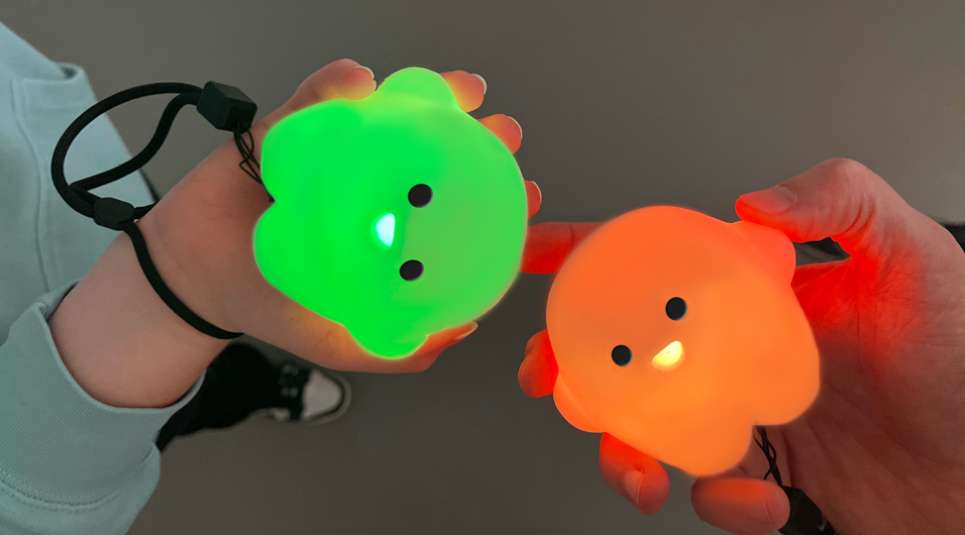
Erste Prototypen der Circulars © Deutscher Expo-Pavillon / facts and fiction
Neben der Ausstellung findet jeden Tag ein wechselndes Programm auf der Kulturbühne vor dem Pavillon statt. Die Kulturagentur VOSS+FISCHER gestaltet eine Mischung aus Musik- und Tanz-Performances, Forschungs- und Wissenschaftsmodulen, Gaming und Sport. Kulturschaffende und Einrichtungen aus Japan und Deutschland werden eingebunden, um ein möglichst ressourcenschonendes und kulturübergreifendes Bühnenprogramm auf die Beine zu stellen.
Nach dem Besuch im Pavillon können die Besucherinnen und Besucher sich dann noch im Restaurant „Oishii! Germany“ stärken. Der Betreiber 78degrees bietet eine Kombination aus traditioneller deutscher Gastfreundschaft, Weltoffenheit und der kulinarischen Vielfalt der deutschen Bundesländer. Außerdem verbindet unser Restaurant die Kulturen durch kreative Fusionen zwischen der deutschen und der japanischen Küche – hier werdet ihr mich während der Expo-Laufzeit sicherlich oft finden.
Ich würde mich freuen, viele von euch ebenfalls bei uns im Pavillon zu treffen! Bei Fragen zur Expo oder zum Deutschen Pavillon freuen wir uns über Nachrichten an unser Expo-Team.
Weiter lesen
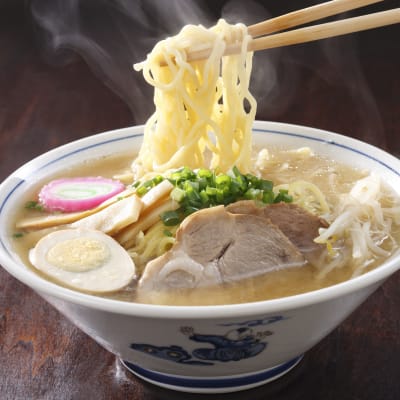
Please Choose Your Language
Browse the JNTO site in one of multiple languages
Mass IT outage: here's a list of companies and operations affected
- A huge global IT outage is disrupting flights, banks, retailers, and media outlets.
- The widespread disruptions have been linked to an issue with the cybersecurity firm CrowdStrike.
- Operations affected include airlines in the US and Europe, supermarkets, and some 911 lines.

A mass IT outage has hit flights, banks, retailers, and media outlets around the world.
The issues appear to be linked to the cybersecurity firm CrowdStrike .
Microsoft also acknowledged the issue in an X update early Friday, writing, "Our services are still seeing continuous improvements while we continue to take mitigation actions."
Here are some of the companies and operations affected.
Numerous airlines grounded flights early Friday morning, including the big three US carriers: United Airlines, Delta Air Lines, and American Airlines. In statements, they all cited technology issues.
Delta and American had both canceled their ground stops by 7 a.m. ET.
A United spokesperson told Business Insider that it was holding all aircraft at their departure airports while it works to restore systems. "Flights already airborne are continuing to their destinations," they added.
American has blamed the issues on CrowdStrike, saying they were because of a "technical issue with Crowdstrike that is impacting multiple carriers," according to BBC News.
The budget airlines Frontier, Allegiant, and Spirit also issued ground stops which were later canceled.
Frontier's was issued on Thursday night. "Flight operations are currently being impacted by a major Microsoft technical outage," it said in a statement.
Spirit said it was unable to rebook affected customers because of the outage.
Disruption also extended to Europe. The continent's largest airline, Ryanair, advised passengers to arrive early as the outage caused "disruption across the network."
KLM also said it had to "largely suspend operations" as the outage made "flight handling impossible."
British Airways, Wizz Air, Turkish Airlines, Eurowings, Lufthansa, and Qantas were also among those who said they were affected.
According to a Facebook post from Alaska State Troopers , emergency lines in the state are also affected.
The post said: "Due to a nationwide technology-related outage, many 911 and non-emergency call centers are not working correctly across the State of Alaska."
"We appreciate your patience and will update you when we know more," the statement added.
The major UK airports Heathrow, Gatwick, and Luton have reported issues, with some warning of delays and disruption.
Related stories
An X post from Gatwick Express , a train service for the airport, said the company was unable to access driver diagrams at certain locations, "leading to potential short-notice cancelations, particularly on the Thameslink and Great Northern networks."
A spokesperson for Belfast International Airport confirmed to BI that whiteboards were being used to handwrite flight information before systems were later restored. Whiteboards were also used at Singapore Changi Airport.
Hospitals and doctors' surgeries
Several hospitals and doctors' practices appear to have been affected by the outage.
In the UK, the NHS' EMIS system, which doctors use to book appointments, view patient notes, order prescriptions, and make referrals, appears to be having issues .
A spokesperson for the NHS told BI in a statement: "The NHS is aware of a global IT outage and an issue with EMIS, an appointment and patient record system, which is causing disruption in the majority of GP practices."
They said that long-standing measures were in place to manage disruption and that there was no known impact on 999 or emergency services, so people should use these services as normal.
"Patients should attend appointments unless told otherwise and only contact their GP if it's urgent, and otherwise please use 111 online or call 111," they added.
Two German hospitals canceled elective operations scheduled for Friday, Reuters reported.
NYCT Subway
Commuters in New York City and DC may also face delays Friday morning.
In an X post, the NYCT subway said: "Train arrival information is unavailable for A/B/C/D/E/F/G/J/M/N/Q/R/Z/Rockaway Park Shuttle/Franklin Av Shuttle due to a worldwide technical outage. Train service is unaffected."
The post said the tech outage also impacted Subway officials' ability to see train locations.
Broadcasters
Sky News also appears to have been hit by the outage. The UK news channel has been showing archive footage and briefly displaying an error message.
The news site appears to be up and running at the time of writing.
London Stock Exchange
The London Stock Exchange's website was also experiencing issues.
"RNS news service is currently experiencing a third-party global technical issue, preventing news from being published on www.londonstockexchange.com ," the company said in a statement.
"Technical teams are working to restore the service. Other services across the group, including London Stock Exchange, continue to operate as normal," it continued.
Retailers and fast-food giants
Bloomberg reported that McDonald's Japan suspended about a third of its stores in the country on Friday. The issue was with the stores' cash registers, the report said.
The grocery-store chain Woolworths told BI that some stores had "been impacted as a result of the global IT issue." All but six stores were open for business, but some had fewer functioning checkouts.
Delivery delays
FedEx and UPS are warning of delivery delays because of the outage.
In a statement on the company's website , FedEx said it was experiencing "substantial disruptions throughout our networks due to a global IT outage experienced by a third-party software vendor." The company said parcels due to be delivered on Friday might face delays.
A UPS spokesperson told BI that it continues to operate effectively but there may be some service delays due to third-party outage "impacting some UPS computer systems in the U.S. and Europe."
Some US state driver services are down
Drivers in some states are unable to access services because of the outage.
Georgia's Department of Driver Services posted on X that "due to the global Microsoft/Crowdstrike outage, DDS services are unavailable at this time."
Tennessee's Department of Safety and Homeland Security said some Driver Services Centers may not be able to process transactions, according to a post on X.
North Carolina's Department of Motor Vehicles driver license and plate agencies are also impacted and unable to assist customers, according to a CNN report.
Bloomberg reported that at the Ocean Park Marriott in Hong Kong, staff were using pen and paper to check guests in and said the outage was affecting their systems globally.
Marriott International later told CNN in a statement that "certain hotel systems" have been affected.
"We are actively working with our vendors to resolve issues that have impacted certain hotel systems," the company said in a statement to the publication. "We apologize for any inconvenience that guests may experience."
Watch: Global computer glitch grounds flights, knocks out 911
- Main content

Introducing SirDavis, Beyoncé's Debut Into the World of Whisky
The megastar has partnered with Moët Hennessy to launch a first-of-its-kind American-made whisky rooted in legacy, heritage, and luxury
The inevitable has finally arrived.
Between Beyoncé’s many lyrical references and hints dropped in Instagram posts and interviews, it was clear a new level of icon was on the horizon—we just had to trust the process and timing. “Sometimes it takes a year for me to personally search through thousands of sounds to find just the right kick or snare,” the 32-time Grammy winner told Harper’s Bazaar in 2021, a year before dropping her game-changing Renaissance album. She added, “I feel a renaissance emerging and I want to be part of nurturing that escape in any way possible. … [T]here’s nothing like the amount of love, passion, and healing that I feel in the recording studio.”
But Renaissance was just the beginning of the vocal superstar’s rebirth as a visionary. Now, kismet and opportune timing have struck again in Beyoncé’s favor—but this time like, like liquor—like, like, like liquor .
What to Shop This Week

The singer can add founder of a groundbreaking whisky brand to her long list of titles. SirDavis is a first-of-its-kind joint venture between Bey and Moët Hennessy. Earlier this summer, I was part of a select international group of journalists invited to an exclusive tasting of the new spirit with its creators: Dr. Bill Lumsden, legendary five-time International Whisky Competition Master Distiller of the Year; and whiskey blender Cameron George, Ardbeg’s former national ambassador and recently appointed global head of advocacy.
SirDavis has been years in the making, ever since Beyoncé—a longtime fan of Japanese whiskies—reached out to Moët Hennessy for help crafting a trailblazing whisky with a unique flavor profile that mirrored her own palate. At the same time, Moët Hennessy had been exploring ways to deepen its presence in the American whiskey market, and voilà—the serendipitous timing resulted in a dynamic new partnership. Beyoncé worked heavily with the crème de la crème of the whiskey world to nail the recipe, keeping it true to her identity and taste without jeopardizing the quality. Much as Renaissance and last spring’s follow-up, Cowboy Carter , have done, SirDavis aims to redefine our idea of American whiskey while also welcoming new drinkers into the world of luxury spirits. The launch of SirDavis follows other entrepreneurial ventures from the singer over the last year, including her perfume Cé Noir and her haircare line, Cécred .
“I’ve always been drawn to the power and confidence I feel when drinking quality whisky and wanted to invite more people to experience that feeling,” says Beyoncé about her latest venture. “When I discovered that my great-grandfather had been a moonshine man, it felt like my love for whisky was fated. SirDavis is a way for me to pay homage to him, uniting us through a new shared legacy. In partnering with Moët Hennessy, we have crafted a delicious American whisky that respects tradition but also empowers people to experience something new and unique in the category. You can taste it better than I could ever tell you — welcome, SirDavis.”

The whisky also makes history as Moët Hennessy’s first American spirit brand developed entirely in-house Stateside: In a nod to Bey’s Lone Star State roots, SirDavis is headquartered in her hometown of Houston, and finished, blended, and bottled in Texas. It has an international flair as well, though, like Queen Bey herself, as an American whisky . Traditionally, grain spirits made in Scotland, Canada, and Japan drop the e , while beverages distilled in the United States or Ireland use it. But in keeping with her global star power and penchant for bucking the conventional, Beyoncé has opted to present SirDavis as a whisky, no e . (SirDavis is also finished in Pedro Ximénez sherry casks, a common practice in scotch whisky production and a nod to—or fun jab at—purists.)
The SirDavis narrative and brand are imbued with a strong sense of place, thanks to Beyoncé’s Southern heritage. In the chorus of Cowboy Carter ’s “Ameriican Requiem,” she proudly sings that she is the “grandbaby of a moonshine man,” and the whisky is named in honor of her paternal great-grandfather Davis Hogue, a farmer and moonshiner in the South during Prohibition. He stashed whiskey bottles in the empty knots of cedar trees for loved ones to find and enjoy. In other words, being part of America’s whiskey scene is literally in Bey’s DNA.
I’d be remiss if we didn’t walk down memory lane recalling the times Beyoncé has mentioned whiskey, in lyrics as well as on social media. In April, Beyoncé shared an Instagram post showing herself and husband Jay-Z at a Japanese whisky tasting. A video featured footage of Glencairn glasses holding drafts of prestigious Japanese single-malt brands, including Yamazaki and Hakushu 18, as well as bottles labeled “Mystery” in the lineup. She has also referenced Yamazaki in several songs, including “6 Inch,” featuring the Weeknd, on which she sings: “Her Yamazaki straight from Tokyo.” On “Lovehappy,” from the 2018 album she and Jay-Z released as the Carters, she mentions “sipping Yamazaki on the rocks.” And in September 2015, the Daily Mail reported that the singer had indulged in some Yamazaki 18 on the rocks on an extravagant dinner date. So, bottom line: Bey’s been about that whisky life.
In an evolution from American whiskey category norms, the SirDavis mash bill—the recipe that specifies the type and percentage of grains used to make the spirit—includes 51 percent rye and a notable 49 percent malted barley. Master distiller Lumsden mentioned that he, blender George, and Beyoncé tried several American and Irish whiskeys before landing on one “which was uniquely hers.”
“We could have played around and mixed scotch and Japanese whisky together, but I think that would have been disingenuous,” Lumsden said. “That’s why we sourced and found this unusual mash bill of already quite mature whisky. After many tasting meetings and recipe trials, she very much approved this final mash bill.” Yet, he says, the three of them still “all felt there was still something slightly missing to make it perfect, not just in taste but also the texture and mouthfeel.” Lumsden then combined some traditional whisky-making techniques to re-create the silkiness of Bey’s favorite scotches and Japanese whiskies—such as finishing SirDavis in the aforementioned Pedro Ximénez casks, to reveal more dark red fruit and baking spice notes—while preserving the robust flavors characteristic of classic American rye.
SirDavis has a pristine, tawny hue (thanks to that sherry-barrel finish), and the nose is an alluring blend of cinnamon and clove, with a faint hint of oak. The crispy bite of a cinnamon stick greets my palate upon first sip, before a crescendo into a more nuanced drinking experience, with waves of spicy heat. The velvety mouthfeel is complemented by a note of rich orange marmalade atop a buttery shortbread cookie, before rounding out with a subtle, sweet honey finish. It’s a sophisticated pour in which you can taste each intentional influence. And before you think I waxed poetic about SirDavis in my tasting notes merely because of Bey’s involvement, let me say that I made my those notes before being informed of the mastermind behind it.

I am also not the only whisky pro to testify to SirDavis’s supreme quality and taste. It was anonymously submitted to numerous prestigious spirits competitions before its launch and won multiple accolades, including Best of Class for American Whiskey at the 2023 SIP Awards, where it outperforming over 100 other entries in the category. Other distinguished honors include a gold medal (95 points) at the 2023 New York International Spirits Competition and a 93-point rating at the 2023 Ultimate Spirits Challenge.
Cameron George said, “This partnership came about very, very organically. It wasn’t as if Dr. Bill [Lumsden] had gone away and just sourced some whisky, and then we slapped [Beyoncé’s] name onto it—that’s not how this process worked at all. She is the founder of this brand. She’s had her hand in every piece of this brand, from the liquid profile to the brand world development.” Bey also lent her innovative artistic direction to the luxurious bottle: a tall, striking, ribbed glass vessel with intentional design elements, such as the black medallion bearing a majestic bronzed horse, illustrative of strength, confidence, and grace, as well as symbolizing the star’s Texas roots.
“There’s no question this whisky has Mrs. Knowles-Carter’s DNA in it,” Lumsden said. “And I felt that it was critically important to give the product gravitas and authenticity. So, this is her whisky.” I don’t like to gamble, but if there’s one thing I’m willing to bet on, it’s myself—and Beyoncé’s powerful prowess, cemented by her commitment to live authentically. And really, what more could you ask for in this life than to enjoy a good whisky in good company authentically? I’ll drink to that.
SirDavis is now available for preorder at sirdavis.com , and will be available in September at retailers across the United States, in select airports, and at stores in London, Paris, and Tokyo.

Travel & Food

Your Official Travel Guide to Nantucket

Five Resorts That Do Regenerative Tourism Right

Book Your Next Vacation in a Luxury Cave

Laila Gohar Unveils a 200-Inch Cake

Sophia Roe Is Fighting for a Better Food Industry

Bazaar Editors’ Favorite Hotels in the World

The Bazaar Guide to New Orleans

These Hotels Are Great for Eco-Conscious Travelers

Pacaso Rethinks How to Own Your Dream Home

The 40 Best Luxurious Hotels in New York City
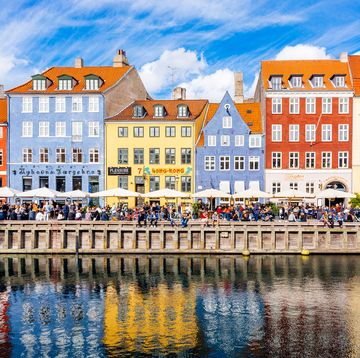
The Best Things to Do in Copenhagen
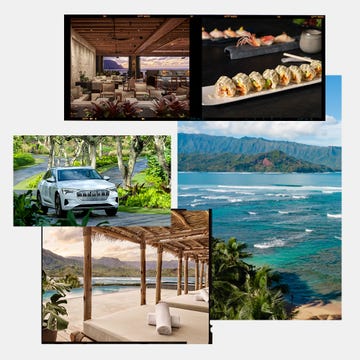
In the Driver's Seat: Four Days in Kauai, HI

IMAGES
VIDEO
COMMENTS
We include some of those activities in this guide. But our real focus in this Japan travel blog is to focus on unique food experiences, those experiences that make Japan unique. This includes food tours, sake tastings, and plenty of recommendations on where and what to eat in Japan.
Welcome to my RyuKoch Japanese food and Japan travel blog ! Here it's all about the fascinating world of Japanese culinary and travel tips for unforgettable experiences in Japan. Get inspired by traditional and trendy Japanese recipes as well as valuable tips for your next stay in the land of the rising sun.
Combine your sightseeing with some of Tokyo's best food experiences! From seafood and ramen to street food and sweet snacks, this mouthwatering itinerary is a must for all foodies visiting Japan
Preparing for your next trip to Japan? Get your tastebuds ready and find out exactly what to eat in Japan with our detailed guide. You'll be fully prepared to overload on an incredible culinary adventure of Japanese from ramen to sushi and beyond!
Read our foodie guide on popular Japanese food, and find a variety of dishes based on fresh seasonal and regional product, with an emphasis on seafood.
Kiraku: Tasting The Best Okonomiyaki and Teppanyaki in Kyoto Depending on where we travel in Japan, we would decide whether to eat dinner in the hotel or explore what the city has to offer. If we are in a remote area then we would book ryokan with dinner, but in Kyoto, we knew we had to try the city's many food offerings.
Foodie Adventures in Japan. Slurp soba, sip matcha, munch mochi and savour the freshest sushi in all the land. Welcome to Japan, the Land of the Rising Sun! Japan has always been sky high on the travel bucket list. As a country of contrast, it's a fascinating blend of old-world history and tradition with vibrant, fast-paced modernity.
10 Best Foodie Destinations in Japan Mao Goto is a Japanese freelancer who was born in Hayama, Kanagawa prefecture, and raised in Tokyo. Since 2016 she lives in the Taito Ward, home to a lot of Japanese culture hotspots such as Asakusa, Akihabara, and Ueno. She has been interested in the field of English education in Japan and got her Master's degree in March 2020. A lover of photography ...
Top best foods to eat in Tokyo! From iconic street food to best sushi to cheap eats, these are the unmissable foods you must try when visiting Tokyo.
Founded in 2011 by Namiko Hirasawa Chen, Just One Cookbook is the world's largest English-language Japanese recipe website.
Here are my suggested Japan itineraries for first-time visitors. They can help you plan your trip, save money, and have fun!
Japanese Food Tour in Tokyo, Japan: Ultimate Guide 🇯🇵 Chad and Claire 82K subscribers Subscribed 5K 424K views 1 year ago TOKYO
This Tokyo travel guide will tell you everything you need to know to plan your trip. Learn when to go, where to stay, what to do, where to eat, and more.
ソウルフードやローカルフードを中心に老舗や地元の名物料理と人気店を食べ歩きます。流行よりも伝統と歴史を重視する極主観的的クチコミレビューと旅行記ブログ。英語併記(練習中) 。Gourmet review and travel blog focusing on local foods, soul foods and heritage restaurants in Japan, written by a real Japanese foodie.
This ambitious (and effective) itinerary for 2 weeks in Japan is perfect for cherry blossom season (or any season!), and mixes classic experiences with off-beat adventures! See how to visit 12 cities in 14 days without breaking a sweat.
From temples in Kyoto to street food in Osaka and themed cafes in Tokyo - here's my ultimate Japan travel guide to help you plan your trip!
A Foodie's Guide to Traveling Across Kyushu. Jan. 22, 2024. Sarah Sommer. Join us on a culinary journey through hidden gems on Japan's southern island of Kyushu ! Through the power of food, uncover Nagasaki's...
Let's check out our Takayama travel blog (Takayama blog) with the fullest Takayama guide (Takayama travel guide) from how to get there, best time to come, where to stay, best places to visit and top things to do to find out the answer!
Japan Travel Blog for 2024/25 • Travelling to Japan? Learn how to DIY, see popular sights without crowds, etiquette, food, language & more!
Kyoto is beautiful. If you're visiting Japan for the first time, then this Kyoto travel guide will tell you all you need to know to plan your trip.
These places serve authentic Japanese cuisine that will make your taste buds dance. Nishiki Market Nishiki Market, often called "Kyoto's Kitchen," is a bustling marketplace filled with stalls offering fresh seafood, pickles, and sweets. Try the tamagoyaki (Japanese omelet) or yuba (tofu skin) for a unique brunch experience. Gion Tsujiri
Traveling from Tokyo to Nagoya can be an exciting part of your trip to Japan, offering you various options depending on your time availability, budget, and preferences.The Tokyo to Nagoya bullet train and Tokyo to Nagoya Shinkansen are key travel options known for their speed, convenience, and efficiency.
Local Street Food; Japan's Local Ekiben; Yakitori; Japanese Whisky; Vegetarian and Vegan Guide; ... Planning a Trip to Japan? Share your travel photos with us by hashtagging your images with #visitjapanjp. Japanese Film Festival 2024. ... Travellers Blog (14) Travel Advisory (13) Indulgence (8) Relaxation (4) Previous Article; Back to Overview ...
Customs in Japan are serious stuff. Here's what to know about talking, eating and boarding a train that may not be obvious even to well-seasoned travelers.
TOKYO, JAPAN - JUNE 29: A box of chocolates contains a piece decorated with a URL written in ...[+] two-dimensional code on June 29, 2006 in Tokyo, Japan. The chocolate is co-developed by Mary ...
The membership-based warehouse retailer from the U.S. is only about a 45-minute drive from Camp Foster. This is the 35th store to open in Japan and the first on Okinawa. Shoppers can expect a variety of Japanese grocery items like bulk miso soup, cases of green tea and more, as well as a selection of American products the warehouse is known for.
Discover Japan's quirky capital. ... Budget eats are on the cards thanks to cheap street food and chain restaurants with set menus. Supermarkets are a great place to pick up an edible bargain too. ... Choose our checked baggage option and you can travel with hand baggage and two 23kg bags checked into the hold, plus enjoy free seat selection ...
16.08.2024 Annika Belisle arbeitet seit 2022 im Team des Deutschen Pavillons für die Expo 2025 Osaka.Ihr Arbeitgeber Koelnmesse verantwortet im Auftrag des Bundesministeriums für Wirtschaft und Klimaschutz (BMWK) die deutsche Beteiligung an der Weltausstellung in Japan.
Retailers and fast-food giants. Bloomberg reported that McDonald's Japan suspended about a third of its stores in the country on Friday. The issue was with the stores' cash registers, the report said.
A video featured footage of Glencairn glasses holding drafts of prestigious Japanese single-malt brands, including Yamazaki and Hakushu 18, as well as bottles labeled "Mystery" in the lineup.